|

|
|
AGENDA
Council Meeting
|
|
I hereby give notice that a Meeting of the Kapiti
Coast District Council will be held on:
|
|
Date:
|
Thursday, 10 December
2020
|
|
Time:
|
9.30am
|
|
Location:
|
Council Chamber
Ground Floor, 175 Rimu Road
Paraparaumu
|
|
Wayne Maxwell
Chief Executive
|
|
Council
Meeting Agenda
|
10 December 2020
|
Kapiti Coast District Council
Notice
is hereby given that a meeting of the Kapiti Coast District Council will be
held in the Council Chamber,
Ground Floor, 175 Rimu Road, Paraparaumu, on Thursday 10 December 2020, 9.30am.
Council Members
|
Mayor K Gurunathan
|
Chair
|
|
Deputy Mayor Janet Holborow
|
Deputy
|
|
Cr Angela Buswell
|
Member
|
|
Cr James Cootes
|
Member
|
|
Cr Jackie Elliott
|
Member
|
|
Cr Gwynn Compton
|
Member
|
|
Cr Jocelyn Prvanov
|
Member
|
|
Cr Martin Halliday
|
Member
|
|
Cr Sophie Handford
|
Member
|
|
Cr Robert McCann
|
Member
|
|
Cr Bernie Randall
|
Member
|
2 Council
Blessing
“As we deliberate on the
issues before us, we trust that we will reflect positively on the
communities we serve. Let us all seek to be effective and just, so that with
courage, vision and energy, we provide positive leadership in a spirit of harmony
and compassion.”
I a mātou e whiriwhiri ana
i ngā take kei mua i ō mātou aroaro, e pono ana mātou ka
kaha tonu ki te whakapau mahara huapai mō ngā hapori e mahi nei
mātou. Me kaha hoki mātou katoa kia whaihua, kia tōtika
tā mātou mahi, ā, mā te māia, te tiro whakamua me te
hihiri ka taea te arahi i roto i te kotahitanga me te aroha.
3 Apologies
4 Declarations
of Interest Relating to Items on the Agenda
Notification from Elected
Members of:
4.1 – any interests that
may create a conflict with their role as an elected member relating to the
items of business for this meeting, and
4.2 – any interests in
items in which they have a direct or indirect pecuniary interest as provided
for in the Local Authorities (Members’ Interests) Act 1968
5 Public
Speaking Time for Items Relating to the Agenda
6 Members’
Business
(a)
Public Speaking Time Responses
(b)
Leave of Absence
(c)
Matters of an Urgent Nature (advice to be provided to the Chair prior to
the commencement of the meeting)
7 Mayor's
Report
Nil
8 Updates
8.1 Representation
Review Preparation
9 Reports
9.1 Takutai
Kapiti: Officer's report to accompany co-design working group report.
Author: Lyndsey
Craig, Coastal Manager
Authoriser: Sean
Mallon, Group Manager Infrastructure Services
Purpose of Report
1 This
report accompanies the Takutai Kāpiti Co-Design Working Group report
(Appendix One).
2 This
report supports recommendations outlined in the Co-Design Working Group report
with regard to:
2.1 Community
Assessment Panel design;
2.2 Community
Assessment Panel scope;
2.3 Takutai
Kāpiti project governance; and
2.4 Community
Assessment Panel appointment process.
3 This
report seeks:
3.1 Council
approval of the Community Assessment Panel composition recommended in this
Officer’s report.
3.2 Council
approval of the revised Community Assessment Panel fees recommended in this
Officer’s report.
Delegation
4 The
Council has the delegated authority to consider this matter.
Background
5 The
Takutai Kāpiti Project (The Project) involves establishment of a Community
Assessment Panel (CAP) consisting of iwi, community and other key
stakeholder’s/agency representatives to consider the Districts response
to the impacts of climate change on the coast.
6 To
provide advice to Council on the proposed make up and scope of work associated
with the CAP, a Co-Design Working Group (Working Group) was established in May
2020. This group was also to participate in the evaluation and procurement of Coastal
Science and Engineering Services for The Project.
7 The
background and membership of the Working Group is set out in the accompanying
Working Group report. The Working Group developed and agreed upon a Terms of
Reference (Appendix Two). This outlines the key group outputs and a consensus
decision making model for reaching agreement on those matters.
Issues
8 The
recommendations outlined in the Working Group report were reached by consensus,
with the exception of CAP composition. Further consideration of this matter is
provided in the Tangata Whenua section of this Officer’s report.
9 The
Working Group report recommends payment for CAP members. However, the
recommended figures do not align with the current Council fees framework for
non-elected members. Consideration of this matter is outlined in the Financial
section of this report.
10 The
Working Group initially discussed a three-Panel design for the CAP. A
multiple-panel model could not be delivered for The Project due to the
additional cost implications and impact on the overall timeframe. As such
discussions with the Working Group proceeded on the basis of a single-panel
model.
11 The
Project will utilise the single-panel approach to provide:
· District-wide
overview and consistency.
· Scope to allow the
CAP to work by sub-topic, rohe, catchment, and geographic location (as deemed
appropriate), based upon the specialist advice received.
· Flexibility to
meet outcomes sought through a multi-panel approach.
Considerations
Policy
considerations
12 The
CAP does not have authority for making policy decisions. The CAP will provide
opinion and recommendations to Council on coastal adaptation options for
consideration.
13 The
recommendations should also help guide the future development of District Plan
provisions to manage coastal issues and an approach for the district dealing
with coastal hazards.
Legal
considerations
14 Council
has signed agreements between Coastal Ratepayers United (CRU) and North
Ōtaki Beach Residents Group (NOBRG), in settlement of both groups’
claims, with regard to coastal hazard provisions in the District Plan.
15 These
agreements both contain obligations by Council to:
15.1 engage
with and involve the community early (including the two parties to the
agreements) in the process of addressing coastal hazards;
15.2 evaluation
of a range of options for coastal hazard management;
15.3 consultation
with the community in relation to proposed management responses to the coastal
hazard problem(s) identified; and
15.4 prior
to formally notifying a coastal hazards plan under Schedule 1 of the Resource
Management Act, release a draft for public consultation.
16 It
isn’t possible to eliminate completely the risk of further legal
challenge being sought, however, the Council’s legal advice is that there
is very low prospect of either party being able to successfully challenge the
current process.
17 The
current process has allowed for:
17.1 Working
to establish iwi involvement and partnership;
17.2 Establishing
a work programme to meet the objectives of a community-led coastal adaptation
project (in line with central government guidance);
17.3 To
ensure robust and comprehensive community engagement in line with commitments
made in the agreements with NOBRG and CRU (as outlined above); and
17.4 The
pre-planning phase, involving NOBRG and CRU, which has culminated in the
Working Group report and recommendations which this paper accompanies.
Financial
considerations
18 The
Working Group report recommends payment of the Chair and CAP members. Should
Council approve this recommendation, Officers advise that the amounts payable
be adjusted in line with the current fees framework for non-elected members.
19 A
breakdown of these costings for the CAP process are outlined in the table
below.
|
Position
|
Working Group recommendations
|
Officer report recommendations
|
|
Chair x 2 (meeting attendance and preparation)
|
$750
|
$575
|
|
Member x 12 (meeting attendance and preparation)
|
$120
|
$206
|
|
TOTAL (based upon 12 meetings)
|
$35,280
|
$43,464
|
20 Reimbursement
of expenses would be paid in addition to the meeting fees.
Tāngata
whenua considerations
21 In
early- 2020 an ART Coastal Advisory Group (ARTCAG) with one representative from
each of the ART Confederation iwi was established.
22 The
ART Confederation represents the three iwi with mana whenua interests in the
Kāpiti District.
23 The
purpose of the ARTCAG was to make decisions on behalf of the ART Confederation
relating to the CAP Design.
24 An
ARTCAG representative attended the Working Group meetings until June 2020. The
remaining Working Group meetings proceeded with input from Ngāti Toa
representatives and Ngā Hapū o Ōtaki representatives with the
exception of the October meetings, at which no iwi representatives were able to
attend.
25 The
representative of ARTCAG advocated for establishment of three-Panels and
balanced iwi representation.
Number of
Panels
26 The
rationale provided for three-Panels was to allow for a rohe/ catchment approach
whereby Iwi Panel members are not placed in a situation of being considered
decision-makers for other iwi coastal areas.
27 This
was considered particularly important given the Marine and Coastal Area Act
(MACA) claims that each of the three iwi have made in regards to their Takutai
Moana and that a single-Panel approach is inconsistent with their
Rangatiratanga to their respective coastal marine area.
Iwi Panel member representation
28 The
number of representatives suggested in the Working Group paper shows iwi as a
minority number (4 alongside 6- 8).
29 Given
the single-Panel approach, an iwi representative may find themselves as the
sole mandated mana whenua representative on decisions impacting their rohe,
amidst multiple representatives from Crown agencies, the community and other
iwi. Increased iwi CAP member representation would address this concern.
30 The
Resource Management Act and New Zealand Coastal Policy Statement highlight the
need for recognition and provision for the relationship of Māori with
their coastal and freshwater taonga.
31 Diversity
and alignment of community, iwi/ hapῡ and stakeholder values as part of a
public engagement process, is also an important approach identified in the
Coastal Hazards and Climate Change guidance for Local Government, produced by
The Ministry for the Environment.
Single-Panel approach and iwi representation
32 A
multiple-Panel model could not be delivered for The Project due to the additional
cost implications and impact on the overall timeframe. It was also considered
that a single-Panel approach could be structured in a way, so as to mitigate
some of the iwi concerns raised.
Te Whakaminenga of Kāpiti
33 Iwi
representatives were unable to attend the October Working Group meetings and
Council officers attended a meeting of Te Whakaminenga o Kāpiti (TWoK) to
discuss next steps with regard to the The Project on 24 November 2020.
34 TWoK
is a pan-iwi advisory group to Council and consists of mandated iwi
representatives from Ngāti Toa Rangatira and Ngā Hapῡ o
Ōtaki.
35 At
that TWoK meeting the following Panel representation recommendation was
supported:
|
Community
Assessment Panel Composition
|
|
CAP Members:
Speaking & voting rights
|
Maximum number
|
CAP Observers:
No voting rights
|
Maximum number
|
|
Chair
Kaumātua
Residents/ Community
Iwi
Department of Conservation (DOC) (Asset
interests)
GWRC (Asset Interests)
KCDC (Asset Interests)
|
1
1
6
6
1
1
1
|
GWRC: Climate change portfolio holder
Councillor Nash
KCDC: Climate change portfolio holder
Councillor Handford
KCDC Kaumātua
Other Community Board (CB) Members
|
1
1
1
4 (1 from each CB)
|
|
TOTAL
|
17
|
TOTAL
|
7
|
36 Council
officers circulated this updated table with the Working Group following the
TWoK meeting, asking for feedback and indication of approval.
37 As
consensus was not received from all Working Group representatives, the table of
CAP composition was not updated in the Working Group report.
38 Council
officers recommend that the CAP composition model presented in this Officers
report at paragraph 35 is adopted for The Project.
39 It
is also considered a model more reflective of the status of our Kāpiti
Mana Whenua as Tiriti partners.
Significance and Engagement
Significance
policy
40 This
matter has a moderate degree of significance under Council’s Significance
and Engagement Policy.
Engagement
planning
41 A
communication and engagement plan is being developed for the next phase of the
The Project.
42 This
will include promotion of the next phase of The Project, advertising and
recruitment of CAP members as well as ongoing project updates and publication
of CAP agendas and minutes.
43 It
will utilise a number of approaches including the dedicated Takutai Kāpiti
website, Council social media channels, local media and attendance of Officers
at planned Council events.
Publicity
44 Council’s
decision will be publicised through the usual communication channels.
|
Recommendations
45 That
Council approve the recommendations outlined in the Co-Design Working Group
report with regard to:
45.1 Community
Assessment Panel design;
45.2 Community
Assessment Panel scope;
45.3 Takutai
Kāpiti project governance; and
45.4 Community
Assessment Panel appointment process.
46 That
Council approves the Community Assessment Panel composition recommended in
this Officers report at paragraph 35.
47 That
Council approves the revised Community Assessment Panel fees in line with the
current Council fees framework for non-elected members.
|
Appendices
1. Appendix
One: Co-Design Working Group Report ⇩ 
2. Appendix
Two: Co-Design Wokring Group ToR ⇩ 
|
Council
Meeting Agenda
|
10 December 2020
|












|
Council Meeting Agenda
|
10 December 2020
|














9.2 Reports
and Recommendations from Standing Committees and Community Boards
Author: Tanicka
Mason, Democracy Services Advisor
Authoriser: Janice
McDougall, Group Manager People and Partnerships
Purpose of Report
1 This
report presents reports and recommendations considered by Standing Committees
and Community Boards from 4 September 2020 to 24 November 2020
Background
2 Meetings
took place on the following dates:
|
Grants Allocation Subcommittee (Districtwide Facilities
for Hire Remission)
|
17 September 2020
|
|
Ōtaki Community Board
|
22 September 2020
|
|
Strategy and Operations Committee
|
24 September 2020
|
|
Audit and Risk Subcommittee
|
24 September 2020
|
|
Waikanae Community Board
|
29 September 2020
|
|
Paekākāriki Community Board
|
6 October 2020
|
|
Paraparaumu-Raumati Community Board
|
13 October 2020
|
|
Grants Allocation Subcommittee (Creative Communities
Scheme)
|
22 October 2020
|
|
Strategy and Operations Committee
|
5 November 2020
|
|
Ōtaki Community Board
|
10 November 2020
|
|
Audit and Risk Subcommittee
|
12 November 2020
|
|
Waikanae Community Board
|
17 November 2020
|
|
Strategy and Operations Committee
|
19 November 2020
|
|
Paraparaumu-Raumati Community Board
|
24 November 2020
|
3 In
addition, the following meetings took place:
Te Whakaminenga o Kāpiti 29
September 2020, 24 November 2020
Older Person’s Council 30
September 2020, 28 October 2020
Kāpiti Coast Youth Council 12
October 2020
Grants
Allocation Subcommittee (Districtwide Facilities for Hire Remission)
4 Grants
Allocation Subcommittee (Districtwide Facilities for Hire Remission) met on 17
September 2020 to discuss the following:
· Applications for
Districtwide Facility Hire Remission.
Ōtaki Community Board
5 The
Ōtaki Community Board met on 22 September 2020 to discuss the following:
· Consideration of Applications for Funding.
· Confirmation of
Minutes
· Matters Under
Action
6 The
Ōtaki Community Board also met on 10 November 2020 to discuss the
following:
· PP2O Update
· Ōtaki Gorge Road intersection, construction and road
closure.
· Notice of Motion - Local Alcohol Policy (LAP)
· Notice of Motion - Ōtaki Railway Station and platform
· Consideration of Applications for Funding
· Amendments to Standing Orders for Meetings of Ōtaki
Community Board
· Ōtaki Community Board - Draft Calendar of meetings
2021
· Confirmation of minutes
· Matters Under Action
Strategy and Operations Committee
· The Strategy and
Operations Committee met on 24 September 2020 to discuss the following:
· Zeal Kāpiti
Report Back
· Draft Beach Bylaw
2021 – Approval for public consultation
· Economic
Development Kotahitanga Board
· Confirmation of
Minutes
· Confirmation of
Public Excluded Minutes
7 Strategy
and Operations Committee also met on 5 November 2020 to discuss the following:
· Local Government
Funding Agency's 2020/21 Statement of Intent
· Confirmation of
The Council's Vote at The Local Government Funding Agency's 2020 Annual General
Meeting
· The Local
Government Funding Agency 2019/20 Annual Report
· Decision on
Proposed District Plan Variation 2 - Waikanae Beach Rezoning and Amendments to
the Beach Character Setback Margin Provisions
8 Strategy
and Operations Committee also met on 19 November 2020 to discuss the following:
· Finance Report as
at 30 September 2020
· Contracts Under Delegated
Authority
· Restricting
Psychoactive Substances
· 2018-2021 Policy
Work Programme Update
· SOLGM submission
on extending the Government Procurement Rules
· Activity Reports
for the Period 1 July 2020 to 30 September 2020
· Airport Noise
Community Liaison Group - Appointment of Chairperson
Audit and Risk Subcommittee
9 The
Audit and Risk Subcommittee met on 24 September 2020 to discuss the following:
· Audit Report to
Management for the year ended 30 June 2020
· Closing Report
from Audit for the year ended 30 June 2020
· Draft Annual
Report for 2019/20
· Confirmation of
minutes
· Confirmation of
Public Excluded Minutes
10 The
Audit and Risk Subcommittee also met on 12 November 2020 to discuss the
following:
· Quarterly Treasury
Compliance Report
· Risk Management -
Business Assurance Update
· Health and Safety
Quarterly Report: 1 July 2020 - 30 September 2020
· Confirmation of
minutes
· Confirmation of
Public Excluded Minutes
· Update on
litigation status, statutory compliance issues and investigations
Waikanae
Community Board
11 Waikanae
Community Board met on 29 September 2020 to discuss the following:
· Te Moana Road
Safety Improvements
· Consideration of
Applications for Funding
· Update on Police
activity in Waikanae
· Confirmation of Minutes
· Matters Under
Action
12 Waikanae
Community Board also met on 17 November 2020 to discuss the following:
· Consideration of
Applications for Funding
· Waikanae Community
Board - Draft Calendar of meetings 2021
· Development of
Waikanae Park
· Matters Under
Action
· Update from
Greater Wellington Regional Council
· Update on Traffic
Bylaw review
· Update on
Innovative Streets funding
· Update from Nga
Manu Nature Reserve
· Confirmation of
minutes
Paekākāriki
Community Board
13 Paekākāriki
Community Board met on 6 October 2020 to discuss the following:
· Consideration of
Funding Applications
· Update on
Transmission Gully Interchange
· Confirmation of
Minutes
· Matters Under
Action
Paraparaumu-Raumati
Community Board
14 Paraparaumu-Raumati
Community Board met on 13 October 2020 to discuss the following:
· Consideration of
Applications for Funding
· Road Naming
– RM180070 Rimutaka Street - Subdivision
· Restoration of
Queen Elizabeth Park
· Verbal Update on
the SH1 Revocation Project – Rongamai Bridge to Ihakara Street
· Confirmation of
Minutes.
· Matters Under
Action
15 Paraparaumu-Raumati
Community Board also met on 24 November 2020 to discuss the following:
· Paraparaumu/Raumati
Community Board - Draft Calendar of meetings 2021
· Consideration of
Applications for Funding
· Notice of Motion -
Proposal for a Returned and Services Memorial at MacLean Park, Paraparaumu
Beach
· Coastlands Aquatic
Centre - Alison Law and Steve Millar
· Rimu Road Project
· Confirmation of
minutes
· Matters Under
Action
Te
Whakaminenga o Kāpiti
16 Te
Whakaminenga o Kāpiti met on 29 September 2020 to
discuss the following:
· Confirmation of
minutes
· Iwi feedback on
consideration of a Māori Ward
· Waitangi Day 2021
· Report on the
Independent Organisational Review and Council Officers' Response
· Matters under
action
17 Te
Whakaminenga o Kāpiti also met on 24 November 2020
to discuss the following:
· Confirmation of
minutes
· Takutai
Kāpiti: Community-led Coastal Adaption Project
· Destination
Management Plan for Greater Wellington region and Kāpiti
· Māori
Economic Development Grants 2020/2021
· Amendments to
Terms of Reference and Meeting Protocol
· Te Whakaminenga o
Kapiti matters under action
· Waitangi Day
Virtual/Online project preparations
Older
Person’s Council
18 The
Older Person’s Council met on 30 September 2020 to discuss the following:
· Welcome
and safety briefing
· Apologies
· Previous
Minutes
· Guest
Speakers
· CWB Advisory Group
Update every second month and items to take to group every other month
· Road
Safety Advisory Group Update every second month and items to take to group
every other month
· Report back from
workgroups
· Round the table
discussion
19 The
Older Person’s Council also met on 28 October 2020 to discuss the
following:
· Welcome
and safety briefing
· Apologies
· Previous
Minutes
· Discussion
regarding Chairperson
· CWB Advisory Group
Update every second month and items to take to group every other month
· Road
Safety Advisory Group Update every second month and items to take to group
every other month
· Report back from
workgroups
· Round the table
discussion
Kāpiti Coast Youth Council
20 The
Kāpiti Coast Youth Council met on 12 October 2020 to discuss the
following:
· Formal welcome to
new members
· ZEAL Update
· Councilor’s
Update
· Long Term Plan
Update
· Think Big Update
· Work Ready
Kāpiti Update
· Te
Anamata Update
· Kāpiti
Youth Support Update
· Human
Library
· Tech Help Update
· Secrets
of Kāpiti
· Kāpiti
Enviro Youth Summit
· Pride Project
· Ōtaki Pool
Heater
· Water Fountains
Update
|
Recommendations
21 That
Council approves the following recommendation:
That the Waikanae Community Board
makes available a sum of $50,000 from the Waikanae Capital Improvement Fund
to contribute to the cost of funding a modular pumptrack at Waikanae Park.
22 That
Council considers the following recommendation:
That the Ōtaki
Community Board requests that the Council prioritises a Local Alcohol
Policy for Ōtaki (or the district), the process of which
is to be started immediately at the conclusion of the Beach Bylaw
review currently underway or earlier if resources permit.
|
Appendices
Nil
9.3 Kapiti
Solid Waste Management & Minimisation Bylaw adoption
Author: Nienke
Itjeshorst, Sustainability & Resilience Manager
Authoriser: Sean
Mallon, Group Manager Infrastructure Services
Purpose of Report
1 This
report is to present Council with a summary of matters arising from the
consultation on the Draft Kāpiti Coast District Council Solid Waste
Management & Minimisation Bylaw (hereafter referred to as the Bylaw) and to
seek approval to adopt the reviewed Solid Waste Management and Minimisation
Bylaw 2021.
Delegation
2 Section
143 of the Local Government Act 2002 gives Council the power to make a bylaw.
Background
3 The Wellington Regional Waste
Management and Minimisation Plan 2017-2023 (WMMP) was adopted by each council
in the Wellington region in 2017, providing for a series of regional and local
actions to support the primary goal of reducing the amount of waste to landfill
from 600kg per person per year to 400kg by 2026.
4 The
review, implementation and enforcement of a regionally consistent Solid Waste
Management and Minimisation Bylaw (Bylaw) is the primary action for both the
regional action plan, and each council’s local action plans.
5 Over
the last three years, councils in the Wellington region have worked
collaboratively to develop a regionally consistent Bylaw to resolve the key
issues that all Councils wanted to address in the Bylaw review:
· The upward trend
in waste generated per person per year;
· The need to reduce
construction and demolition (C&D) waste;
· Managing and
minimising waste generated at public events;
· Provision of waste
management and services at multi-unit developments;
· Littering and
public nuisance caused by unaddressed mail and advertising; and
· Waste data
reporting.
6 Each
council in the Wellington region has now consulted on the proposed Bylaw,
except for the three Wairarapa councils who have started consulting for 4 weeks
at the end of October. The Wairarapa Councils however have considered the
feedback from the rest of the region received through the submissions, and have
incorporated the regionally consistent themes into their statement of proposal
for adoption in anticipation of similar feedback from their local community.
7 It
is the intention that all councils will deliberate and adopt their respective
Bylaws to come into force before the end of February 2021, except for the
clauses for which another time frame has been included in each of the Bylaws.
8 All
Councils except for Kāpiti are adopting that the licensing of collectors
and operators comes into force after 24 months. As Kāpiti already licenses
its collectors and operators, this requirement will come into force
immediately.
Kāpiti is also implementing the events waste management clause earlier
than other Councils (after 6 months instead of 12 months) as a similar clause
already exists in the current 2010 Solid Waste Bylaw and most larger events
already implement the zero waste events approach. Clause 12 Multi-Unit
Developments requirements comes into force after 6 months.
9 With
regard to the implementation of the requirement to submit a Waste Management
and Minimisation Plan for building projects over a certain $ value (clause 14),
Kāpiti is not setting a timeframe for when this requirement come into
force, until recovery options for this waste stream have been developed and
implemented in the District. This project is part of the strategic waste
working programme and will include engagement with stakeholders, also with
regard to the $ value threshold to be set in Kāpiti. It is envisaged that
within three years from now, this will be brought back to Council for decision
making and implementation.
10 Each
council will manage the local aspects of the implementation, and the
regionally-consistent aspects will be managed by the regional advisor on behalf
of the eight councils.
DISCUSSION AND recommendation
Discussion
11 Consultation
of the Bylaw started on 7 August and closed on 11 September 2020.
Kāpiti
District submissions
12 Kāpiti
received 27 submissions during public consultation which have been provided to
Council during the Council meeting of 29 October. Overall support for the Bylaw
including the new provisions was high with 96% in agreement.
13 A
summary report of the 27 submissions received in Kāpiti it attached to
this report as Appendix 1. The submitters will receive a separate
reply to any questions, queries or suggestions they have made in their
submission, of which a number do not relate directly to the Bylaw clauses as
such but addressed wider ‘waste services and recycling concerns’.
14 Suggestions
were made with regard to services that are either already in place (education)
or are being developed (construction & demolition waste options) or
trialled (foodwaste and public recycling bins) at the moment. Three submissions
mentioned the need to accompany the Bylaw with a strong enforcement regime. In
the next few months a report will be brought to Council to further consider
enforcement of littering/illegal dumping.
15 No
feedback was provided in the 27 submissions with regard to the proposed
Controls based on Clause 7 of the Bylaw and set out in Schedule 1 of the Bylaw.
Regional submissions
16 Five
of the eight Councils in the region including Kāpiti have now completed
their consultation phases. A total of 241 submissions was received across the
region, the majority of these were received by Wellington City Council.
|
Kāpiti
|
Porirua
|
Wellington
|
Hutt City
|
Upper Hutt
|
Wairarapa
|
|
27
|
2
|
167
|
37
|
9
|
consulting
|
17 Each
council’s consultation document asked a very similar series of questions,
this was to enable submissions and submissions themes to be compared
regionally.
Overall support for the Bylaw
was high across the five councils. Notable themes in the submissions were;
a. Overall
support for licensing of waste collectors and operators;
b. Strong
support for the requirement of waste planning for events, including requests to
make the provision stronger and include more events;
c. Strong
support for the provisions related to construction & demolition waste; and
d. Support,
particularly in Wellington for provisions to control unaddressed mail and
advertising material.
18 The
Regional Officers Group discussed the submissions themes and suggestions/questions
that had been put forward in the submissions and agreement was reached on
proposing a few amendments to the draft Bylaw. These amendments were discussed
with the Joint Committee members of each council and feedback was again
discussed in the regional group, leading to agreement on the proposed
amendments to maintain regional consistency. In addition to these proposed
amendments a small number of grammatical edits were made that have no bearing
on the content of the Bylaw.
An overview report was prepared
by the Regional WMMP Advisor and this provides;
· The recommended
amendments to four clauses (in detail) of the draft Bylaw that will be made by
all Councils;
· Regional themes
that led to the proposed amendments;
· Additional
actions/engagement with regard to implementation;
· Regional response
statistics of the consultation; and
· A summary of
stakeholders and individual feedback.
The overview report is attached to this report as Appendix 2.
Amendments
19 The
four clause of the Bylaw where amendments are proposed are
Clause 6 – Interpretation
(of Event)
Clause 12 Multi-Unit
Developments (MUDs)
Clause 13 Events
Clause 14 Construction &
Demolition Waste
20 In
Clause 6 Interpretation, the definition of Event was amended to include indoor
events as well as outdoor events, and only exclude private indoor functions and
regularly occurring recreational indoor activities such as weekly sports events
from the requirement of submitting a waste management and minimisation plan for
the event. The threshold to trigger an event to be significant and require the
WMM plan remains at 1,000 visitors of the duration of the event, for both
outdoor and indoor events.
21 In
Clause 12 Multi-Unit Developments organic material was added as a waste stream
that needs to be considered when designing for adequate provision for
management of all waste streams within the premises. A reference to the waste
hierarchy (reduce, reuse, recycle, dispose) was also added to this clause to be
taken into account when considering waste minimisation implementation in MUDs.
22 Clause
13 Events was amended to include reference to the use of reusable systems and
to avoidable waste in addition to diverting waste and recycling. The term for
submission of the plan was also extended from 10 days to 30 days before an
event which is more in line with other decision making time frames around an
event and also allows staff to support the organiser with putting the plan
together.
23 Amendments
were made to Clause 14 Construction & Demolition Waste to have a more
uniform approach as to what is required to be submitted as part of a waste
management and minimisation plan. The clause was amended to make all
information gathering, submitting and updating mandatory, using
‘must’ rather than ‘may be required by Council’ in the
clause.
24 For
a detailed reflection of the changes and feedback from stakeholders and
individual submitters please refer to Appendix 2.
25 A
number of suggestions made by the submitters was considered by the regional
officers group but didn’t result in amending clauses as such, but rather
to agreeing to do additional engagement or take approaches that would implement
some of the suggestions made. Often suggestions related more to implementation
rather than to the actual wording of the clauses.
26 These
agreed approaches can be summarised as follows:
· when developing a
regional licensing fee structure, possible incentives and support for diversion
will be considered
· the waste ‘management and minimisation plan’
templates for events, MUDs and construction & demolition projects, will
also be made available pro-actively when consents are applied for, even if the
thresholds in the Bylaw for submission of a plan are not met (less than 1,000
visitors for an event, under the set $ value for a construction project or a
MUD of less than 10 units)
· each council will ensure that the compliance, monitoring
and enforcement of the Bylaw is sufficiently resourced
· the councils will work closely with Earthlink and other
not-for-profit organisations and charities that handle more than 20 tonnes of
waste in any 12-month period when developing licensing requirements
· the councils will consider diversion of resources from
landfill when developing the waste operator licensing framework
· as part of the MUD
'Waste Management and Minimisation Plan’ process, councils of the
Wellington region intend to develop a regionally-consistent waste space storage
calculator that will provide best practice guidance related to the requirement
under 12.3 (b) to provide ‘an adequate area’ for waste-related
storage.
Controls
27 To
enhance transparency, the proposed controls that specify operational standards
relevant to waste management and minimisation within the Kāpiti Coast
District and that can be set as per clause 7 (Controls) of the Bylaw, have been
publicly notified and consulted on together with the draft Bylaw.
28 The
proposed controls cover mostly already existing operational standards that
currently are incorporated in the 2010 Solid Waste Bylaw provisions but these
have been updated where needed to reflect the current waste collections
services delivery in the District. The proposed controls are set out in
schedule 1 of the Bylaw in Appendix 3 of this report.
29 No
feedback was received through the submissions on the proposed controls. One
submitter shared her thoughts on the use of open crates for recycling, which is
something that is under discussion with the collectors.
RECOMMENDATION
30 It’s
recommended that Council
· endorses the
outcomes of the public consultation as summarised in Appendices 1 and 2 of this
report;
· endorses the
deliberations as set out above and in Appendix 2;
· approves the
proposed amendments to the draft Bylaw;
· authorises the
Chief Executive to make minor editorial changes;
· adopts the Kapiti
Coast District Council Solid Waste Management and Minimisation Bylaw 2021; and
· sets the controls
as captured in Schedule 1 of the Bylaw as per clause 7 of the Bylaw.
31 Adopting
the Bylaw will enable the eight councils of the Wellington Region to start the
implementation process of the bylaws and continue to deliver on actions that
were agreed in the Wellington Region Waste Management and Minimisation Plan
2017-2023.
Considerations
Policy
considerations
32 The
main policy document for waste management and minimisation activity is the
Wellington Region Waste Management and Minimisation Plan (WMMP)
2017-2023. This collaboratively developed regional-level plan identified
as one of the actions the investigation and development of a regional bylaw, or
a suite of regionally consistent bylaws.
Legal
considerations
33 The Council may make bylaws under
sections 145 and 146 of the LGA, for the purposes of:
a) protecting
the public from nuisance;
b) protecting,
promoting, and maintaining public health and safety;
c) minimising
the potential for offensive behaviour in public places;
d) regulating
waste management; and
e) regulating
solid waste.
34 Under section 56 of the Waste
Minimisation Act 2008 Territorial Authorities may make bylaws for a number of
purposes including for example for the regulation the collection and
transportation of waste.
35 The draft Bylaw including the
proposed controls and proposed amendments to the draft Bylaw have been reviewed
by legal experts and also by Council’s internal legal team.
36 This regional bylaw process ensures
that Kāpiti’s existing 2010 Solid Waste Bylaw is reviewed within the
legal timeframes as prescribed by the LGA.
37 The proposed Bylaw will be a new
bylaw and will be stablished as a standalone bylaw. Part 7 (Solid Waste Bylaw
2010) of the existing Kapiti General Bylaw 2010 will be revoked.
Financial
considerations
38 Any
additional work associated with the implementation of the proposed Bylaw and
more specifically the assessment of waste minimisation plans is planned to be
delivered within the team based on the assumption that two waste minimisation
officers will continue to be available.
39 A
small budget for enforcement is already included in the waste management
operational budgets.
Tāngata
whenua considerations
40 Te
Whakaminenga o Kāpiti was briefed on 30 June 2020 on the waste issues
identified during the review process and on the draft Bylaw provisions that are
proposed to manage and regulate those issues. During that meeting no feedback
was received from mana whenua present.
41 A
further request with background information asking for formal acknowledgement
of the draft Bylaw was sent out early November.
42 The
Ātiawa ki Whakarongotai Charitable Trust provided a written response where
the Trust’s position was set out on the draft Bylaw based on the provided
documentation and the Ātiawa ki Whakarongotai values as articulated in
their Kaitiakitanga Plan.
43 Officers
have responded to the issues and recommendations that were raised and
don’t consider that any change the Bylaw is required. Officers believe
the issues and questions raised can be accommodated by working in partnership
with Ātiawa ki Whakarongotai Charitable Trust when implementing the new
Bylaw.
Strategic
considerations
44 The
proposed draft Bylaw will support Council’s goal of reducing waste to
landfill with 30% by 2026, as has been adopted through the 2017 WMMP. A new
bylaw with an increased focus on reducing waste to landfill through regulations
for waste minimisation also supports emissions reductions.
45 Management
of waste and litter in the public space as well as supporting reduction of
waste to landfill aligns with Council’s goals of making Kāpiti an
attractive and distinctive place, offer a high quality natural environment and
supports an Effective Response to Climate Change (emissions reduction).
Significance and Engagement
Significance
policy
46 This
matter has a low level of significance under Council’s Significance and
Engagement Policy.
Consultation
already undertaken
47 The
draft Bylaw was approved by Council for public consultation on 30 July and
consultation took place from 7 August to 11 September.
48 As
part of public consultation, stakeholders were also separately notified of the
draft Bylaw and invited to two specific walk-in sessions for stakeholders.
Engagement
planning
49 A
communications and engagement plan was developed as part of this Bylaw review
and consultation process.
50 Further
engagement is planned with key stakeholders as part of the implementation of
the new and amended clauses in the Bylaw. In particular, with regard to the
development and implementation of the regional licensing system and for the
development of waste minimisation planning for the construction sector. Support
and engagement for event organisers will continue and be extended.
Publicity
51 In
accordance with the communication and engagement plan that was developed for
this bylaw review process, a media advisory which outlines the adoption and
main changes in the new bylaw is planned for following the adoption of the
Bylaw.
|
Recommendations
52 That
Council receives the report;
53 That
Council agrees to the proposed changes to the draft Kapiti Coast District
Council Solid Waste Management and Minimisation Bylaw to ensure consistency
with all other councils in the Wellington Region;
54 That
Council agrees to give the Chief Executive the authority to make minor
editorial changes to the Kapiti Coast District Council Solid Waste Management
and Minimisation Bylaw 2021;
55 That
Council revokes Part 7 Solid Waste Bylaw 2010 from the General Bylaw 2010;
56 That
Council adopts the Kapiti Coast District Council Solid Waste Management and
Minimisation Bylaw 2021 as a standalone bylaw; and
57 That
Council sets controls in accordance with clause 7 of the Kapiti Coast
District Council Solid Waste Management and Minimisation Bylaw 2021 as
reflected in Schedule 1 of the Kapiti Coast District Council Solid Waste
Management and Minimsation Bylaw 2021.
|
Appendices
1. Kapiti
Waste Management and Minimisation Bylaw 2021 - Kapiti submissions summary ⇩ 
2. Kapiti
Waste Management and Minimisation Bylaw 2021 - summary and amendments ⇩ 
3. Kapiti
Coast District Council Waste Management and Minimisation Bylaw 2021 ⇩ 
Kāpiti
Coast District Council
Special
Consultation on the Draft Waste Management and Minimisation Bylaw 2020
SUBMISSION
SUMMARY
21 September 2020
Total responses: 27
Contents
Part
1: Summary of specific questions. 1
Part
2: Summary of open-ended questions. 5
Appendix
1: Submission questionnaire. 8
Appendix
2: Open-ended responses. 10
Part 1: Summary of specific questions
There were 27
submissions on the Kapiti Coast District Council Proposed Waste Management and Minimisation
Bylaw 2021. Of those, 1 submitter had requested to speak at the hearings
but once emailed the process decided to retract this request.
The full submission questionnaire in
its entirety can be found in Appendix 1. Each question had 27 responses,
unless otherwise noted.

Note: The two organisations
represented were Grey Power and the Kapiti Food Fair.




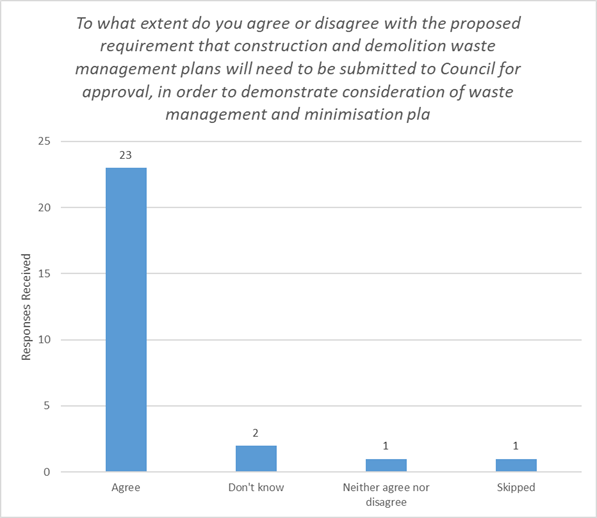


Part 2: Summary of open-ended
questions
The final question in the submission was an open-ended question
asking, ‘Do you have any other comments you would like to make about the
proposed Bylaw’?
This section provides a summary of key themes, but the full range
of answers can be found in Appendix 2.
The following 8 categories of themes were identified:
1. Collection
services
Eight (8) respondents
raised the following about collection services:
· Bins
obstructing footpaths, making it difficult for others to pass
· Open
crates should not be allowed because waste gets blown away (this is not
applicable to glass)
· Council
needs to increase its monitoring of collectors
· More
collection options are needed, particularly smaller bins and less frequent
collections - one respondent stated this would encourage waste minimisation,
while another respondent suggested this would suit those who don’t
produce much waste
· Concerns
over multiple providers were raised by 7 of the 8 because:
o there
are too many different garbage trucks on the streets, causing congestion, noise
pollution, and greenhouse gas emissions; and/or
o while
this drives competition for collectors to provide the lowest cost to
individuals, it creates an ‘individualised approach to waste
management’ which can then contribute to littering and other
environmental costs
2. Recycling
Five (5) respondents
advocated for the following in relation to recycling:
· Soft
plastics and/or unrecyclable plastics (often related to food packaging) are an
issue - a recycling solution is needed and/ or an education campaign about how
to reduce the use of these plastics
· More
public place recycling bins are needed
· Systems
for recycling unused goods (particularly for construction waste) are needed
– either at the tip (for example) or via some type of online forum.
3. Unaddressed and
Advertising mail
Four (4) respondents
commented on the proposed restrictions for unaddressed and advertising
mail. They wanted to ensure that the restrictions did include the
following:
· Newspapers
· Political
fliers and election campaign materials
· Public
notices on upcoming works that might be occurring in the area (e.g. road or
other maintenance projects).
4. Education
Four (4) respondents
commented on the need to accompany the Bylaw with ongoing education about:
· How
to reduce waste (e.g. practical tips); and
· The
availability of waste minimisation grants (particularly for event organisers).
5. Construction
and demolition waste
Three (3) respondents
commented on the proposed changes for C&D waste. The following
concerns were raised:
· If
builders / developers are required to submit a waste management plan, the cost
for developing this plan and submitting it to Council could be passed on to
clients if the costs are too onerous
· More
options for recycling C&D waste need to be provided and promoted (see the
above section on recycling)
· Some
might have an incentive to illegally dump C&D waste if landfill costs are
too high.
6. Enforcements
Three (3) respondents
commented on the need to ensure that the Bylaw was accompanied by a strong
enforcement regime. They said:
· Fines
need to be issued for people that litter and/or illegally dump
· Council
must increase the monitoring of collectors to ensure the terms of any contracts
are met and the services are best practice
· Council
must have a robust process in place to respond to any complaints as soon as
possible.
7. Multi-unit
dwellings
Only one (1) respondent
commented on the proposed requirements for multi-unit dwellings stating that
this was not a priority for the Kapiti Coast District.
8. Other
Other comments that were
raised included:
· Data
transparency – the data on waste to landfill should be easier to locate
so it is easier to determine whether the current approaches are successfully
driving waste reduction.
· Options
for food waste and green waste should be provided.
· The
bylaw should be simple and logical.
· Several
respondents raised broader concerns about the big picture (e.g. are we
recycling in the truest sense; is the environment bearing the biggest cost,
etc.), and suggested that the entire strategy / approach requires an overhaul
in order to drive much bigger changes in practice.
Appendix 1: Submission questionnaire
Section 1 – your
details
|
Your name: *
|
|
Your email or
postal address: *
|
|
You are making
this submission:
☐ as an individual
☐ as a business owner
☐ on behalf of an
organisation (please provide the name of the organisation):
|
|
I would like to make an oral submission to the Councillors ☐ Yes ☐ No
If yes, please give your phone number so
that a submission time can be arranged*:
|
|
Age:
☐ Under 20, ☐ 20-29, ☐ 30-39,
☐ 40-49, ☐ 50-59, ☐ 60-69, ☐ 70-79, ☐ 80 and over, ☐ Prefer not to say
|
|
Suburb you live in or operate your business in:
|
*mandatory
field
Section 2 – questions about the Proposed Solid
Waste Management and Minimisation Bylaw 2020
|
1. Intent
of the Bylaw (provision 4 and Statement of Proposal)
|
|
The
intent of this Bylaw is to provide a regionally consistent approach to more
effectively manage the negative impacts of waste on the environment, manage
waste activities in the public space, and ensure the protection of the health
and safety of the public and those involved in waste management.
|
|
Do
you support the intent of the Bylaw?
☐ Agree
☐ Neutral
☐ Disagree
☐ Don’t know
|
|
2. Restricting
unaddressed and advertising mail (provision 17)
|
|
The Bylaw proposes to formally restrict the deposit of
unaddressed mail or advertising mail:
· in letter boxes that are
clearly marked with the words “no circulars”, “no junk
mail” or similar,
· in mail boxes that are
full, or
· on vehicles parked in a
public space.
However, there are exceptions for public notices from
the government, as well as for different types of information from community
organisations and charities.
|
|
To what extend to you agree or
disagree with this new restriction?
☐ Agree
☐ Neutral
☐ Disagree
☐ Don’t know
|
|
3. Construction and demolition waste management
(provision 14)
|
|
The proposed Bylaw enables Council to
set a control that will mean that for construction projects over a certain
value, waste management and minimisation planning will need to be
considered in the planning of the project.
To demonstrate this, a construction
site and demolition waste management plan will need to be submitted to the
Council for approval. Amongst
other things, this plan will need to set out: (1) the proposed method of waste management
for each type of waste (e.g. reuse, recovery, recycling, disposal); and (2)
the proposed method for minimising and capturing litter associated with the
project and the building work.
Note: This new requirement will remain optional in the
Bylaw for now. Before implementing this requirement, which is envisaged in 2
to 3 years’ time, stakeholder engagement will be undertaken in order to
set the value that would trigger the obligation to submit a plan.
|
|
To what extent do you
agree or disagree with the proposed requirement that construction and
demolition waste management plans will need to be submitted to Council for
approval, in order to demonstrate consideration of waste management and
minimisation planning for certain building projects?
☐ Agree
☐ Neutral
☐ Disagree
☐ Don’t know
|
|
4. Multi-unit dwellings (provision 12)
|
|
Provision 12
of the proposed Bylaw requires the owner and/or manager of new large
multi-unit developments (comprising of 10 or more dwellings), to provide for
adequate areas for storage and collection of all waste and recycling
generated within that development.
The Bylaw also
requires a related waste management plan to be submitted to the Council prior
to building construction. This plan will need to demonstrate, amongst other
things, how waste material generated on site will be minimised and identify the storage areas for
receptacles that are easily accessible to the occupiers of the units and the
waste collector.
Note: It is
proposed that this provision (requirement) comes into force from 1 July 2021.
|
|
To what
extent do you agree or disagree with the proposed Bylaw requirements
regulating waste management and minimisation planning for multi-unit
dwellings?
☐ Agree
☐ Neutral
☐ Disagree
☐ Don’t know
|
|
5. Event
waste management (provision 13)
|
|
Under the current 2010 Solid Waste
Bylaw, Council may require event organisers to submit waste minimisation
plans for their events. The proposed 2020 Bylaw now makes this mandatory
across the region for large events (1000+ people).
The plan would need to demonstrate:
(1) how waste generated by the event is to be minimised; (2) the steps that
will be taken to maximise the use of reusable systems, recycling and
composting; and (3) the proposed method for minimising and capturing litter
associated with the event.
An event is considered to be
“any organised temporary activity of significant scale that is likely
to create litter and includes (but is not limited to) an organised outdoor
gathering, open-air market, parade, sporting event, protest, festival,
concert or celebration”.
More information on event waste
management can be found online at Zero Waste
Events - Kāpiti Coast District Council. This includes a new
regional guide entitled Reducing waste at your event, plus other useful
guidance.
Note: It is proposed that this
provision (requirement) comes into force from 1 July 2021.
|
|
To what
extent do you agree or disagree with the proposed event waste management and
minimisation standards for large events?
☐ Agree
☐ Neutral
☐ Disagree
☐ Don’t know
|
|
6.
Do you have any other
comments you would like to make about the proposed Bylaw?
|
|
|
|
7. Are
you interested in attending future stakeholder engagement sessions related to
construction and demolition waste management? If so, please provide
contact details.
|
|
|
Appendix 2: Open-ended responses
|
Wants to continue
newspaper delivery to mailboxes with 'no junk mail' signs. 7g -
too many areas where bin left on footpath that inhibit mobility scooters and
wheelchairs. Bylaw 15: believe that Council requires greater
oversight of collection providers.
|
|
Encourage more recycling
and education on waste minimization. Multi-unit is not a priority. C&D
requires a more specific date.
|
|
Strongly support
controls available to Council under new bylaw, namely: setting out approved
receptacles for waste and recycling. Strongly support proposed
general responsibilities for the deposit, collection, transportation,
storage, processing and disposal of waste in Part B Clause 8. Very
concerned about current use of open crates for co-mingled recycling
collection, as this can create litter. Very concerned about this litter
getting into Waikanae Estuary. under Clauses 8.2a and c, to require the users
of crates to strap down their recycling. If not, then no open crates. No
issues with open crates for glass collection.
|
|
In reference to Q8:
Concerned that regulation too broad and lead to altercations and differences
of opinion. The Regulation must specify that Party Political and Local
Body Political information relating to Elections is acceptable in No Junk
mail letter boxes.This is important information which must be available in a
Democracy. I accept that boxes labelled "Addressed Mail Only"
should not receive this.
|
|
In reference to Q9: Will
increase price of project, hope developer won’t be penalized by the
cost of submitting a plan to Council. The bylaw is good in
principle as long as the cost of submitting plans is not excessive/passed
onto client making project too costly.
|
|
No
|
|
Concerns over several
collection companies emitting fumes and noise. Too many trucks going down the
same streets. Pay for a bin but don't fill it often.
|
|
N/A
|
|
Waste Data: It is
disappointing there is a lack of published data on our solid waste / recycling
volumes. I cannot find any recent Kapiti data, but will keep
looking. The Wellington Regional Plan (WRMMP 2017) also identifies data
as a key issue: “There is room for improvement in the quality and
management of data. Accessible, reliable, consistent data enables
better decision making.” It should not be difficult for the
licenced operators to report on volume collected, and for this to be
summarised in the KCDC annual report? If the objective is to reduce
waste to landfill, we need to be honest about whether we are achieving
this. Rubbish collection: There is something absurd
about 3 rubbish trucks following each other along the road each week, each
collecting their own customers’ waste. Their charges are similar
– we changed company when Low Cost Bins offered a year’s
collection for $200, but it’s back to over $300, the same as other
suppliers. A 240 litre bin each week for $6 is very cheap, and I often
look around for things to fill it with. Recycling: We
need to be honest about how successful recycling is … putting things in
a different bin for collection is not recycling – recycling is when
something comes back into circulation as something useful. Paper, metal
and glass (bottles) appear to have successful recycling chains – can we
see the data to verify this? We are supporters of the Recycling shops,
although a lot of what we buy ends up back in the rubbish down the
line. Plastic packaging – grrrrr
! Pleased that there is a regional approach
developing; this looks like the way to go.
|
|
Keep regulations simple
and logical
|
|
I would like to see more
effort being put into provision of composting for food waste, lawn clippings,
etc from household, hospitality venues. This solid waste generally goes to
landfill at the moment.
|
|
Re-use centres e.g. tip
"shops" at all transfer stations to lessen landfill.
|
|
One thing that I do not
recommend is to create yet more legislation, the current laws on people and
businesses are way too onerous. this would just be more rules for the Council
to enforce and also People/buisinesses to understand and adhere to. This will
also not change the main offenders, which is certain members of the
public. What we should start to do is to start to
educate the public as to the affects that littering is having on the place we
live. Maybe give some examples of the tonnes (quantity) of litter that are
dropped and left annually. Maybe explain that is does not degrade, that is
affects wildlife etc. In the end humans are supposed to be clever and with
bigger brains that our other animals who share thjis planet but the reality
is way different, we are the ones damaging a planet. i myself carry a bag
when I go for walsk and mange to fill it with litter from my own community
every walk. We should also get the authorities to treat
little more seriously. The Police, instead of fixated on doing 52k's in a 50
and giving a ticket (I know it creates money) but they should be looking for
people littering, and giving out the same tickets. You would get a lot more
support from people for a littering ticket and fine than a speeding ticket.
The littering fines can then be used to fund eductaion
programmes. What happened to the recycling stations
in public places? As regards solid waste and
landfill. The costs of using the recyling station is far too high, this just
encourages fly tipping. I even have experienced people driving down my drive
and throwing black bags of trash in my land. Maybe have a
free website where people can post their waste? As the saying goes, one person’s
waste is another person’s gold. Eg. hard fill, people pay a fortune to
get rid of hard fill, yet people are looking to buy hard
fill. Please don't make more legistation. The world is fed
up of it.
|
|
For future consultation,
I would like the Council to consider the wider littering, environmental and
cost effects of its individualised approach to waste management (by requiring
each ratepayer to arrange their own waste disposal).
|
|
I look forward to a more
complete overhaul of the strategy for solid waste management in Kāpiti.
|
|
re: clause 17.2 -
unaddressed mail etc. exceptions to clause 17. I agree with clause 17.2(a) in
that notification by mail of upcoming work on local services or
infrastructure, even if such mail is not fully addressed, will be useful and
appropriate to households. I do not agree that the mail listed in clauses
17.2 (b) 17.2 (c) and 17.2 (d) is much more than unsolicited advertising, and
I feel those clauses need not be included under clause 17.2.
|
|
My interest is in the lack
of a soft plastics (very numerous) recycle facility ... the nearest recycle
point is Wellington (Crofton Downs or Karori) which means for most that this
host of material goes into the landfill.
|
|
Broadly speaking, waste
minimisation is becoming an increasing priority at every level. Use of finite
resources, poor recycling practices, sending of recyclable materials to
landfill, continued use of single-use bags, wrappers, containers etc.,
degradation of and damage to old landfills due to weather events and
environmental change, are all part of a pattern of worldwide waste
accumulation. The biggest question might be "When does the cost of
NOT dealing with all waste in a sustainable manner, outweigh the cost of
doing so?" Not a matter of finding a profitable way of doing so, more a
matter of recognising that it's an inescapable imperative. It's too late for
half-measures.
|
|
Item 8, Provision 17 -
agree subject to seeing what the detail for exception is, this needs to be
spelt out
|
|
I am concerned about the
number of garbage trucks visiting our street and polluting the atmosphere
with their diesel fumes. One truck per street, once a week would be
sufficient. Walking around local streets on 'Rubbish Day',
I am appalled by the quantity of cans, plastic containers, waste paper and
cardboard left littering roads and footpaths in the wake of the Garbage
Trucks. An inspection regime should be instituted to ensure that ALL
rubbish is removed. Both these concerns could be addressed
by the council resuming responsibility for rubbish collection, instead of
(mis)placing their trust in third-party contractors with no interest in, or
commitment to, our community.
|
|
For solid watse
management objectives to be met effectively Council has to have a rapid
response capability to deal with issues arising from complaints, or to
exercise an audit function. This needs to be taken into account in Long Term
plans before giving effect to this by law changes.
|
|
Pleased to see this has
progressed to the public consultation stage. Would like to see the proposed
changes included and implemented in a timely manner.
|
|
The bylaw does not cover
my concern - EXCESSIVE PLASTIC WASTE What is the Council doing to
reduce the PLASTIC waste that households put in their rubbish each
week. I NEED advice - I wish the Council to provide for
this issue in the BYLAW
|
|
I want the council to go
back to having a single collector of rubbish and recycling. The current
situation with at least providers is very wasteful of time, and energy. we
have three rubbish trucks and three recycling trucks going down our street
every week.
|
|
I would like KCDC to
reduce domestic waste by compelling contractors to offer smaller bins and
less frequent collections in order to incentivise waste minimisation in the
home. At present there is extremely little provision for this.
|
|
The Kapiti Food Fair has
a waste minimisation strategy, however it is expensive to administer so it
would be good to be encouraged by KCDC to apply for any waste minimisation
funding that is available on an annual basis.
|
|
Council Meeting Agenda
|
10 December 2020
|
Regionally-consistent solid
waste management & minimisation bylaw 2021 – public consultation
summary
BACKGROUND
· The Wellington Regional Waste Management
and Minimisation Plan 2017-2023 (WMMP) was adopted by each council in the
Wellington region in 2017, providing for a series of regional and local actions
to support the primary goal of reducing the amount of waste to landfill from
600kg per person per year to 400kg by 2026.
· The review, implementation and enforcement
of a regionally consistent Solid Waste Management and Minimisation Bylaw
(Bylaw) is the primary action for both the regional action plan, and each
council’s local action plans.
·
· Over the last three years, councils in the
Wellington region have worked collaboratively to develop a regionally
consistent Bylaw to resolve six key issues, construction and demolition waste,
waste generated at public events, provision of services at MUDs, unaddressed
mail and waste data reporting.
·
· Each council in the Wellington region has
now consulted on the proposed Bylaw, except the Wairarapa councils who will be
consulting for 4 weeks opening late October. The Wairarapa councils have
considered the feedback from the rest of the region received through the
submissions processes and have incorporated the regionally consistent themes
into their statement of proposal for adoption in anticipation of similar
feedback from their local community.
·
· It is the intention that councils will
deliberate and adopt their respective Bylaw by the end of February 2021. At the
point each Bylaw is adopted it is enforceable except for clauses that that will
come into force at a later date as set out in each council’s Bylaw. Each
council will manage the local aspects of the implementation, and the
regionally-consistent aspects will be managed by the regional advisor on behalf
of the eight councils.
·
SUMMARY OF RECOMMENDATIONS
TO ALL COUNCILS[1]
Clause 6 Interpretation
1. Note that when developing the regional
licensing fee structure, that possible incentives and support for diversion
will be considered by councils across the Wellington region
2. Note that the
waste ‘management and minimisation plan’ templates for events, MUDs
and construction & demolition projects, will also be made available
pro-actively when consents are applied for, even if the thresholds in the Bylaw
for submission of a plan are not met (less than 1,000 visitors for an event,
under the set $ value for a construction project or a MUD of less than 10
units).
·
3. Agree to remove ‘protest’ from
Clause 6 Interpretation of ‘Event’ based on the recommended
extension of timeframe for receiving event waste minimisation plans in 13.1,
given that protests generally are not planned as far in advance as the other
events described.
4. Agree to adjust the interpretation of
‘Event’ to:
· ‘Any organised temporary activity of
significant scale that is likely to create litter and includes (but is not
limited to) an organised indoor or outdoor gathering, market, parade, sporting
event, festival, concert, performance or celebration.
An outdoor event will be considered significant if it has
an expected attendance of 1,000 (WCC 5,000) or more people across the duration
of the event, whether it be a single or multi-day event. For the purpose of
this Bylaw an outdoor ‘event’ excludes:
· any regularly occurring
recreational activities such as weekly sports events.
· An indoor event will be considered
significant if it has an expected attendance of 1,000 (WCC: 5,000) or more
people across the duration of the event, whether it be a single or multi-day event.
For the purpose of this Bylaw an indoor ‘event’ excludes:
· indoor private functions; and
· any regularly occurring
recreational activities such as weekly sports events.’
5. Agree to adjust the definition of
‘waste collector’ under Clause 6 Interpretation to:
‘Any person or entity that collects and or
transports waste and includes commercial and non-commercial collectors and
transporters of waste (community groups and not-for-profit organisations) but
does not include individuals who collect and transport waste for personal
reasons (for example, the owner taking their own household garden waste to a
waste management facility).’
6. Agree to add ‘Waste hierarchy: as
defined by the Act’ to Clause 6 Interpretation
7. Note that each council will ensure that
the compliance, monitoring and enforcement of the Bylaw is sufficiently
resourced
Clause 11 Licensing of Waste
Collectors and Operators
8. Note that councils will work closely with
Earthlink and other not-for-profit organisations and charities that handle more
than 20 tonnes of waste in any 12-month period when setting up any licensing
requirements in the future if required under the Waste Minimisation Act 2008
9. Note that the diversion of resources from
landfill will be considered when developing the waste operator licensing
framework
Clause 12 Multi-Unit Developments (MUDs)
10. Agree to replace ‘waste management
plan’ with 'Waste Management and Minimisation Plan' anywhere it is
included in the Bylaw in reference to Multi-Unit Developments
11. Agree to adjust 12.1 to:
‘The owner and/or the manager of a multi-unit
development must make adequate provision for the management of all waste,
and recycling and organic material generated within the premises.
This includes arrangements for the regular collection of waste to the
satisfaction of Council and the provision of adequate areas for:
(a) The storage of disposed of or discarded material on the
premises from any activity on that premises; and
(b) The collection of disposed of or discarded material if collection
occurs on the premises.’
12. Agree to adjust 12.3 (d) to:
‘How waste generated within the premises is to be minimised employing
the waste hierarchy, and the steps to maximise the collection and use of
recyclables, organic waste and reusable material’
13. Note that as part of the MUD 'Waste
Management and Minimisation Plan’ process, councils of the Wellington
region intend to develop a regionally-consistent waste space storage calculator
that will provide best practice guidance related to the requirement under 12.3
(b) to provide ‘an adequate area’ for waste-related storage
Clause 13 Events
14. Agree to replace ‘waste management
plan’ with ‘Event Waste Minimisation Plan' anywhere it is included
in the Bylaw in reference to Events
15. Agree to adjust 13.1 to:
‘At least 10 30 working days prior to
the commencement of an event, the event manager must submit to the Council for
approval an Event Waste Minimisation Plan for the event’
16. Agree to adjust 13.2 (c) to:
· ‘The steps that will be taken to
maximise the use of reusable systems, the collection and use of
recyclables and other recoverable, reusable or and compostable
materials, and an estimate of the diversion of waste and the avoidance of
waste’
17. Agree to amend 13.2 (d) to:
·
‘The equipment to be
provided for any ‘reusable system’, and for the storage,
collection and transportation of waste and diverted material’
18. Agree to adjust 13.4 to:
‘On completion of the event, if requested by the
Council, the event manager must provide the Council with a waste analysis
report, which at a minimum, will include a breakdown of:
• The types
of waste generated by the event;
• The amounts
of waste (by type) generated by the event;
• The amount
of waste diverted and avoided; and
• The
waste management facilities used to recover, recycle, treat or dispose of this
waste.’
Clause 14 Construction and
demolition waste
19. Agree to adjust 14.3 to:
· ‘A construction site and demolition
waste management plan may also be is required by Council to set
out:
· (a) An estimate of the quantity of each type of waste; and
·
(b) An estimate of the
diversion of waste.
20. Agree to adjust 14.4 to:
·
’While the building work is
being carried out, the principal contractor must may be required by
Council to:
·
(a) Review the construction site
and demolition waste management plan as necessary;
(b) Record quantities and types of waste produced; and
·
(c) Record the types and
quantities of waste that have been:
i. Reused (on or off site)
ii. Recycled (on or off site)
iii. Sent to other forms of recovery (on or off site); Sent
to landfill;
iv. Sent to cleanfill; or
v. Otherwise disposed of.’
21. Agree to adjust 14.5 to:
·
’Within three months of
completion of the building work the Council may require the principal
contractor to must add to the construction site and demolition
waste management plan
·
(a) Confirmation that the plan has
been monitored and updated;
·
(b) A comparison of estimated
quantities of each type of waste generated against the actual quantities of
each waste type;
·
(c) An explanation of any
deviation from the plan; and
·
(d) An estimate of any cost
savings that have been achieved by completing and implementing the plan.
and submit this to the Council.
Other feedback
22. Note that future dialogue has been requested at a time that Regional
Public Health are able and that that can be considered fully at that time
·
·
REGIONAL RESPONSE STATISTICS
23. The Wellington region (excluding Wairarapa) received a total of 241 submissions.
Each council asked a similar set of questions relating to construction and
demolition waste, waste generated at public events, provision of services at
MUDs, unaddressed mail and waste data reporting. A summary of the response
statistics follows:
o General support: only two councils asked submitters if they
generally supported the proposed Bylaw – Kāpiti
and Upper Hutt. There was strong support from Kāpiti
submitters at 96%, with Upper Hutt having a lower agreement rate at 62% however
the 13% represents only one submitter Earthlink.
·
o Clause 11 Licensing of Waste Collectors and
Operators: over 68% of
submitters from each council either strongly agreed, agreed, or somewhat agreed
with the proposed changes for waste operator licensing. Wellington received
strong support at 85%. Hutt City had 6 submitters either disagree or strongly
disagree representing 18.8%.
o Clause 12 Multi-Unit Developments (MUDs): over 70% of submitters from each council
either strongly agreed, agreed, or somewhat agreed with the proposed changes
for MUDs. A portion of submitters remained neutral or skipped this question
more so than those that disagreed (7.5% or less).
·
o Clause 13 Events: over 80% of submitters from each council
either strongly agreed, agreed, or somewhat agreed with the proposed changes
for events. A portion of submitters remained neutral or skipped this question
more so than those that disagreed (6.1% or less).
·
o Clause 14 Construction and Demolition
Waste: over 80% of
submitters from each council either strongly agreed, agreed, or somewhat agreed
with the proposed changes for C&D. A portion of submitters remained neutral
or skipped this question more so than those that disagreed, however 4
submitters from Hutt City strongly disagreed, representing 12.1%.
·
o Clause 17 Unaddressed Mail and Advertising
Material: over 65% of
submitters from each council either strongly agreed, agreed, or somewhat agreed
with the proposed changes for unaddressed mail advertising and advertising
material. Wellington received strong support for this change at 91%. Hutt City
had 6 submitters strongly disagree representing 18.8% but generally this was
because they disagreed with one or more exclusions rather than the intent of
the clause itself.
|
·
|
·
Hutt
City
·
Total received: 37
|
·
Kāpiti Coast
·
Total received: 27
|
·
Porirua
City
·
Total received: 2
|
·
Upper
Hutt
·
Total received: 8
|
·
Wellington
·
Total received: 167
|
·
Wairarapa
·
Total
received: X
|
|
·
General support
|
·
Not asked
|
·
96% agree
·
4% neither agree nor
disagree
|
·
Not asked
|
·
62%
agree
·
13%
disagree
·
25% skipped
|
·
Not asked
|
·
|
|
·
Clause 11
·
Licensing of Waste
Collectors and Operators
|
·
31.3%
strongly agree
·
37.5%
agree 12.5% neutral
·
9.4%
disagree
·
9.4%
strongly disagree
|
·
Not asked
|
·
50%
strongly agree
·
50%
agree
|
·
Combined with MUD
question
|
·
60%
definitely agree
·
25%
somewhat agree
·
6%
disagree
|
·
|
|
·
Clause 12
·
Multi-Unit
Development
|
·
36.4% strongly agree
·
36.4% agree
·
15.2% neutral
·
6.1%
disagree
·
6.1%
strongly disagree
|
·
81% agree
·
7.5% neither agree nor
disagree
·
3.75% skipped
·
7.5%
disagree
|
·
50%
strongly agree
·
50%
agree
|
·
75%
agree
·
25% skipped
·
·
(Note: combined MUD
& licensing question)
·
|
·
72%
definitely agree
·
19%
somewhat agree
·
6%
disagree
|
·
|
|
·
Clause 13
·
Events
|
·
39.4%
strongly agree
·
39.4%
agree
·
6.1% neutral
·
6.1%
disagree
·
6.1%
strongly disagree
|
·
85%
agree
·
7.5% neither agree nor
disagree
·
3.75% skipped
·
3.75%
disagree
|
·
50%
strongly agree
·
50%
agree
|
·
75%
agree
·
12%
somewhat agree
·
13% skipped
|
·
66%
definitely agree
·
28%
somewhat agree
·
6%
disagree
|
·
|
|
·
Clause 14
·
Construction &
Demolition Waste
|
·
45.5%
strongly agree
·
36.4%
agree 3.0% neutral
·
3.0%
disagree
·
12.1%
strongly disagree
|
·
85%
agree
·
7.5% don’t know
·
3.75% neither agree
nor disagree 3.75% skipped
|
·
50%
strongly agree
·
50%
agree
|
·
57%
agree
·
14%
somewhat agree
·
29% skipped
|
·
75%
definitely agree
·
19%
somewhat agree
·
6%
disagree
|
·
|
|
·
Clause 17
·
Unaddressed Mail
& Advertising Material
|
·
46.9%
strongly agree
·
18.8%
agree 15.5% neutral
·
18.8%
strongly disagree
|
·
85%
agree
·
7.5% neither agree nor
disagree
·
7.5%
disagree
|
·
50%
strongly agree
·
50%
agree
|
·
Not asked
|
·
82%
definitely agree
·
9%
somewhat agree
·
8%
disagree
|
·
|
REGIONAL THEMES
24. The following section provides an overview of the regional themes that
came through from submissions received across the region through their
individual submission processes (excluding Wairarapa).
Clause 6 Interpretation
Stakeholders
· Most of the stakeholders somewhat agreed
with the interpretations, asking that in most cases that they be strengthened.
This includes better defining what an event is rather than what it’s not,
require small events to submit a plan, include sports and indoor events, and
called for a lowering of the threshold for both MUDs (>10 units) and
building work (>$2 million for WCC). There was also a call to revise the
interpretation of waste collector and operator. Note that the thresholds for
the $ value of building works may vary per District. In Kāpiti, the clause
will come into force in the future and then the $ value will be set by Council.
Individual submitters
· Most submitters who commented on this
clause also asked for some aspects to be strengthened, or said that it
wouldn’t properly address the issues and would be difficult to enforce.
For licensing, comments were in line with stakeholders around ensuring a
flexible approach is taken for community-based waste organisations and smaller
providers.
· For MUDs, the comments related to the
threshold of 10 being too high, and queried where existing MUDs fit within this
framework. For events, submitters thought the 1,000-person threshold was too
high, should include smaller events as well as sports and indoor events. Most
that commented on this thought that, even if smaller events aren’t
mandated to complete a plan, the template plans should be made available and
encouraged.
Recommendations / proposed
changes
1. Note that when developing the regional
licensing fee structure, that possible incentives and support for diversion
will be considered by councils across the Wellington region
2. Note that waste management and
minimisation plans will be made available when consent is lodged for events,
MUDs and building work that do not meet the thresholds
3. Agree to remove ‘protest’ from
Clause 6 Interpretation of ‘Event’ based on the recommended
extension of timeframe for receiving event waste minimisation plans in 13.1,
given that protests generally are not planned as far in advance as the other
events described.
4. Agree to adjust the interpretation of
‘Event’ to:
·
‘Any organised
temporary activity of significant scale that is likely to create litter and
includes (but is not limited to) an organised indoor or outdoor gathering,
market, parade, sporting event, festival, concert, performance or celebration.
·
An outdoor event will
be considered significant if it has an expected attendance of 1,000 or more
people across the duration of the event, whether it be a single or multi-day
event. For the purpose of this Bylaw an outdoor ‘event’ excludes:
·
•
any regularly occurring recreational activities such as weekly sports
events.
·
An indoor event will
be considered significant if it has an expected attendance of 1,000 (WCC:
5,000) or more people across the duration of the event, whether it be a single
or multi-day event. For the purpose of this Bylaw an indoor ‘event’
excludes:
·
•
indoor private functions; and
·
•
any regularly occurring recreational activities such as weekly sports
events.’
5. Agree to adjust the definition of
‘waste collector’ under Clause 6 Interpretation to:
‘Any person or entity that collects and or
transports waste and includes commercial and non-commercial collectors and
transporters of waste (community groups and not-for-profit organisations) but
does not include individuals who collect and transport waste for personal
reasons (for example, the owner taking their own household garden waste to a
waste management facility).’
6. Agree to add ‘Waste hierarchy: as
defined by the Act’ to Clause 6 Interpretation
7. Note that each council will ensure that
the compliance, monitoring and enforcement of the Bylaw is sufficiently
resourced
Clause 7 Controls
Individual submitters
· General support for the controls that can
be set under clause 7. Comments were received around the size and types of
acceptable receptacles, stricter rules around separation of waste, and controls
around compostable packaging mandated in place of single-use plastic. Those
more specific submissions related to controls set by WCC. In Kāpiti, no
submissions were received on the proposed controls.
Clause 8 General
Responsibilities
Individual submitters
· One comment received mentioned litter as a
result of co-mingled recycling crates, one thought the Bylaw should signal a
clearer intent around waste reduction, and another thought obligations for
residential and commercial users should be more clearly distinguished.
Clause 11 Licensing of Waste Collectors and Operators
Stakeholders
· Most stakeholders agreed with the
introduction of region-wide licensing and the need for greater oversight. Some
had concerns about it impacting smaller providers and organisations that act as
consolidation points. Earthlink made a submission asking to be exempt along
with other charities and not-for-profits. One called for it to come into effect
sooner than proposed. In Kāpiti licensing comes into effect immediately as
licensing is already in place.
Individual submitters
· There was general support for the proposed
licensing. Some concern that this might impact on the cost to the customer, or
questioned the practicality of this. A few comments were received around the
current state of rubbish and recycling collection that weren’t
necessarily relevant to licensing but can be considered in future discussion.
One submitter asked to consider incentivising diversion when developing the
licensing framework, another that the Bylaw comes into effect sooner than
proposed.
Recommendations / proposed
changes
8. Note that councils will work closely with
Earthlink and other not-for-profit organisations and charities that handle more
than 20 tonnes of waste in any 12-month period when setting up any licensing
requirements in the future if required under the Waste Minimisation Act 2008
9. Note that the diversion of resources from
landfill will be considered when developing the waste operator licensing
framework
Clause 12 Multi-Unit Developments (MUDs)
Stakeholders
· Most of the stakeholders somewhat agreed
with the proposal but asked that it be strengthened in parts. Suggestions were
made that plans be renamed, that future developments set space aside for
organic material. Would like the waste hierarchy to be a consideration in this
clause. One called for it to come into effect sooner than proposed.
·
Individual submitters
· Generally supportive comments received.
There was a suggestion to include provision for green waste, another of a
circular waste economy within complexes. One submitter thought this might discourage
development and another thought it should be left to the developer to decide
how best to utilise its space. Another disagreed with the exemption allowed for
in 12.5a. and asked for the Bylaw to clearly define what ‘adequate
storage’ is.
Recommendations / proposed
changes clause 12
10. Agree to replace ‘waste management
plan’ with 'Waste Management and Minimisation Plan' anywhere it is
included in the Bylaw in reference to Multi-Unit Developments
11. Agree to adjust 12.1 to:
‘The owner and/or the manager of a multi-unit
development must make adequate provision for the management of all waste,
and recycling and organic material generated within the premises.
This includes arrangements for the regular collection of waste to the
satisfaction of Council and the provision of adequate areas for:
(a) The storage of disposed of or discarded material on the
premises from any activity on that premises; and
(b) The collection of disposed of or discarded material if
collection occurs on the premises.’
12. Agree to adjust 12.3 (d) to:
‘How waste generated within the premises is to be minimised employing
the waste hierarchy, and the steps to maximise the collection and use of
recyclables, organic waste and reusable material’
13. Note that as part of the MUD 'Waste
Management and Minimisation Plan’ process, councils of the Wellington
region intend to develop a regionally-consistent waste space storage calculator
that will provide best practice guidance related to the requirement under 12.3
(b) to provide ‘an adequate area’ for waste-related storage
Clause 13 Events
Stakeholders
· Most of the stakeholders somewhat agreed
with the proposal but asked that it be strengthened in parts. Suggest that
plans be renamed, that the date for submitting plans is reconsidered, that
equipment to support prevention is included in 13d, that post-event waste
analysis reports are made mandatory, that the estimated amount of waste avoided
should be included in the plan, and that it comes to effect sooner than
proposed.
Individual submitters
· Strong support for the proposal. Some made
comments about the need for council support to ensure compliance. The ’10
days before an event is held’ was questioned by a few submitters, as well
as the model itself that is encouraging recycling as this isn’t
sustainable. Supportive comments across councils for mandatory post-event waste
analysis reports.
Recommendations / proposed
changes
14. Agree to replace ‘waste management
plan’ with ‘Event Waste Minimisation Plan' anywhere it is included
in the Bylaw in reference to Events
15. Agree to adjust 13.1 to:
‘At least 10 30 working days prior to
the commencement of an event, the event manager must submit to the Council for
approval an Event Waste Minimisation Plan for the event’
16. Agree to adjust 13.2 (c) to:
· ‘The steps that will be taken to
maximise the use of reusable systems, the collection and use of
recyclables and other recoverable, reusable or and compostable
materials, and an estimate of the diversion of waste and the avoidance of
waste’
17. Agree to amend 13.2 (d) to:
·
‘The equipment to be
provided for any ‘reusable system’, and for the storage,
collection and transportation of waste and diverted material’
18. Agree to adjust 13.4 to:
‘On completion of the event, if requested by the
Council, the event manager must provide the Council with a waste analysis
report, which at a minimum, will include a breakdown of:
• The types of waste
generated by the event;
• The amounts of waste
(by type) generated by the event;
• The amount of waste
diverted and avoided; and
• The
waste management facilities used to recover, recycle, treat or dispose of this
waste.’
Clause 14 Construction and Demolition Waste
Stakeholders
· General support with a couple of comments
asking that 14 be amended to make it clear building work includes
refurbishments. There is a request to consider another means of triggering the
need for a plan – such as a combination of value and type. One asked that
it be mandatory for principal contractors to undertake activities in 14.4 and
14.5 Another stakeholder thought it unacceptable to not include diversion
targets in plans.
Individual submitters
· General support for the proposal. Comments
made that it should include all building work to make any real impact, that
changes would need to be supported through education, and that there should be
additional requirements for separating material. Another thought it was more
red tape.
Recommendations / proposed
changes
19. Agree to adjust 14.3 to:
· ‘A construction site and demolition
waste management plan may also be is required by Council to set
out:
· (a) An estimate of the quantity of each type of waste; and
·
(b) An estimate of the
diversion of waste.
20. Agree to adjust 14.4 to:
·
’While the building work is
being carried out, the principal contractor must may be required by
Council to:
·
(a) Review the construction site
and demolition waste management plan as necessary;
(b) Record quantities and types of waste produced; and
·
(c) Record the types and
quantities of waste that have been:
vi. Reused (on or off site)
vii. Recycled (on or off site)
viii. Sent
to other forms of recovery (on or off site); Sent to landfill;
ix. Sent to cleanfill; or
x. Otherwise disposed of.’
21. Agree to adjust 14.5 to:
·
’Within three months of
completion of the building work the Council may require the principal
contractor to must add to the construction site and demolition
waste management plan:
·
(a) Confirmation that the plan has
been monitored and updated;
·
(b) A comparison of estimated
quantities of each type of waste generated against the actual quantities of
each waste type;
·
(c) An explanation of any
deviation from the plan; and
·
(d) An estimate of any cost
savings that have been achieved by completing and implementing the plan.
Clause 17 Unaddressed Mail and Advertising
Material
Individual submitters
· Strong support for this proposal. Some
submitters thought political advertising should be removed as an item in 17.2.
Other feedback
· Regional Public Health submitted that at
this time they did not have resource to make a submission on the consultation
but requested that councils are open to future dialogue.
Recommendations / proposed
changes
22. Note that future dialogue has been requested at a time that Regional
Public Health are able and that that can be considered fully at that time
|
Council Meeting Agenda
|
10 December 2020
|
Kāpiti Coast District Council Solid Waste Management
& Minimisation Bylaw 2021
|
ID#
|
Clause
|
Draft
bylaw text
|
|
PART A: INTRODUCTION
|
|
1
|
Title and
Application
|
1.1 The title of this Bylaw is the
“Solid Waste Management and Minimisation Bylaw 2021”.
1.2 This Bylaw applies within the
boundaries of the Kāpiti Coast
District.
|
|
2
|
Commencement
|
2.1 This Bylaw comes
into force on 1 January 2021 except for the following exceptions which comes
into force on the date specified:
(a) The event waste
management plan provisions under clause 13 come into force 6 months after the
commencement date of this bylaw
(b) The Multi-Unit
Developments provisions under clause 12 come into force 6 months after the
commencement date of this bylaw.
|
|
3
|
Revocation
|
3.1 This Bylaw repeals and replaces the
Kāpiti Coast District
Solid Waste Bylaw 2010 and Part 7 of the General Bylaw 2010.
|
|
|
4
|
Purpose
|
4.1 The purpose of this Bylaw is to
support:
(a) The promotion and
delivery of effective and efficient waste management and minimisation in the
Kāpiti Coast District
as required under the Waste Minimisation Act 2008;
(b) The implementation
of the Wellington Region Waste Management and Minimisation Plan;
(c) The purpose of the
Waste Minimisation Act 2008 and the goals in the New Zealand Waste Strategy
2010, being to encourage waste minimisation and a decrease in waste disposal
in order to protect the environment from harm; and provide environmental,
social, economic, and cultural benefits;
(d) The regulation of
waste collection, transport and disposal, including recycling, waste storage
and management;
(e) Controls regarding
the responsibilities of customers who use approved solid waste services, and
the licensing of waste collectors and waste operators;
(f) The protection of
the health and safety of waste collectors, waste operators and the public;
and
(g) The management of
litter and nuisance relating to waste in public places.
4.2 This Bylaw is made pursuant to
section 56 of the Waste Minimisation Act 2008, sections 145 and 146 of the
Local Government Act 2002, section 64 of the Heath Act 1956, and section 12
of the Litter Act 1979.
|
|
5
|
Compliance with
Bylaw
|
5.1 No person may deposit, collect,
transport, sort, process, treat or dispose of waste other than in accordance
with this Bylaw.
5.2 To avoid doubt, compliance with this
Bylaw does not remove the need to comply with all other applicable Acts,
regulations, bylaws, and rules of law.
|
|
6
Interpretation
|
6.1 For this Bylaw, unless the context
otherwise requires, the following term definitions apply[2]:
|
|
|
Term:
|
Means:
|
|
|
Act
(the Act)
|
Waste
Minimisation Act 2008
|
|
|
Advertising
material
|
Any
message which:
(a) Has printed content
controlled directly or indirectly by the advertiser; and
(b) Is expressed in any
language and communicated in any medium with the intent to influence the
choice, opinion or behaviour of a person.
|
|
Approved
|
Authorised in writing by the Council.
|
|
Approved
collection point(s)
|
Council approved
places, facilities or receptacle where approved receptacles may be left for
collection or waste may be deposited.
|
|
Approved
receptacle
|
Any container, bag
or other receptacle that has been approved by the Council for the collection
of any type of waste or diverted material, with approval based on the
following criteria: the prevention of nuisance, the provision for adequate
security to prevent scavenging, the protection of the health and safety of
waste collectors and the public, and the achievement of effective waste
management and minimisation.
|
|
Authorised
officer
|
Any officer of the
Council or other person authorised by the Council to administer and enforce
its bylaws, and
any person appointed especially or generally by the Council to enforce the
provisions of this Bylaw.
|
|
Building
work
|
As defined in the Building Act 2004 and
includes any work for, or in connection with, the construction, alteration,
demolition, or removal of a building. It can include sitework and design work
relating to the building work.
|
|
Bylaw
|
This Solid Waste Management and
Minimisation Bylaw 2020.
|
|
Cleanfill
material
|
Waste
that meets all of the following requirements:
(a)
does not undergo any physical, chemical or biological transformation that,
when deposited or with the passing of time, is likely to have adverse effects
on the environment or human health; and
(b)
includes virgin excavated natural materials such as clay, soil and
rock, and other inert materials such as concrete or brick that are free of:
(i)
combustible, putrescible, degradable or leachable components;
(ii)
hazardous waste, hazardous substances or materials (such as municipal solid
waste) likely to create leachate by means of biological breakdown;
(iii)
products or materials derived from hazardous waste treatment, hazardous waste
stabilisation or hazardous waste disposal practices;
(iv) materials such as medical and
veterinary waste, asbestos, or radioactive substances that may present a risk
to human health or the environment; and
(v) contaminated soil and other
contaminated materials; and
(v)
liquid waste; and
(c)
has less than two per cent by volume by load of tree or vegetable matter.
|
|
Cleanfill
|
Land used for the
disposal of cleanfill material.
|
|
Commercial
or industrial waste
|
Waste (excluding trade
waste)
that results from a commercial or industrial enterprise and includes waste
generated by the carrying on of any business, factory, manufacture, process,
trade, market, or other activity or operation of a similar nature.
|
|
Construction
and demolition waste
|
Waste
generated from any building work (including renovation and repair); and
includes but is not limited to concrete, plasterboard, insulation, nails, wood, brick, paper,
cardboard, metals, roofing
materials,
wool/textiles, plastic or glass, as well as any waste originating from
site preparation, such as dredging materials, tree stumps, asphalt and
rubble.
|
|
Council
|
The
Kāpiti Coast District
Council or any person delegated or authorised to act on its behalf.
|
|
Deposit
|
To
cast, place, throw or drop any waste or diverted material.
|
|
Dispose
or Disposal
|
As
defined in the Act.
|
|
Diverted
material
|
As
defined in the Act.
|
|
Donation
collection point
|
A
place where approved types of waste may be deposited for the purposes of
raising funds or the charitable reuse/recovery of the waste items.
|
|
Estimated
value
|
As
defined in the Building Act 2004.
|
|
Event
|
Any
organised temporary activity of significant scale that is likely to create
litter and includes (but is not limited to) an organised indoor or outdoor
gathering, open-air market, parade, sporting event, festival, concert or
celebration.
An
outdoor event will be considered significant if it has an expected attendance
of 1,000 or more people across the duration of the event, whether it be a
single or multi-day event. For the purpose of this Bylaw an outdoor
‘event’ excludes:
· any regularly
occurring recreational activities such as weekly sports events
An
indoor event will be considered significant if it has an expected attendance
of 1,000 or more people across the duration of the event, whether it be a
single or multi-day event. For the purpose of this Bylaw an indoor
‘event’ excludes:
· indoor private
functions; and
· any regularly
occurring recreational activities such as weekly sports events
|
|
Food
waste
|
Waste
that is derived from any item of food and is organic in origin and free of
contamination and includes fruit and vegetable scraps, meat, fish, bone and
shell discards, and any other similar food scraps.
|
|
Green
waste
|
Organic
plant material from gardening or arboriculture activities including lawn
clippings, weeds, plants and other soft vegetable matter, which by nature or
condition and being free of any contaminants will degenerate into compost.
|
|
Handled
or Handles
|
Includes removing, collecting,
transporting, storing, sorting, treating, processing or disposing of waste.
|
|
Hazardous
substance
|
As
defined in the Hazardous Substances and New Organisms Act 1996 and means,
unless expressly provided otherwise by regulations, any substance—
(a)
with 1 or more of the following intrinsic properties:
(i)
explosiveness:
(ii)
flammability:
(iii)
a capacity to oxidise:
(iv)
corrosiveness:
(v)
toxicity (including chronic toxicity):
(vi)
ecotoxicity, with or without bioaccumulation; or
(b) which on contact with air or water
(other than air or water where the temperature or pressure has been
artificially increased or decreased) generates a substance with any 1 or more
of the properties specified in paragraph (a).
|
|
Hazardous
waste
|
Waste
that:
(a)
contains hazardous substances at sufficient concentrations to exceed the
minimum degrees of hazard specified by Hazardous Substances (Minimum Degrees
of Hazard) Regulations 2000 under the Hazardous Substances and New Organisms
Act 1996; or
(b)
meets the definition for infectious substances included in the Land Transport
Rule: Dangerous Goods 2005 and NZ Standard 5433: 2007 – Transport
of Dangerous Goods on Land; or
(c)
meets the definition for radioactive material included in the Radiation
Protection Act 1965 and Regulations 1982.
Hazardous waste
does not include household waste, inorganic waste, construction and demolition
waste, or commercial or industrial waste.
|
|
Home
composting
|
The
activity of aerobically decaying household organic waste (green waste and/or
food waste) and other compostable items originating from that property to
create compost at home.
To avoid doubt, includes worm farms and anaerobic digestors.
|
|
Household
waste
|
Waste
consisting of recyclable material, organic waste or residual waste
originating from any residential household but does not include, commercial
or industrial waste, prohibited waste, hazardous waste, trade waste, liquid
waste, or construction and demolition waste.
|
|
Inorganic
waste
|
Waste
consisting of household equipment, furniture, appliances and material of a
similar type that due to its nature or size cannot be collected as household
waste in an approved receptacle, and that is specified by the Council as
suitable for:
(a)
collection from a public place by the Council or an approved waste collector;
or
(b)
collection from any premises by the Council or an approved waste collector;
or
(c)
delivery to a resource recovery facility.
|
|
Landfill
|
As defined in the Technical Guidelines for
Disposal to Land (Waste
Management Institute of New Zealand)[3] or by Government
standards or regulation.
|
|
Licence
|
A licence, consent, permit or approval to
do something under this Bylaw and includes any conditions to which the
licence is subject.
|
|
Litter
|
Any rubbish, animal remains, glass, metal,
garbage, debris, dirt, filth, rubble, ballast, stones, earth, other residual
waste or any other thing of a like nature that has been disposed of in a public
place, other than in an approved receptacle or collection point for such
disposal, or on private land without the consent of the occupier. For the avoidance
of doubt this includes organic material, dog faeces in a container or bag, or
disposable nappies.
|
|
Litter
receptacle
|
A receptacle
provided for the collection of litter.
|
|
Manager
|
A
person who controls or manages any premises, activity or event, regardless of
whether that person has a proprietary interest in those premises or that
activity or event. For clarity, this includes the chairperson of a body
corporate for a multi-unit development.
|
|
Multi-unit
development
|
A
multiple tenancy property comprising of 10 or more separately occupied
residential units, whether in the same building or in separate buildings, and
held either in common ownership or in separate ownership. This includes a
unit title development, a mixed-use premises with business activities, and
any development with controlled or restricted access, such as a gated
community.
|
|
Nuisance
|
As
defined in section 29 of the Health Act 1956 and
includes anything offensive or injurious to the health of the community or
any member of it.
|
|
Occupier
|
In relation to any property or premises,
means the inhabitant occupier of that property or premises and, in any case
where any building, house, tenement, or premises is unoccupied includes the
owner.
|
|
Organic
waste
|
Food
waste and/or green waste that is specified by the Council under clause 7 of
this Bylaw as organic waste.
|
|
Owner
|
In relation to any property or premises,
means the person or persons entitled to receive the rack rent of the property
or premises, or who would be so entitled if the property or premises were let
to a tenant at a rack rent, and
where such a person is absent from New Zealand, includes their attorney or
agent.
|
|
Person
|
An individual, a corporation sole, a body
corporate, and an unincorporated body.
|
|
Premises
|
Any
separately occupied land, dwelling, building, or part of the same.
|
|
Prohibited
waste
|
Waste
containing -
(a)
any material capable of causing injury to any person or animal unless the
material is sufficiently contained to prevent injury;
(b)
any material capable of causing damage to the approved receptacle or likely
to shatter and cause injury in the course of collection unless the material
is sufficiently contained to prevent damage to the approved receptacle or to
prevent injury;
(c)
any material that may endanger any person, animal or vehicle which may come
in to contact with it prior to, during or following collection,
transportation, storage, sorting or disposal;
(d)
any radioactive wastes, but excluding domestic smoke detectors;
(e)
any used oil and lead-acid batteries;
(f)
any hazardous waste;
(g)
medical waste including wastes generated at health care facilities, such as
hospitals, physicians’ offices, dental practices, blood banks,
pharmacies/chemists, and veterinary hospitals/clinics, as well as medical
research facilities and laboratories;
(h)
any asbestos containing material; and
(i)
any material identified by the Council under clause 7 of this Bylaw as posing
an unacceptable risk of nuisance to the public or to public health and
safety, and subject to a control made under Clause 7 below.
|
|
Public
place
|
(a)
A place that is under the control of Council or a Council-controlled
organisation that, at any material time, is open to or is being used by the
public, whether free or on payment of a charge; and
(b)
To avoid doubt this includes any park, reserve, recreational ground, pool,
community facility, sports field or facility, public open space, public
garden, public square, cemetery, beach, foreshore, dune, wharf, breakwater,
boat ramp, pontoon, road, street, lane, thoroughfare, footpath, access way,
cycleway, bridleway, car park, grass verge, berm, and any part of the public
place.
|
|
Recovery
|
As
defined in the Act.
|
|
Recyclable
material or Recyclables
|
The
types of waste that
are able to be recycled
and that may be specified by the Council from time to time under this Bylaw.
|
|
Recycling
|
As
defined in the Act.
|
|
Reuse
|
As defined in the Act.
|
|
Rural
areas
|
Any areas zoned and/or defined in the
[insert name] District Plan as rural.
|
|
Site
|
For
the purposes of this Bylaw means an area of land that is the subject of an
application for a building consent or an area of land where a specific
development or activity is located or is proposed to be located.
|
|
Specified
intended life
|
As
defined in the Building Act 2004.
|
|
Treatment
|
As defined in the Act.
|
|
Unaddressed
mail
|
Any
mail or material that does not display a full address and name of a person at
that address.
|
|
Waste
|
As
defined in the Act.
|
|
Waste
collector
|
Any
person or entity that collects and transports waste and includes commercial
and non-commercial collectors and transporters of waste (for example,
community groups and not-for-profit organisations); but does not include
individuals who collect and transport waste for personal reasons (for
example, the owner taking their own household garden waste to a waste
management facility).
|
|
Waste
hierarchy
|
As
defined by the Act.
|
|
Waste
management facility
|
A
facility authorised by the Council which primarily provides waste treatment
and disposal services or waste remediation and materials recovery services,
in relation to solid waste. Includes but is not limited to waste transfer stations,
resource recovery stations, recycling centres, composting facilities,
landfills or clean fill sites, or hazardous waste facilities.
|
|
Waste
Management and Minimisation Plan or WMMP
|
A
waste management and minimisation plan adopted by the Council under section
43 of the Act.
|
|
Waste
operator
|
Any
person or entity that operates a waste management facility.
|
|
Waste
remediation and materials recovery services
|
The
remediation and clean-up of contaminated buildings and mine sites, mine
reclamation activities, removal of hazardous material and abatement of
asbestos, lead paint and other toxic material. This also includes
recovery, sorting, and/or storage services in relation to waste.
|
|
Waste
treatment and disposal services
|
The
treatment or disposal of waste (including hazardous waste), including the
operation of landfills, combustors, incinerators, composting, bio-digesters
and other treatment facilities (except sewage treatment facilities), and
waste transfer stations.
|
|
7
|
Controls
|
7.1 The Council may make, amend or
revoke controls for the safe and efficient operation of waste collections
services from a public place.
7.2 The controls made by Council under
clause 7.1 may relate to the following matters:
(a) The type, size,
capacity/volume, weight, number, colour and construction of approved
receptacles that may be used for the disposal, storage and collection of
waste and recyclable material;
(b) The types of
household waste that may be treated for all purposes (including deposit,
collection, transportation and disposal) as recyclable, organic waste, or
other residual waste;
(c) The types and
categories of waste that may be deposited in approved receptacles;
(d) The conditions
applicable to any collection service from a public place, including the
placement and retrieval of approved receptacles for collection, collection
days and times, and restrictions on the number and weight of approved
receptacles;
(e) Requirements to
ensure the correct separation of wastes into approved receptacles, including
content control messaging and symbology on an approved receptacle that
specifies the permitted and prohibited content;
(f) Maximum allowable
limits of a specified waste type that may be deposited, collected or
transported from a public place in an approved receptacle;
(g) Maximum allowable
limits of a waste type that may be placed in a receptacle that is approved
for another type of waste;
(h) Requirements
applicable to waste minimisation
(i) Types of waste that
are prohibited;
(j) The locations,
access times and conditions of use of approved collection points;
(k) Requirements
relating to the safe and secure transportation of waste;
(l) Requirements
applicable to waste service users and/or to waste handling and collection if
traffic or pedestrian safety have the potential to be adversely impacted by
the deposit of material in a public place or by waste servicing operations;
and
(m) Any other
operational matter required for the safe and efficient operation of a waste
collection service from a public place.
7.3 The Council must, before making,
amending or revoking any control under clause 7.1, comply with the
requirements under Subpart 1 of Part 6 of the Local Government Act 2002 .
7.4 Any control made, amended or revoked
under clause 7.1:
(a) Must be made by a
resolution of Council that is made publicly available; and
(b) May:
i. Regulate, control
or prohibit any matter or thing either generally, for any specified classes
of case, or in a particular case;
ii. Apply to all waste
or to any specified category or type of waste;
iii. Apply the Kāpiti Coast District
or to a specified part of the Kāpiti Coast District; and/or
iv. Apply at all times
or at any specified time or period of time.
|
|
PART B: DEPOSIT, COLLECTION, TRANSPORTATION, STORAGE, PROCESSING AND
DISPOSAL OF WASTE
|
|
8
|
General
responsibilities
|
8.1 The occupier and/or the manager of a
premises must ensure that the waste from the premises is separated into waste
types as determined by the Council and is deposited for collection in the
correct approved receptacle. No person may deposit in a receptacle any
material that is not approved for that type of receptacle.
8.2 The occupier and/or the manager of
any premises must ensure that:
(a) All waste
receptacles are appropriately secured to deter scavenging and to prevent
waste escaping;
(b) Any waste receptacle is regularly
emptied when it is full; and
(c) The contents of any
waste receptacle are protected from
rain, dispersal by wind, or ingress or egress of flies, vermin and animals.
8.3 The occupier and/or the manager of
any premises must ensure that:
(a) All approved
receptacles are kept in a safe location, are hygienic, in good repair, and
are without any modifications or alterations to their appearance;
(b) The contents of any
approved receptacle do not seep or escape so as to be injurious or dangerous
to health, cause an offensive smell or be a source of litter;
(c) Waste is deposited
in the receptacle in a manner that allows the whole of the contents to fall
out easily and cleanly when the receptacle is emptied;
(d) The receptacle is
placed upright either at an approved collection point or for collection in
a position off the carriageway, in front of the premises from which the
waste originated and as close to the kerbside as possible;
(e) The receptacle is
placed so that it does not disrupt or obstruct pedestrian, wheelchair or
vehicular traffic, and so that access to the premises is preserved; and
(f) The receptacle is placed for the
collection of waste and is retrieved in accordance with any applicable
control specified by the Council under this Bylaw.
8.4 No person shall deposit waste in a
manner where:
(a) The receptacle is
damaged or otherwise likely to cause injury to the collector;
(b) In the opinion of
the Council, or the waste collector or waste operator where applicable, the
waste is in an unsanitary or in an offensive condition;
(c) The waste includes
waste prohibited under this Bylaw;
(d) The
container/receptacle is not an approved receptacle;
(e) The receptacle is
in a condition that allows spillage of waste or is not of a sufficient size
to contain the waste;
(f) The receptacle or
the waste does not comply with the rules under this Bylaw in terms of type,
size, volume, weight, numbers, colour, placement or any other detail;
(g) The number of
approved receptacles placed out for collection is greater than the authorised
number of receptacles for the property, unless approved by an authorised
officer; or
(h) Any other reason
which the Council, or the waste collector or operator, deems would cause a
health and safety concern to the waste collection operation.
8.5 No person shall:
(a) Put waste into an
approved receptacle allocated to any other person, without that other
person’s consent;
(b) Remove waste from,
or interfere with any waste deposited in, an approved receptacle, except the
Council, a waste collector, or the person who deposited the waste; or
(c) Remove a receptacle
provided to the premises to which it has been allocated, except with the
prior written approval of the Council or the waste collector.
8.6 The occupier and/or the manager of
any premises is responsible for any waste generated on that premises until it
has been collected.
8.7 The occupier and/or the manager of
any premises is responsible for any waste not collected because of
non-compliance with this Bylaw. Any waste or recyclables not collected
shall be removed from the roadside by the occupier and returned to the
occupier’s premises by noon on the day following collection or within
such other time period as specified by a control made under this Bylaw.
8.8 To enable the occupier and/or the
manager of a premises to be able to comply with clauses 8.1-8.5, an
authorised officer may approve placement of approved receptacles in a
location other than directly outside that premises.
8.9 Where any breaches of the conditions
in clauses 8.1-8.5 occur, the waste collector shall not be obligated to
collect the waste.
8.10 No waste shall be transported by vehicle
through, over or upon any road or public place unless such waste is
sufficiently and adequately covered to prevent any of the waste from falling
or otherwise escaping on to any road or other public place.
8.11 Any waste or diverted material deposited
in or on a public place or disposed of in a manner that is in breach of this
Bylaw, and/or any controls made under clause 7 of the Bylaw, shall be deemed
to be litter under the Litter Act 1979 and will be subject to enforcement
action under that Act.
|
|
9
|
Waste collections
from a public place
|
9.1
Waste must not be placed on or in a public place for collection unless it
is:
(a) A type of waste
specified and approved by the Council as able to be placed on or in a public
place for collection; and
(b) Placed in an
approved receptacle for collection by a waste collector.
9.2 Prohibited
waste, diverted material, construction and demolition waste, or commercial or
industrial waste must not be placed on or in a public place for collection
unless authorised by the Council under this Bylaw or another Council Bylaw.
9.3 Any waste
collector who collects or transports waste from a public place must:
(a) Make available to
the occupier and/or manager of a premises the appropriate approved
receptacles to enable separate collection of each of the waste types required
to be separately collected from the premises;
(b) Clearly identify
their name and contact details on all approved receptacles;
(c) Not collect any
household waste which has not been separated into the waste types as required
under this Bylaw and/or any controls made under clause 7 this Bylaw; and
(d) Following
collection, ensure that any receptacle is placed so that it does not disrupt
or obstruct pedestrian, wheelchair or vehicular traffic, and so that access
to the premises is preserved.
9.4 Any person
providing or using a waste collection service in or from a public place must
comply with all controls made under this Bylaw by the Council relating to
that collection.
|
|
10
|
Approved Collection
Points
|
10.1
No person may deposit waste at an approved collection point other than in
accordance with any applicable Council control.
10.2
The Council may specify:
(a) Any place, or
receptacle in a public place or on a barge in a marine area, as an approved
collection point for the collection of household waste; and
(b) Controls relating
to the deposit of waste at the collection point including the use of
specified receptacles.
|
|
11
|
Licensing of Waste
Collectors and Waste Operators
|
11.1 Any:
(a) Waste collector who
handles more than 20 tonnes of waste in any one twelve month period in,
around or out of the [insert District/City name]; or
(b) Waste operator with
a waste management facility in the Kāpiti Coast District that handles more than
20 tonnes of waste in any one twelve month period;
must have a current
licence that has been issued by the Council and may not collect waste or
operate a waste management facility (as the case may be) without such a
licence.
11.2 An application for a licence must be
made on the approved form available from the Council, and must be accompanied
by the application fee and the supporting information required by the Council
to process the application.
11.3 The holder of an existing licence
may apply to the Council for a renewal of that licence.
11.4 A licence is personal to the holder
and is not transferable.
11.5 A licence may be granted or refused
at the discretion of the Council, and if granted, may be on such terms and
conditions as the Council considers fit.
11.6 When considering a licence application,
the Council may take into account a range of factors including but not
limited to the following:
(a) The nature of the
activity for which a licence is sought;
(b) The extent to which
the licensed activities will promote public health and safety, and support
achievement of the Council’s WMMP, including the waste minimisation
goals and initiatives within that plan;
(c) The extent to which
the licensed activities will adopt best practice waste management and
minimisation;
(d) The quantity and
type of waste to be handled;
(e) The methods
employed for the handling, disposing and recycling of the waste and the
minimisation of litter, including (but not limited to):
i. the identity of the
waste management facility at which it is proposed that recycling, recovery,
sorting, storage, treatment, or disposal will occur; and
ii. adherence to health
and safety standards and any other relevant industry standards;
(f) The frequency and
location of the waste collection, removal, storage and transportation
services;
(g) The
applicant’s experience, reputation, and track record in the waste and
diverted material industry, including any known past operational issues which
may affect the applicant’s performance, and any breaches of previous
licence conditions; and
(h) The terms and
conditions under which any disposal of waste is permitted and the existence
of, or need for, any statutory approvals, authorisations, or consents
required to be held or complied with in respect of such disposal.
11.7 When considering an application for
a licence, the Council may inspect the premises or locations related to the
application in relation to the purposes for which the licence is sought.
11.8 A licensed waste collector or waste
operator must comply with all terms and conditions of the licence. The
terms and conditions may include, but are not limited to, the following
matters:
(a) Term – a
licence may be granted for a term of up to five years from the date of
Council approval, or for a shorter duration if specified in the terms and
conditions of the licence, and will be reviewed every year by the Council to
ensure compliance with the terms and conditions of the licence;
(b) Licence fee –
the licensee must pay an annual licence fee in the amount determined by the
Council;
(c) Performance bond
– the Council may require a licence holder to post a bank-guaranteed
bond or a security;
(d) Compliance –
the licence holder must comply with any relevant controls, standards or
policies the Council has set for waste handling such as (but not limited to):
i. Provision of waste
collection services within reasonable collection times and to meet any
minimum collection frequencies specified by Council;
ii. Provision of
appropriate approved receptacles for waste collection which clearly identify
the waste collector’s name and contact details; and
iii. The collection of
any litter within a specified distance of an approved receptacle awaiting
collection and any litter spillage from the licence holder’s vehicle
during the collection, transportation, storage or disposal process.
(e) Provision of
information – the licence holder must provide data relating to all
waste they have handled to the Council during the term of their licence, in
the form and at the times determined by the Council (but not limited to):
i. The quantities of
various waste types that have been handled by the waste collector or waste
operator during a specified period of time, including the source and
destination of each waste type and the method of processing (recycling,
recovery, treatment, disposal etc); and
ii. Weighbridge
receipts, gate records of waste tonnages per waste type as specified in the
licence.
The minimum
requirement will be an annual performance report due within one month of the
completion of each year of the licence.
11.9 The Council may suspend or revoke a
licence if the licence holder fails to comply with this Bylaw, any of the
terms or conditions of the licence, any relevant controls made under this
Bylaw, or acts in a manner which the Council considers, on reasonable grounds
and in light of the purpose of this Bylaw, is not suitable for the holder of
a licence.
11.10 Fees and charges for the issue of
licences under this Bylaw are set out in Council’s Schedule of Fees and
Charges and may be amended from time to time in accordance with section 150
of the Local Government Act 2002.
|
|
12
|
Multi-Unit
Developments -
Waste management plans
Waste collection, transportation, storage
and deposit controls
|
12.1 The owner
and/or the manager of a multi-unit development must make adequate provision for the management of all waste,
recycling and organic material generated within the premises. This includes
arrangements for the regular collection of waste to the satisfaction of
Council and the provision of adequate areas for:
(a) The storage of
disposed of or discarded material on the premises from any activity on that
premises; and
(b) The collection of
disposed of or discarded material if collection occurs on the premises.
12.2 Subject to any
exemption granted in accordance with clause 12.5, the owner and/or the
manager of a multi-unit development must submit to the Council for approval a
multi-unit development waste management and minimisation plan for:
(a) The management of an
existing multi-unit development if any of the occupiers cannot dispose of or
discard material as expressly allowed in clause 8, within three months of the
date that the owner and/or manager is notified by the Council of the
requirement to obtain approval of a multi-unit development waste management
plan; or
(b) A planned
multi-unit development, prior to the commencement of construction of the
multi-unit development.
12.3 A multi-unit
development waste management and minimisation plan must include, but is not
limited to, the following information:
(a) The person or
persons responsible for the management, collection and disposal of waste and
the methods to be used;
(b) Identification of
an adequate area on the premises for the storage of receptacles that is
readily accessible to the occupiers of units and the waste collector to
enable separate collection and transportation of waste and recycling as
specified by the Council;
(c) An estimate of the
types and volumes of waste that will be generated;
(d) How waste generated
within the premises is to be minimised employing the waste hierarchy and the
steps to maximise the collection and use of recyclables, organic waste and reusable
material;
(e) The methods to be
used to minimise noise and odour and to keep the area hygienic, free from
vermin or other infestations, and protected from theft and vandalism;
(f) Identification of
the means and route of access and egress to the waste storage area; and
(g) Any other matter
relating to waste management and minimisation that may be specified by the
Council.
12.4 Any person who
owns, manages or occupies a multi-unit development must comply with the
approved multi-unit development waste management plan for that development
and any conditions applied to the approval by the Council (except if an
exemption is granted in accordance with clause 12.5).
12.5
The Council may, on application, grant a written exemption from compliance
with all or any the requirements of this clause 12 if:
(a) In the opinion of
the Council, the costs of full compliance would be disproportionate to any
resulting waste management and minimisation benefits; and/or
(b) The owner and/or
the manager demonstrates to the satisfaction of the Council that recyclable
material, organic waste and other wastes are separately and regularly
collected.
12.6 The Council
may specify further controls for the following matters in relation to the
collection, transportation, storage or deposit of waste from multi-unit
developments:
(a) The categories of
recyclable material, organic waste and other residual waste that may be
deposited at or collected from a multi-unit development;
(b) The times,
locations and conditions applicable to any collection service from a
multi-unit development, including the placement and retrieval of receptacles
for collection, collection times and restrictions on the number and weight of
approved receptacles;
(c) Requirements to
ensure the correct separation of organic waste, recyclable materials and
other residual waste into approved receptacles; and
(d) Any other
operational matter required for the safe and efficient operation of a
collection service from a multi-unit development.
12.7 Any person who
owns or manages a multi-unit development or owns or occupies a unit in a
multi-unit development must comply with any controls for the deposit,
collection, transportation, storage and management of waste in the multi-unit
development made by the Council under clause 7 of this Bylaw.
|
|
13
|
Events
|
13.1 At least 30
working days prior to the commencement of an event, the event manager must
submit to the Council for approval an event waste management and minimisation
plan for the event.
13.2 The event
waste management and minimisation plan must set out:
(a) An estimate of the
types and amounts of waste to be generated by the event;
(b) How waste generated
by the event is to be minimised;
(c) The steps that will
be taken to maximise the use of reusable systems, the collection and use of
recyclables and other recoverable and compostable materials, and an estimate
of the diversion of waste and the avoidance of waste;
(d) The equipment to be
provided for any reusable system and for the storage, collection and
transportation of waste and diverted material;
(e) The proposed method
for minimising and capturing litter associated with the event;
(f) The person
responsible for the collection and disposal of waste and the methods to be
used;
(g) The timing and
frequency of the collection of waste, during or after the event; and
(h) Any other matters
relating to event waste management and minimisation that may be specified by
the Council.
13.3 The manager of
an event must comply with the event waste management and minimisation plan
approved by the Council for the event.
13.4 On completion
of the event, the event manager must provide the Council with a waste
analysis report, which at a minimum, will include a breakdown of:
· The types of waste generated
by the event;
· The amounts of
waste (by type) generated by the event;
· The amount of waste
diverted; and
· The waste
management facilities used to recover, recycle, treat or dispose of this
waste.
·
https://www.kapiticoast.govt.nz/services/a-z-council-services-and-facilities/events/event-waste-management/
|
|
14
|
Construction Site
and Demolition Waste
|
14.1
The Council may make a control under this Bylaw to
require any person that is applying for a building consent for building work
of a certain estimated value or higher to submit a construction site and
demolition waste management and minimisation plan to the Council for approval
prior to the commencement of any building work.
14.2 At a minimum,
a construction site and demolition waste management and minimisation plan
must set out:
(a) The name of the
client, principal contractor, and person who prepared the waste management
and minimisation plan;
(b) The location of the
site;
(c) The estimated total
cost of the building work;
(d) A description of
all types of waste expected to be produced;
(e) The proposed method
of waste management for each type of waste (e.g. reuse, recovery, recycling,
disposal); and
(f) The proposed method
for minimising and capturing litter associated with the project and the
building work.
14.3 A construction
site and demolition waste management and minimisation plan is required by
Council to set out:
(a) An estimate of the
quantity of each type of waste; and
(b) An estimate of the
diversion of waste.
14.4 While the
building work is being carried out, the principal contractor must:
(a) Review the construction site
and demolition waste management and minimisation plan as necessary;
(b) Record quantities
and types of waste produced; and
(c) Record the types
and quantities of waste that have been:
i. Reused (on or off
site);
ii. Recycled (on or off
site);
iii. Sent to other forms
of recovery (on or off site);
iv. Sent to landfill;
v. Sent to cleanfill;
or
vi. Otherwise disposed
of.
14.5 Within three
months of completion of the building work the principal contractor must add
to the construction site and demolition waste management and minimisation
plan:
(a) Confirmation
that the plan has been monitored and updated;
(b) A
comparison of estimated quantities of each type of waste generated against
the actual quantities of each waste type;
(c) An explanation
of any deviation from the plan; and
(d) An
estimate of any cost savings that have been achieved by completing and
implementing the plan.
and submit this to
the Council.
14.6 Where a
construction site and demolition waste management plan is required, the
principal contractor must ensure that a copy of the construction site and
demolition waste management plan is kept on site, and that every contractor
knows where it can be found. It must be available to any contractor carrying
out any work described in the plan.
[to be
included when the control is set by Council; link to any useful information
and material/aids to assist people preparing waste management plans e.g. free
templates and support available from agencies such as BRANZ and the Green
Building Council]
|
|
15
|
Inorganic waste
|
15.1 The Council
may specify controls for the following matters in relation to the collection
of inorganic waste from a public place:
(a) the weight, size
and nature of inorganic waste that may be deposited for collection;
(b) the categories of
inorganic waste that may be deposited for collection;
(c) the times,
locations and conditions applicable to the collection of inorganic waste from
a public place;
(d) the collection
methods that cause health and safety risks;
(e) any other
operational matters required for the safe and efficient collection of inorganic
waste from a public place.
15.2
Any person who deposits inorganic waste for collection on, or collects and
transports inorganic waste from, a public place must comply with any controls
made by the Council under this Bylaw.
|
|
16
|
Nuisance and litter
|
16.1 No person may:
(a) allow any
accumulation of waste or diverted material on any premises they own, occupy
or manage to become offensive, a nuisance or likely to be injurious to
health; or
(b) use an approved
receptacle in a manner that creates a nuisance, is offensive or is likely to
be injurious to health.
16.2 Except as
provided for under this Bylaw, no person may:
(a) bury or allow
to be buried any waste on any property they own, occupy or manage except:
i. organic waste,
including dead farm animals in rural areas;
ii. dead companion
animals and nuisance pests; or
iii. for the
purposes of home composting;
iv. waste deposited
in a farm refuse dump or an offal pit that is consented or complies with the
permitted activity conditions of the Wellington Region Natural Resources
Plan;
(b) dispose of any
waste on any premises except at –
i. a waste
management facility, or
ii. any premises
they own, occupy or manage, for the purposes of home composting.
16.3 No person may:
(a) deposit any
waste arising from that person’s household or that person’s
business activities in any litter receptacle provided by the Council in any
public place;
(b) remove any
waste from any litter receptacle provided by the Council in any public place,
where this results in any waste being deposited outside the litter
receptacle, unless authorised by the Council to do so;
(c) deposit or
attempt to deposit any litter in any litter receptacle provided by the
Council in any public place if:
i. the receptacle
is full; or
ii. the litter is
likely to escape;
(d) fix or attach
any flag, banner, bunting, balloon, sign, poster, leaflet or similar thing to
any litter receptacle provided by the Council in any public place; or
(e) damage any
litter receptacle provided by the Council in any public place.
16.4
The owner, occupier or manager of any premises on which any flag, banner,
bunting, balloon, sign, poster, leaflet or similar device is displayed that
is likely to become litter, must take all steps to the satisfaction of the
Council to prevent it becoming litter and to clean it up in the event that it
does become litter.
|
|
17
|
Unaddressed mail
and advertising material
|
17.1 No person may
deposit, cause, permit or authorise the deposit of any unaddressed mail or
advertising material:
(a) in any
letterbox which is clearly marked "no circulars", "no junk
mail", "addressed mail only" or with words of similar effect,
or around or near any such letterbox or associated vehicle accessway;
(b) on any vehicle
parked in a public place; or
(c) in a letterbox
that is already full of mail and/or advertising materials.
17.2 Clause 17.1(a)
does not apply to:
(a) material or
public notices from any government department or agency, crown entity, local
authority, or material from a network utility relating to the maintenance,
repair, servicing or administration of that network utility;
(b) communications
or fund raising material from local community organisations, charities or
charitable institutions;
(c) material
from a political party, political candidate or elected member; or
(d) a community
newspaper or newsletter, unless the letterbox is clearly marked “no
community newspapers” or with words of similar effect.
17.3 Any
unaddressed mail or advertising mail deposited in a manner in breach of
clauses 17.1 and 17.2 shall be deemed to be litter under the Litter Act 1979.
national code of practice for distribution of unaddressed
mail
|
|
18
|
Donation Collection
Points
|
18.1 Anyone
intending to establish a donation collection point in or on a public place
must notify the Council in advance and must operate the donation collection
point in compliance with any requirements the Council specifies including but
not limited to:
(a) location;
(b) vehicle access;
(c) type of waste
which may be deposited; and
(d) use of approved
receptacles.
18.2 All donation
collection points must ensure:
(a) the removal of
deposited material from the collection point;
(b) the clean-up of
any litter or illegal dumping; and
(c) the clean-up or
removal of any graffiti.
|
|
PART 3: OTHER MATTERS
|
|
19
|
General Offences
and Penalties
|
19.1 Any person who
fails to comply with this Bylaw and the decisions and controls made under
this Bylaw commits an offence under section 239 of the Local Government Act
2002 and is liable to a fine as specified in section 242(4) of the Local
Government Act 2002.
19.2 A person who
commits a breach of this Bylaw that is an offence under the Litter Act 1979,
the Waste Minimisation Act 2008 or the Health Act 1956 is liable to a penalty
(without limitation) under those Acts, as relevant.
|
|
20
|
Other Enforcement
Powers -
Non-compliance with
licence terms and conditions
Non-compliance with
general responsibilities and waste collection requirements
Non-compliance with
approved collection point requirements
Non-compliance with
waste management plan requirements
Non-compliance with
inorganic material requirements
Non-compliance with unaddressed mail
requirements
|
20.1 Any control that is made or amended by
Council under clause 7.1 shall be enforceable under this Bylaw.
20.2 Where a licence holder does not comply
with the requirements of this Bylaw and/or the terms and conditions of a
licence, the Council may take one or more of the following steps:
(a) Issue a written
warning to the licence holder, which may be treated as evidence of a prior
breach of a licence condition during any subsequent review of the licence;
(b) Review the licence,
which may result in:
i. amendment of the
licence; or
ii. suspension of the
licence; or
iii. withdrawal of the
licence.
(c) Have recourse to
any performance bond or security where the Council has incurred any cost as a
result of the breach of the licence condition, including where the Council
has itself performed or arranged for the performance of any licensed activity
on the default of the licence holder;
(d) Review the amount
and nature of the performance bond or security, which may result in:
i. an increase of the
amount of the performance bond or security;
ii. a change to the
nature of the security that has been provided.
(e) Enforce any offence
that may have been committed under the Litter Act 1979; and
(f) Enforce any breach
of this Bylaw, as provided for in the Health Act 1956, the Local Government
Act 2002 and the Waste Minimisation Act 2008.
20.3 Where a person
does not comply with the requirements of this Bylaw and/or any controls made
under the Bylaw in relation to the waste and diverted materials collection
service that applies to them,
the
Council (or a licensed waste collector where applicable) may take the following
action(s) against the person:
(a) Reject (i.e. not
collect) the contents of any approved receptacle left out by that person for
collection from a public place, if the contents or placement of the
receptacle is non-compliant;
(b) Remove the contents
of any approved receptacle left out for collection from a public place where
the contents or placement of the receptacle is non-compliant, subject to
payment of the costs of removal, administrative costs and an additional
penalty equivalent to the amount payable for the collection of the largest
available size of approved receptacle from that premises;
(c) Withdraw or suspend
the collection service being provided to that person;
(d) Enforce any offence
that may have been committed under the Litter Act 1979; and/or
(e) Enforce any breach
of this Bylaw, as provided for in the Health Act 1956, the Local Government
Act 2002 and the Waste Minimisation Act 2008.
20.4 Where action
has been taken against a person under clause 20.3(c), the Council can
authorise the reinstatement of the collection service once it is satisfied on
reasonable grounds that the Bylaw will be complied with.
20.5 Where a person
does not comply with a control made by the Council under clause 10 of this
Bylaw the Council may:
(a) Suspend that
person's use of any service provided by the Council at any or every waste
collection service;
(b) Enforce any offence
that may have been committed under the Litter Act 1979; or
(c) Enforce any breach
of this Bylaw, as provided for in the Health Act 1956, the Local Government
Act 2002 and the Waste Minimisation Act 2008.
20.6 Where a person
does not comply with any of the requirements in clauses 12 (Multi-Unit
Developments), 13 (Events) or 14 (Construction Site and Demolition Waste
Management Plans) and/or any controls made under the Bylaw, the Council may
take one or more of the following steps:
(a) Enforce any offence
that may have been committed under the Litter Act 1979; and/or
(b) Enforce any breach
of this Bylaw, as provided for in the Health Act 1956, the Local Government
Act 2002 and the Waste Minimisation Act 2008.
20.7 Where a person
does not comply with a control made by the Council under clause 15 of this
Bylaw, the Council (or a licensed waste collector or waste operator where
applicable) may:
(a) Reject (i.e. not
collect) the inorganic material, if the inorganic material or placement is
non-compliant;
(b) Remove the
inorganic material, where the inorganic material or placement is
non-compliant, subject to payment of the costs of removal, administrative
costs and an additional penalty specified by the council;
(c) Enforce any offence
that may have been committed under the Litter Act 1979; and/or
(d) Enforce any breach
of this bylaw, as provided for in the Health Act 1956, the Local Government
Act 2002 and the Waste Minimisation Act 2008.
20.8
Where a person does not comply with any of the requirements in clause 17 of
this Bylaw, the Council may use its enforcement powers under the Litter Act
1979.
|
|
21
|
Exceptions and
Saving Provisions
|
21.1
A person is not in breach of this Bylaw if that person proves that the act or
omission was in compliance with the directions of an Authorised Officer.
21.2
A product stewardship scheme accredited under the Act may be exempt from the
requirements of this Bylaw.
|
|
22
|
Fees
|
22.1
The Council may in accordance with the provisions of section 150 of the Local
Government Act 2002 set prescribed fees under this Bylaw.
22.2
The Council may refund, remit or waive any fee prescribed by this Bylaw or
charge payable for an authority, approval, licence, permit or consent from,
or inspection by, the Council, for any reason it thinks fit.
|
|
23
|
Forms and processes
|
23.1
The Council may prescribe the form of, and process to be followed for, any
application, approval, licence, or other document, which is required under
this Bylaw (or any related controls made by Council). These forms and
processes may be altered or amended at any time.
|
SCHEDULE
1: CONTROLS SET UNDER THE KAPITI
COUNCIL SOLID WASTE MANAGEMENT AND MINIMISATION BYLAW 2021
In accordance with clause 7.1 of the Kāpiti District Council Solid Waste Management and
Minimisation Bylaw 2020, the Council resolves the following controls in
relation to solid waste management, collection and disposal.
1 INTRODUCTION
AND COMMENCEMENT
1.1 These are Council resolutions made pursuant to
clause 7.1 of the Kāpiti Solid Waste Management and
Minimisation Bylaw 2020 (“the Bylaw”) and should be read and
conjunction with it.
These resolutions come into force on 1
January 2021
CONTROLS
Waste collection Services (applicable
to any privately or Council provided collection service)
1.2 Approved receptacles for the collection of household
waste (including recycling and organic waste) are:
a) Wheeliebins for waste
b) Wheeliebins for mixed recycling
excluding glass
c) Crates for glass recycling
d) Crates for mixed recycling including
glass
e) Wheeliebins for organic waste
1.3 The types of and categories of waste that can
be deposited in receptacles for household waste:
a) Wheeliebins for waste: residual
waste originating from a household which may not include prohibited waste,
hazardous waste, trade waste, liquid waste or construction and demolition waste
b) Wheeliebins for mixed recycling
excluding glass: plastics numbered 1, 2 and 5 (without lids), cardboard, paper,
aluminium and steel cans. Glass cannot be deposited in these wheeliebins
but must be deposited in the separately provided crate.
c) Crates for glass recycling: glass
bottles and jars (without lids) only
d) Crates for mixed recycling including
glass: plastics numbered 1,2 and 5 (without lids), cardboard, paper, aluminium
and steel cans, glass bottles and jars
1.4 The permitted times for waste, recycling or
other diverted material collection services, whether the service is provided by
private waste collectors or Council (clause 7.2 (d)) are as follows:
a) For residential areas within the
Kāpiti Coast District collection services are permitted 6 days of the week
(Monday – Saturday) between the hours of 7am to 6pm.
b) For business activity
areas (retail, commercial and industrial) located within specific centres and
zones within the District, collection
services are permitted 6 days a week (Monday to Saturday) between the hours of
6.00am and 9.00pm.
c) The
Council may approve a variation to collection times for reasons of health,
safety or congestion. Requests must be made to the Authorised Officer under
this Bylaw (General Manager Infrastructure Services). Prior to the
consideration of the request, all affected parties must be notified by the
Authorised Officer and given the opportunity to have their views considered by
the Council as part of the decision making process. If a variation to
collection times is approved, the collection service provider must notify all
affected customers in writing of the times for when waste and diverted material
must be put out.
1.5 Where the operation of a waste, recycling or
other diverted material collection service can be carried out entirely on
private property, the permitted times are as follows:
a) For all areas within the Kāpiti
Coast District on any day at any time except for between the hours of 10.00pm
and 6.00am, unless the conditions of a current resource consent for the
property or an activity on the property provide otherwise
1.6 The emptying of Council provided litter
receptacles located in public places may occur on any day and at any time.
Storage
of Waste
1.7 Waste,
recycling or other diverted material must not be stored in or on a public place
unless specifically approved by the Kāpiti Coast District Council.
Placement and Retrieval of Waste and Waste Receptacles
1.8 Waste, recycling or other diverted material may
only be placed in or on a public place for collection pursuant to the Bylaw or
the controls made under the Bylaw unless otherwise approved by the Kāpiti
Coast District Council.
1.9 Approved receptacles must be placed in an
appropriate location in or on a public place[4]
for the collection of waste, recycling or other diverted material during the
following permitted times:
a) Receptacles may be placed for
collection from 12 noon on the day preceding collection, and must be placed for
collection before 7.00am on the day of collection or by the latest time as
notified by a private collection service provider.
b) All receptacles and any uncollected waste,
recycling or other diverted material must be removed from the public place by
12 noon on the day following collection day unless the collector has sent out
notification that collections were delayed and will now be carried out on that
following day. In that case a) applies.
1.10 Other diverted materials or
inorganic waste for which a collection day has been agreed and confirmed
between the occupier/owner of a premises/property and an approved collector,
must in principle be collected from the private property that the waste
originates from. If collection from private property is not possible,
these materials must be placed in an appropriate location in or on a public
place. Controls 1.8, 1.9, 1.4 and 1.5 apply to these collections.
1.11 Any type of
uncollected waste, recycling or diverted material including approved
receptacles and waste outside of an approved receptacle, intentionally or
otherwise, remain the property and responsibility of the depositor and will be
considered litter under the Litter Act 1979 if not removed from the public
place and will be subject to enforcement action under that Act.
Prohibited waste
1.12 No person shall
deposit or cause or allow any of the following materials to be deposited in any
approved waste receptacle placed for collection:
a) Explosives, highly inflammable or
infectious material, hot ashes
b) Liquids, acids, printer’s ink,
paint or any other viscous fluid;
c) Any pesticides, herbicides,
fungicides or other toxic compounds or any containers that have been used to
hold such materials;
d) Any ashes, broken bottles, glass or
glass particles, broken crockery, broken china, razor blades, syringes, knives
or any other object or material capable by reason of its shape or sharpness of
causing injury unless such waste is properly and sufficiently wrapped/contained
so as to prevent injury to waste collectors, damage or loss; or
e) Hazardous waste as defined in clause
6 of the Bylaw; or
f) Any other prohibited waste as
identified in clause 6 of the Bylaw.
1.13 No person shall deposit or cause
or allow any of the following materials to be deposited in any approved
recycling receptacle place for collection:
a) Any broken glass or bottles
b) Any type of waste that is not
recyclable material that can be placed in recycling receptacles for collection
as set out under control 1.3.
9.4 Submissions
on the draft Kapiti Coast District Council Beach Bylaw 2021
Author: Leeza
Boyd, Senior Policy Advisor
Authoriser: Mark
de Haast, Group Manager Corporate Services
Purpose of Report
1 The
purpose of this report is to provide Council with the 457 submissions received
on the Draft Kapiti Coast District Council Beach Bylaw 2021.
Delegation
2 The
Council has the authority to make bylaws under sections 145 and 146 of the
Local Government Act 2002 (LGA 2002).
Background
3 On
24 September 2020, the Strategy and Operations Committee approved the draft
Kapiti Coast District Council Beach Bylaw 2021 and Statement of Proposal for
public consultation in accordance with the Special Consultative Procedure as
set out in the LGA 2002.
4 The
consultative procedure was publicly notified in the Kāpiti News on 14
October 2020 and ran from 12 October 2020 to 13 November 2020. It was
advertised in the Kāpiti News on 14 October 2020 and in the October 2020
edition of the Otaki Mail. The consultation was also promoted through the
Council website, the Everything Kāpiti newsletter, Council’s
Facebook page, through Council’s service centres and libraries and on
local radio.
5 During
the consultation, public pop-in sessions were held by the Paraparaumu/Raumati
Community Board on 20 October and 28 October 2020 and the Waikanae Community
Board on 7 November 2020.
6 Of
the 457 submitters, a total of 71 indicated that they wished to speak to their
submissions. To read the 457 submissions, please see Appendix 1 for submissions
who requested a hearing (368 pages) and Appendix 2 for all other submissions
(1,003 pages).
7 Council
Officers contacted submitters who wished to be heard and 56 either confirmed
their request to speak to their submission by phone or were provided with a
speaking time by letter.
8 Hearings
of submitters were held over two sessions on:
· Monday
23 November 2020 from 6.00pm – 7.30pm (8 of 15 scheduled submitters
spoke)
· Thursday
26 November 2020 from 9.30am – 3.00pm (31 of 42 submitters spoke).
9 Note
that a submitter that requested a hearing was incorrectly omitted from the
hearings schedule and has subsequently confirmed that they are happy for their
submission to be taken as read. Their submission is included in Appendix 2 of
this report.
Considerations
Policy
considerations
10 There
are no policy considerations in addition to those outlined in the Statement of
Proposal.
Legal
considerations
11 Legal
Counsel has been involved to ensure that this review, including the special
consultative procedure, has been undertaken in accordance with the LGA 2002
requirements.
Financial
considerations
12 There
are no immediate financial implications for Council to consider, as this review
has been undertaken within existing budgets.
13 Additional
work associated with the implementation of any proposals that are progressed
can potentially be delivered within existing budgets (subject to final
confirmation), with the exception of the proposed barriers to prevent
unauthorised vehicle access to Paraparaumu and Waikanae beaches). Should these
be approved by the Council, a funding bid has been included in the draft
2021 – 2041 Long Term Plan budgets which are still being developed for
Council’s consideration in 2021.
Tāngata
whenua considerations
14 Submissions
were received from Kaunihera Kaumatua Trust ki Kapiti (refer WS-320116 in
Appendix 1 to this report), and from Ātiawa Ki Whakarongotai Charitable
Trust (refer WS-320215 in Appendix 2 to this report).
Strategic
considerations
15 The
Beach Bylaw assists in the attainment of Toitū Kāpiti aspirations,
seeking to enhance the safety of the public on the beach, while also protecting
the beach natural environment.
Significance and Engagement
Significance
policy
16 In
accordance with the LGA 2002, a special consultative procedure was required for
this draft Bylaw review.
Consultation
already undertaken
17 Significant
early engagement activities were undertaken and the proposals in the Statement
of Proposal address the key issues and concerns that were identified.
Engagement
planning
18 The
information that was made available to the public for the consultation on the
draft Bylaw was produced in accordance with the LGA 2002 requirements.
19 A
communications and engagement plan was developed to support the public
consultation process. Further engagement will be planned as part of the
implementation work.
Publicity
20 Further
publicity will be proposed in the report to Council for adoption of the bylaw
in 2021.
|
Recommendations
That the
Council notes:
21 the
457 submissions were received on the Draft Kapiti Coast District Council
Beach Bylaw 2021; and
22 that
a report proposing the adoption of the Kapiti Coast District Council Beach
Bylaw 2021 is scheduled to be presented to Council in February or March 2021.
|
Appendices
1. Appendix
1 - Beach Bylaw Submissions 2020 - submissions where hearing requested (under
separate cover) 
2. Appendix
2 - Beach Bylaw submissions 2020 - all other submissions (under separate cover)

9.5 Endorsement
of Wellington Regional Growth Framework
Author: Morag
Taimalietane, Principal Advisor
Authoriser: Janice
McDougall, Group Manager People and Partnerships
Purpose of Report
1 This
report seeks the Council’s endorsement of the draft Wellington Regional
Growth Framework for public consultation.
Delegation
2 The
Council has the authority to consider this matter.
Background
3 The
Wellington Regional Growth Framework (the Framework) is a 30-year spatial plan
that describes a long term vision for how the region will grow, change and
respond to key urban development challenges and opportunities in a way that
gets the best outcomes and maximises the benefits across the region.
4 The
region in the context of the Framework includes the councils in the Greater
Wellington region and Horowhenua District Council.
5 The
Framework is one of a number of spatial plans that have been/are being
developed around the country under the Urban Growth Agenda.
6 Spatial
planning is one pillar of the Urban Growth Agenda and is focused on successful
growth management. Its core proposition is that well-planned and managed urban
growth should result in improved environmental, employment, transport, and
housing outcomes for communities.
7 Other
spatial plans have been completed for the Hamilton-Auckland corridor, the metro
Hamilton area and the Western Bay of Plenty. Queenstown is currently under
development.
development and focus areas
Framework
Development
8 The
Framework development was a collaboration between central government, the
councils of the region and iwi with key partners shown in the table below.
|
Local government
|
Central government lead partners
|
Mana whenua
|
|
Kāpiti
Coast District Council
Horowhenua
District Council
Porirua
District Council
Carterton
District Council
Greater
Wellington Regional Council
Hutt
City Council
Masterton
District Council
South
Wairarapa District Council
Upper
Hutt City Council
Wellington
City Council
|
Ministry
of Housing and Urban Development
Waka
Kotahi – New Zealand Transport Agency
|
Ātiawa
ki Whakarongotai Charitable Trust
Te
Runanga o Toa Rangātira
Ngā
Hapū o Ōtaki
Ngāti
Raukawa (Horowhenua)
Muaūpoko
Tribal Authority
Ngāti
Kahungunu ki Wairarapa Charitable Trust
Port
Nicholson Block Settlement Trust
Rangitāne
Tū Mai Rā Trust
|
9 Other
key central government agencies we have been working with on the Framework are
Department of Internal Affairs, Ministry of Transport, Ministry for the
Environment, Treasury, Kāinga Ora and Ministry of Business, Innovation and
Employment.
10 The
Framework has been developed from working with a number of stakeholders and has
included:
· Technical
workshops focused on three waters, health/education and economic/business
· Presentations to
each Council, one on one meetings with council staff
· Two joint all
councils/iwi workshops
· Meetings and
workshops with key central government stakeholders (such as Kāinga Ora,
Ministry of Transport, Department of Internal Affairs, Ministry of Education
and the Treasury)
· Two big partner/
stakeholder workshops (120 people and 80 people respectively).
· One on one
meetings with stakeholders (such as District Health Boards, Chambers of
Commerce, Regional Public Health and the Insurance Council)
· Maps developed in
workshops, flip chart papers, notes and presentations from workshops
· Discussions and
feedback at monthly Steering Group meetings
11 Mana
whenua have had input into the development of the Framework, including through
one on one meetings, Steering Group meetings, through other Māori
representatives such as Māori health providers, and input from a workshop
focused on Māori Economic Development.
12 A
detailed analysis of the Framework development process can be found at: https://wrgf.co.nz/wp-content/uploads/2020/09/WRGF-Options-Assessment-Report-Aug-2020.pdf.
Issues
and Focus Areas
13 The
Wellington region is experiencing a wide-range of issues which the Framework
has focused on to ensure improved outcomes are achieved, including:
13.1 The
region is growing faster than it has done for many decades and is facing immediate
and longer-term housing supply and affordability, urban development, and
infrastructure challenges.
13.2 Significant
investment in housing, urban development, transport and three waters
infrastructure and services as well as regional and district planning and
policy changes will be needed to support future growth.
13.3 Climate
change, including projected sea level rise, increased severity of weather
events, environmental stewardship pressures, barriers to mana whenua in
fulfilling their role as kaitiaki, and natural hazards are all creating
challenges and uncertainty.
13.4 Increasing
numbers of vehicles on the roads, capacity and reliability issues associated
with buses and trains and network resilience issues are straining the regional
transport system and if not addressed may result in challenges in achieving the
necessary transport system shifts that we are seeking.
13.5 Community
infrastructure needs more coordinated investment to accommodate growth
including open spaces, community facilities, schools, and health care
facilities.
13.6 Providing
for community-based outcomes and contributing to liveability by creating great
places that strengthen local character and diversity and develop a sense of
place for each area.
13.7 Regional
economic development and employment, especially the spatial impacts of where
and how people work.
14 These
issues are regional, and having a region-wide approach supports our ability to
create a strong partnership between central government, local government, and
iwi, to focus on and respond to these issues.
15 The
Framework identifies where areas for housing, public transport and roads, three
waters infrastructure, businesses and jobs, are recommended in the context of
the issues and focus areas mentioned above, and seeks to reflect the housing
and urban development aspirations of mana whenua in the region.
16 Six
project objectives were identified for the Framework:
16.1 Increase
housing supply, and improve housing affordability and choice
16.2 Enable
growth that protects and enhances the quality of the natural environment and
accounts for a transition to a low/no carbon future
16.3 Improve
multi modal access to and between housing, employment, education and services
16.4 Encourage
sustainable, resilient and affordable settlement patterns/urban forms that make
efficient use of existing infrastructure and resources
16.5 Build
climate change resilience and avoid increasing the impacts and risks from
natural hazards
16.6 Create
employment opportunities.
17 A
copy of the draft Framework, which includes a series of spatial maps and a set
of key initiatives and projects, is attached as Appendix One.
Growth
Assumptions
18 The
current population of the Wellington-Horowhenua region is 562,790 compared
to 457,690 in 1996.
19 The
Framework identifies how the Wellington-Horowhenua region could accommodate a
future population of 760,000 - an additional 200,000 people living in the
region, with 100,000 more jobs.
20 While
population projections[5]
for the region suggest new homes may be needed for between 91,000 to 151,000
additional people, in the next 30 years, there is no certainty about when, how
or at what rate, the region’s population might reach this size.
21 The
Framework has been developed based on a high growth scenario (200,000 people)
to give a better understanding of what would be required to accommodate this
level of growth, and potential infrastructure needs.
The Kāpiti Coast
22 The
Western Corridor area (from Tawa to Levin) is expected to accommodate 43
percent of housing growth identified through the Framework.
23 Within
Kāpiti the Framework has highlighted a number of
potential changes to the way growth would develop.
Urban Renewal Areas
24 Parapapaumu
Centre, Waikanae and Ōtaki are identified as Urban Renewal Areas.
25 The
Framework defines Urban Renewal Areas as ‘brownfield’ developments,
including high-density developments in all seven major centres in the region
and medium-density developments at nodes.
26 Urban
Renewal Major centre developments will provide higher-density housing, with the
specific densities determined by the local areas.
27 Urban
Renewal Mode developments are walkable neighbourhood developments around rapid
transit stops/railway stations and will comprise medium-density housing and
provide for a number of daily needs within 10- to 20-minute walks from home,
including local shopping centres e.g. more than dairies.
Future Urban Areas
28 Future
Urban Areas are defined as ‘greenfield’ developments, generally
more than 1000 new dwellings. Both Waikanae North and Ōtaki North are
identified as Future Urban Areas within the Framework. These areas are already
zoned for future urban development in the District Plan.
29 These
developments will deliver higher housing densities than would currently be
found in greenfield developments in the region. They are likely to be medium
density with housing types such as townhouses and low-level apartments, and
have easy access to more frequent public transport to connect people to
employment, services and education.
Further Study Areas
30 Paraparaumu
North and Te Horo / Peka Peka are identified as Further Study Areas. These
areas are not currently zoned for residential purposes, but warrant further
investigation as potential long term solutions to meet demand based on growth
projections.
Key initiatives and Projects
31 A
number and range of projects have been identified at this point as required to
deliver the intent of the Framework. While many regionally focused initiatives
and projects will have an impact on Kāpiti, some have a more direct focus
on Kāpiti. These include:
31.1 Undertake
an assessment of public transport and social infrastructure requirements to
support the increase in population in the Kāpiti / Horowhenua area.
31.2 Unlocking
the regional rail network: Project underway to increase service frequency on
the Hutt and Kāpiti lines through projects including double tracking
between Trentham and Upper Hutt, improved turn-back facilities at Plimmerton
and improved station capacity.
31.3 Enhancing
regional rail capacity: Next stage project to deliver service frequency
improvements from Wellington to Palmerston North and Masterton, through rail
infrastructure improvements.
31.4 Improve
section of rail between Pukerua Bay and Paekākāriki: Significantly
minimise or eliminate a major constraint to rail capacity and improve the
resilience of the rail network on the west coast.
32 A
full list of key initiatives and projects is included in Appendix One.
Next
steps and Implementation
33 From
October 2020 to early 2021, each Council and Iwi in the region is being asked
to endorse the draft Framework for public consultation.
34 Following
this, endorsement of the Framework will be sought by Cabinet (as per the
process that has been followed for other spatial plans).
35 Public
consultation on the Framework is expected to be undertaken in the first half of
2021 once all of the partners have endorsed the draft for consultation.
Implementation
36 The
complex nature and challenges of implementation should not be underestimated,
especially given the long timeframe of the Framework and the issues presented
by the growth we are expecting. Some of our work will require challenging
decisions to be made for the region.
37 Delivering
the Framework will require a level of enduring partnership between and within
local government, iwi and central government not seen on this scale in the
region before. It will build on the partnership developed during work on the
Framework.
38 The
partnership will include aspects of how implementation of the Framework is
governed, how we work together on key initiatives and how we fund these key
initiatives and other projects identified.
39 An
implementation plan will be developed for the Framework that will identify
potential sequencing of the key spatial initiatives and other growth areas and
the potential timing and costs for infrastructure and other system changes that
may be required to deliver the growth and outcomes envisaged by the Framework.
This implementation plan will be progressed over the next six months.
40 Subsequent
projects will also be identified in later years dependent on the findings of
key initiatives and projects currently identified. An example of this is any
decision to proceed with investment in the possible west-east growth corridors.
Considerations
Policy
considerations
41 The
Framework takes into account work already underway. This includes work by
councils such as city spatial plans or district plan changes, work led by
central government agencies such as ‘Arataki’[6] and mode shift planning and work
by iwi such as the Kenepuru Landing development.
42 The
National Policy Statement on Urban Development (NPS-UD) requirements have also
been taken into account through the development of the Framework. Although it
has been broadly aligned with the approach to developing a Future Development
Strategy (which is a requirement of the NPS-UD), at this stage it has not been
developed to meet all of the requirements of one.
43 Going
forward the Framework will also need to consider government policy work such as
the Resource Management Act review, the three waters review and include
requirements for a Future Development Strategy.
44 The
diagram below provides an overview of how the framework and other documents fit
together.
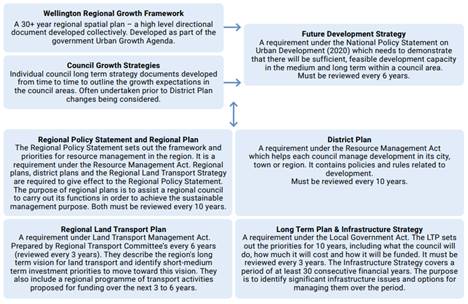
45 The
guidance provided through the Framework will help to inform the Councils
upcoming Growth Strategy process, and future changes to the District Plan.
46 Public
consultation for the Framework is expected to take place in the first half of
2021. Insights gained will be used to shape the Councils draft growth strategy,
which itself is intended for public consultation in mid-late 2021.
Legal
considerations
47 There
are no legal considerations in relation to the recommendations made in this
Council Report.
Financial
considerations
48 Any
costs to the Council associated with future projects and initiatives resulting
from the Framework will need to be considered in upcoming Long Term Plan and
Annual Plan processes.
Tāngata
whenua considerations
49 The
Framework seeks to reflect the housing and urban development aspirations of
mana whenua in the region.
50 All
iwi of the region have had the opportunity to participate in the development of
the draft Framework, and to participate in the Project Steering Group and
Executive Review Group.
Strategic
considerations
51 Through
the 2018 Long Term Plan, the Council identified ten-year outcomes, including
five which had a three-year focus. The Framework, and in particular the
key initiatives and projects identified in the Framework, will support the
Councils’ progress towards achieving a number of the outcomes, including:
51.1 Infrastructure
investment that supports resilience and agreed growth projections.
The Framework identifies where
areas for housing, public transport and roads, three waters infrastructure,
businesses and jobs, are recommended in the context of issues such as housing
affordability, climate change, resilience and natural hazards.
51.2 Improved
financial position against financial constraints.
The Framework has been a
collaboration between central government, the councils of the region and iwi,
and other regions that have completed their spatial plans have found funding
and partnership benefits through the process.
The Framework seeks to understand
how we can respond to key urban development challenges and opportunities in a
way that gets the best outcomes and maximises the benefits across the region.
51.3 An
effective response to climate change in Kāpiti.
Climate change has been a key
factor in the development of the Framework. The Framework identifies the
need to address the urban development challenges of climate change and
transitioning to a zero-carbon economy at a regional scale, by planning and
undertaking projects regionally to address the urban development impacts of
climate change, particularly impacts on infrastructure and where people live
and work and work to transition to a zero-carbon economy.
51.4 A
more diverse range of businesses in the district.
A key general initiative in the
Framework plans for keeping central Wellington the key employment centre whilst
establishing more jobs closer to where people live and/or that are more
accessible, led by a move of government jobs.
The Framework also seeks to
support increasing local employment in major centres and nodes to help ensure
they increasingly offer many more employment opportunities.
51.5 A
community that is more resilient through Council’s advocacy.
The Council has been involved
with the development of the Framework, to ensure that the needs, challenges and
opportunities in Kāpiti have been considered.
Significance and Engagement
Significance
policy
52 This
matter has a moderate degree of significance under Council’s Significance
and Engagement Policy.
Consultation
already undertaken
53 No
public consultation has been undertaken prior to this report being presented to
Council.
Engagement
planning
54 Public
consultation on the Framework is expected to be undertaken in the first half of
2021 once all of the partners have endorsed the draft for consultation.
55 A
plain English version of the draft Framework document will be developed with
partners’ staff once there is more certainty about timing, content and
the way to consult e.g. paper, interactive website, open days.
56 An
example of the type of messaging and language that would be used for public
consultation has been attached as Appendix Two.
|
Recommendations
57 That
the Council notes the draft Wellington Regional Growth Framework has been
developed in partnership with Central Government, Local Government and mana
whenua in the Greater Wellington-Horowhenua region.
58 That
the Council notes that a plain English version of the draft Framework
document will be developed for public consultation, with an example attached
as Appendix Two.
59 That
the Council notes that public consultation on the draft Wellington Growth
Framework is expected to be undertaken in the first half of 2021.
60 That
the Council endorse the draft Wellington Regional Growth Framework, attached
as Appendix One, for public consultation.
|
Appendices
1. Draft
Wellington Regional Growth Framework Sept 2020 ⇩ 
2. Working
together to plan for our future public doc Sept 2020 ⇩ 
|
Council
Meeting Agenda
|
10 December 2020
|
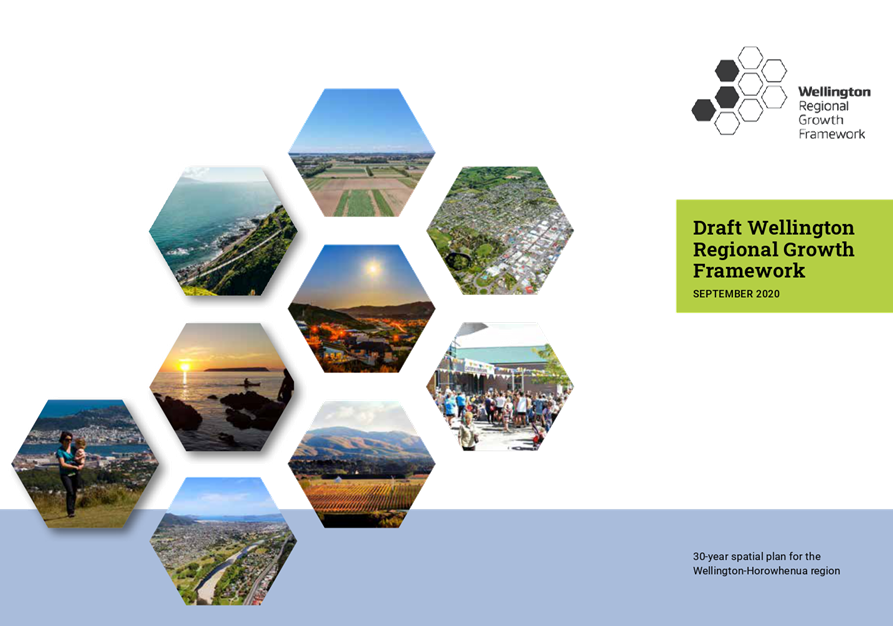

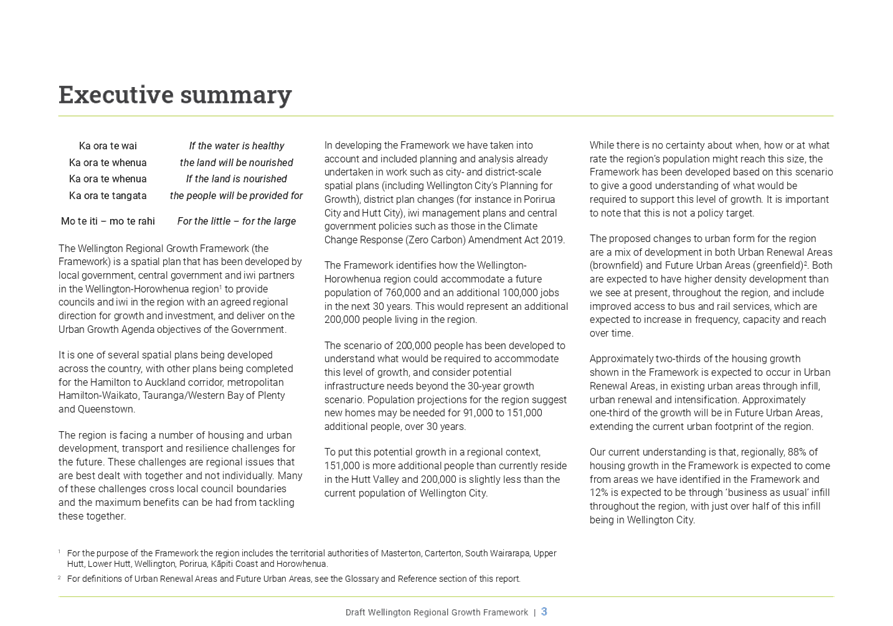
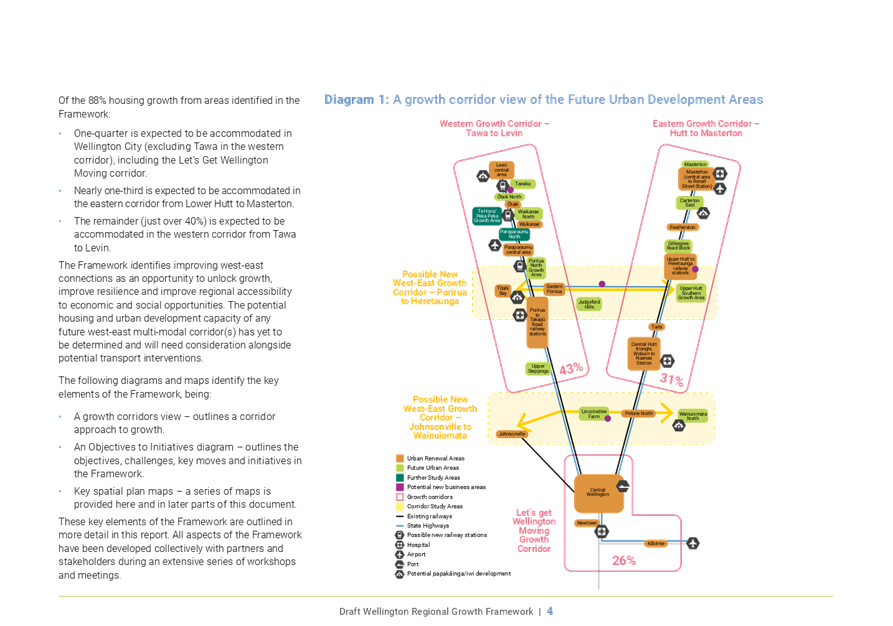
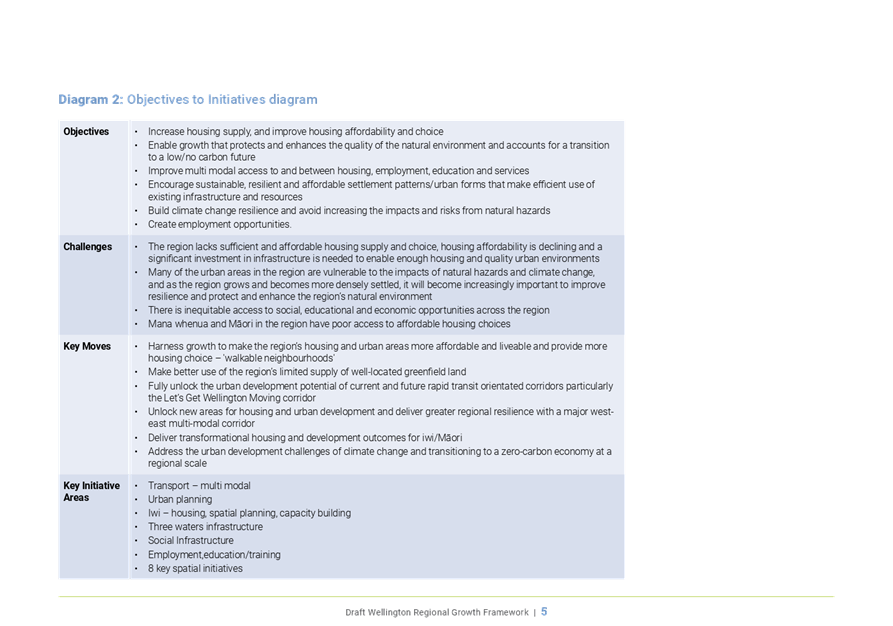


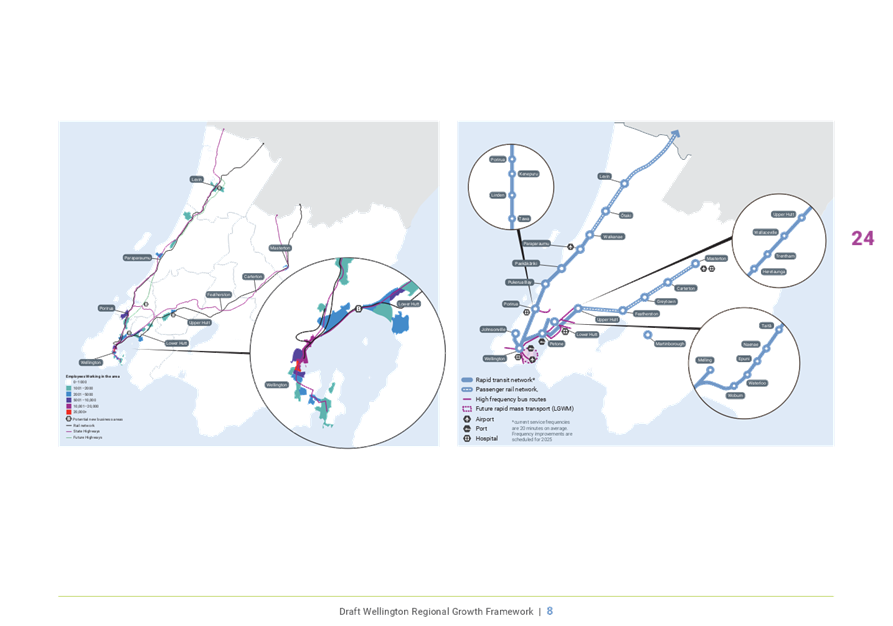

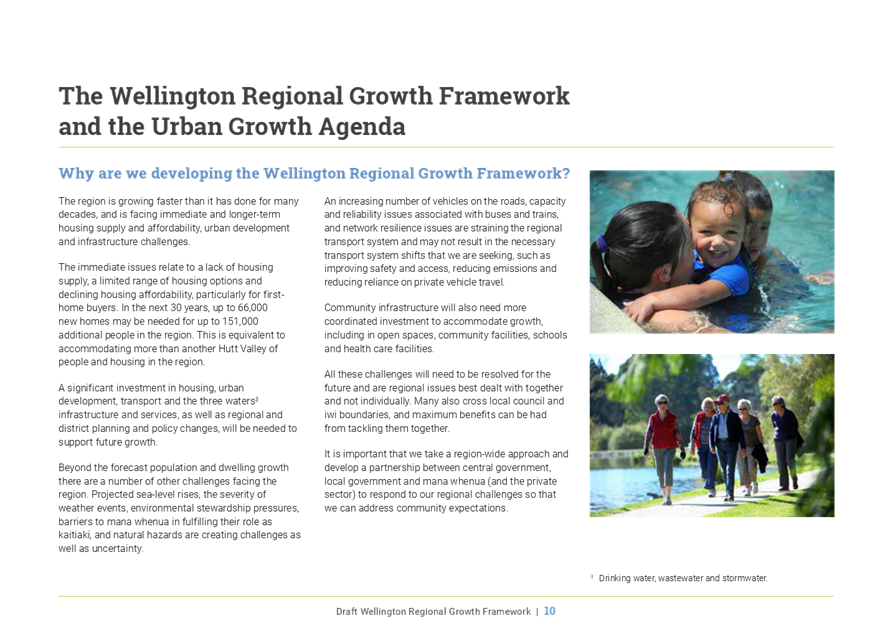
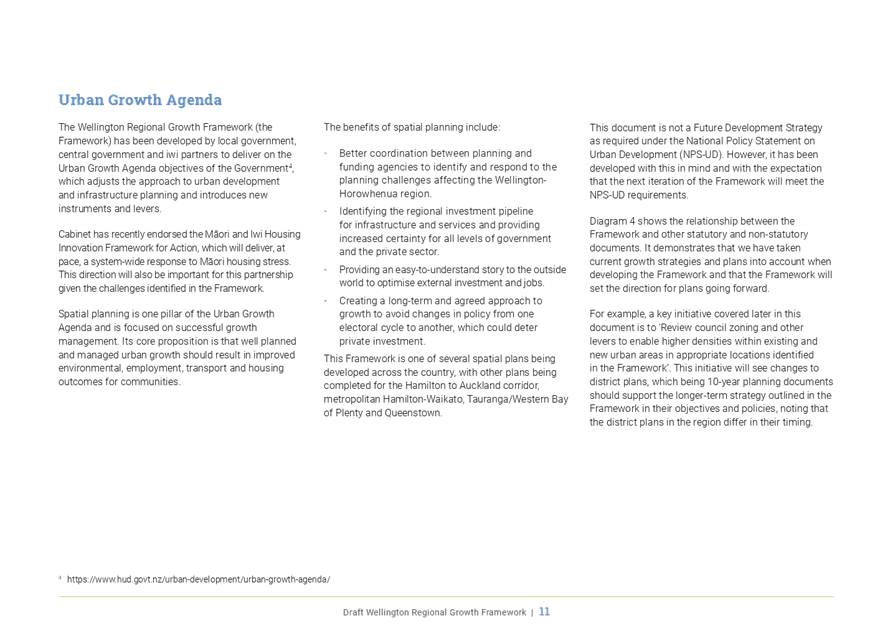



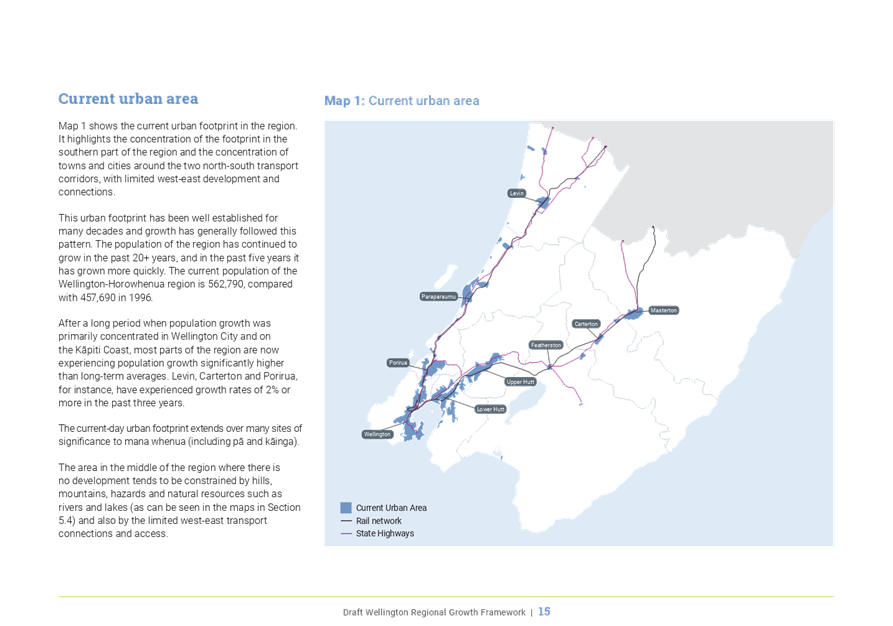
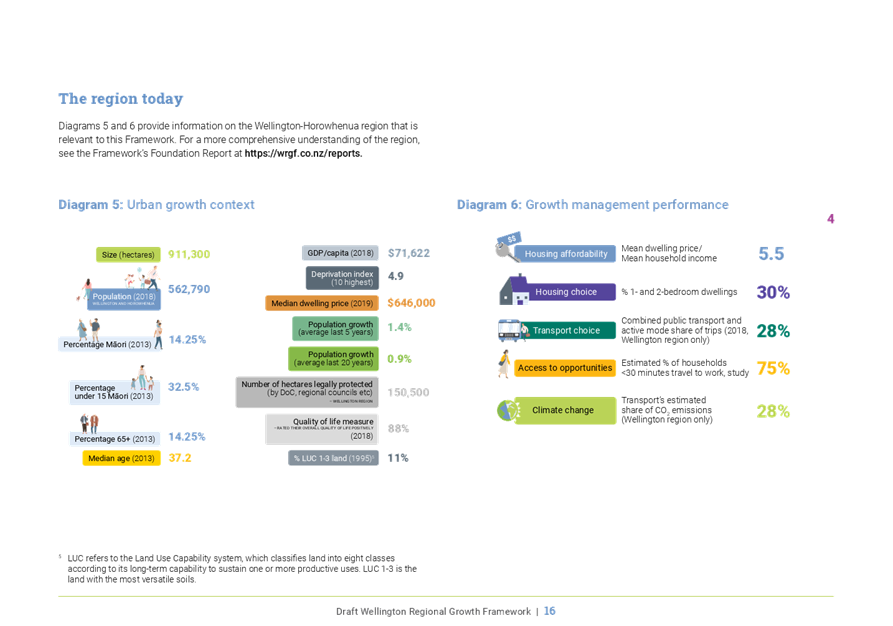

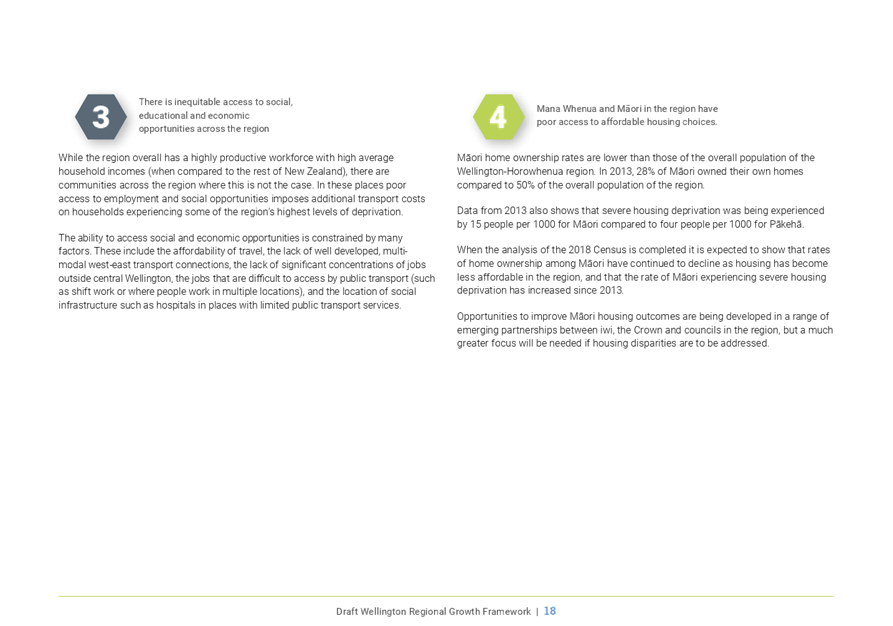


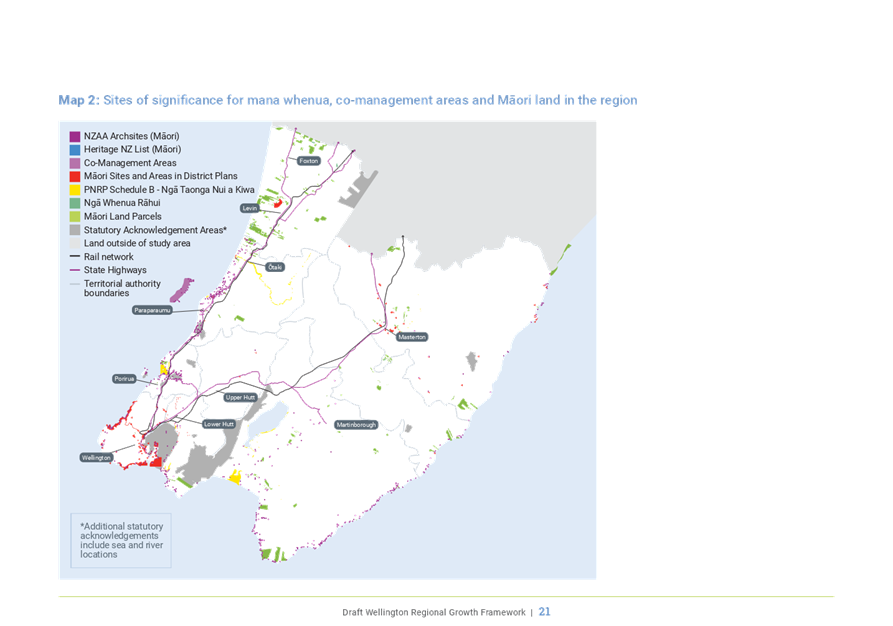
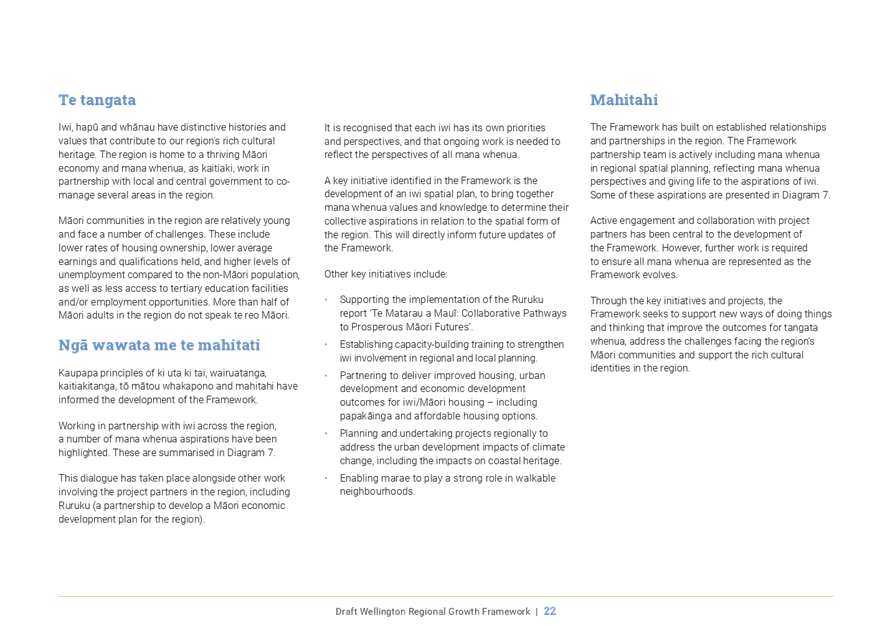

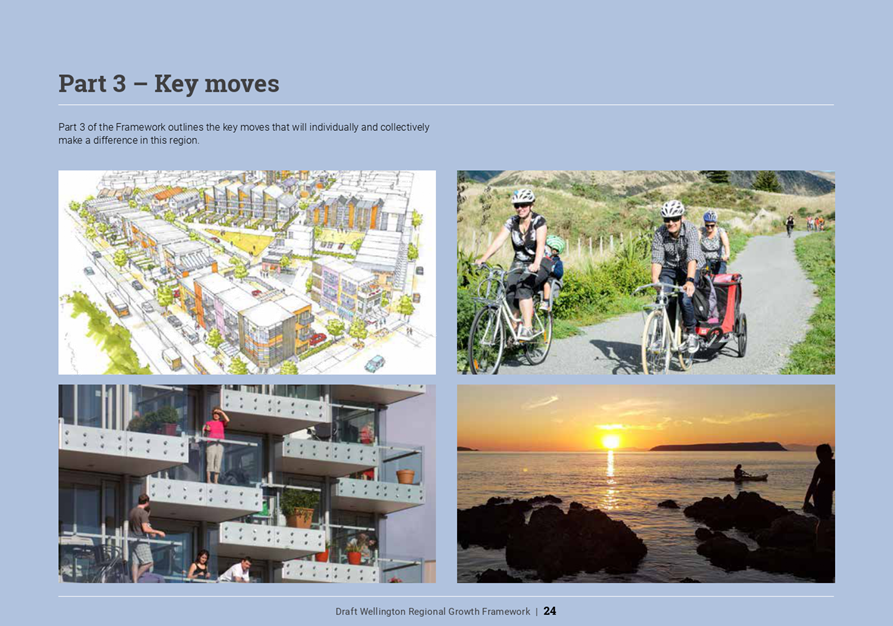
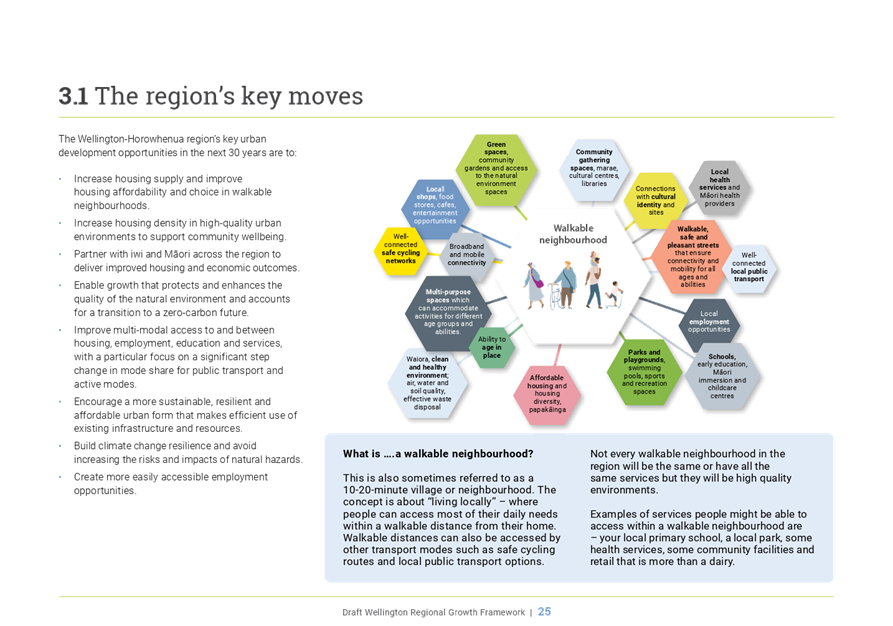


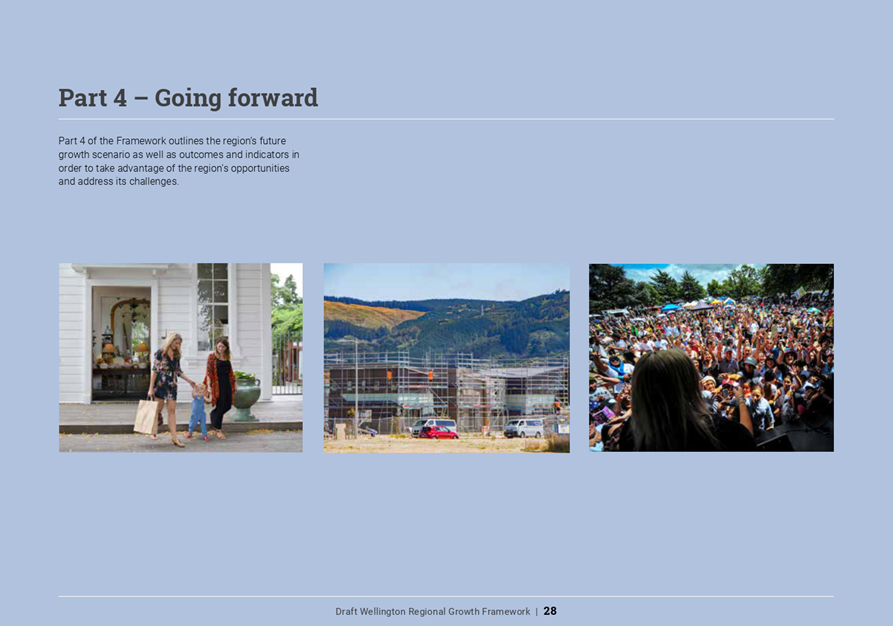
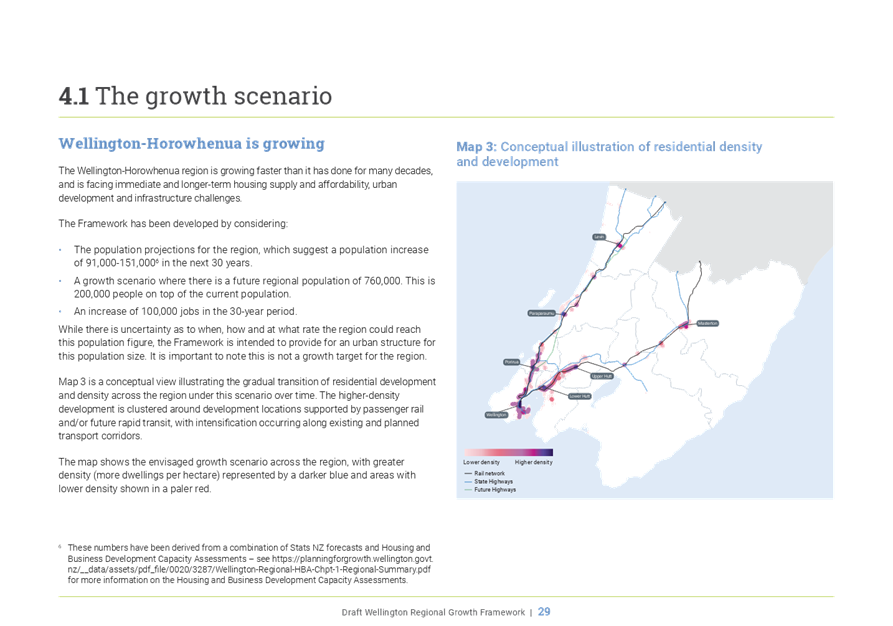

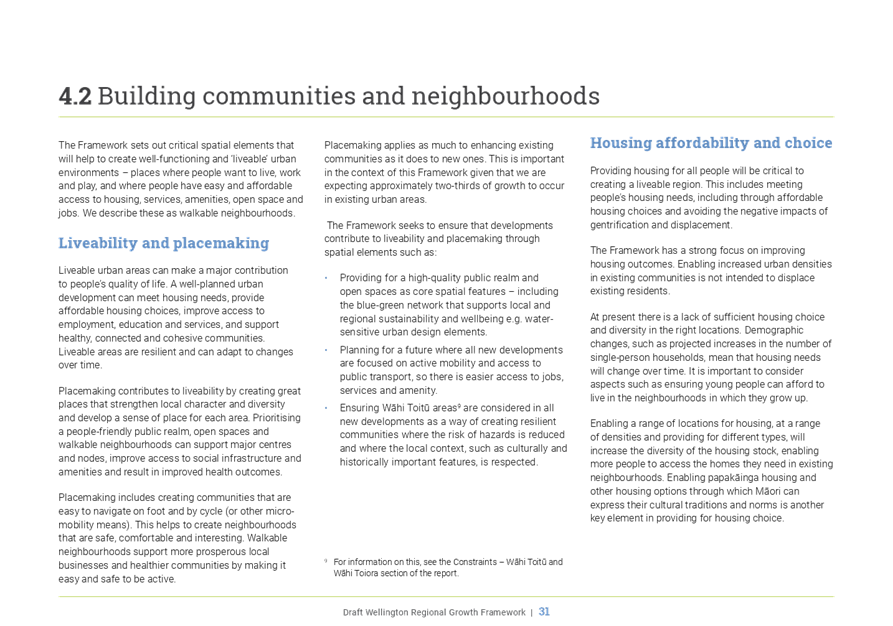
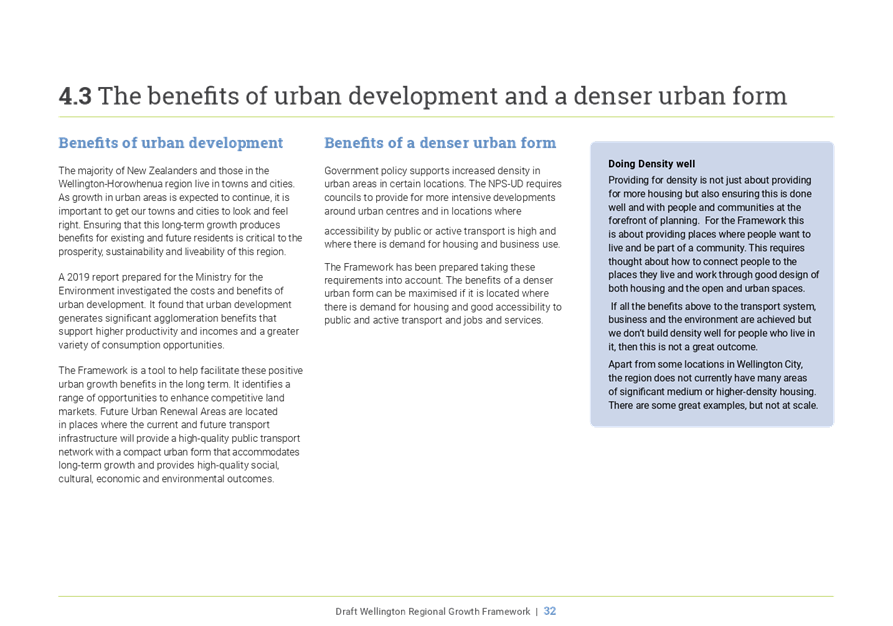
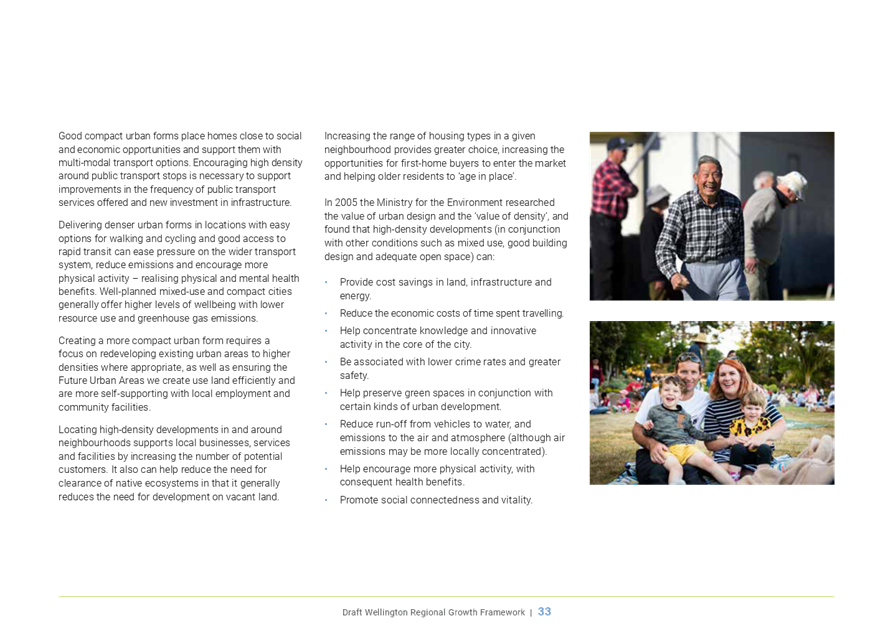
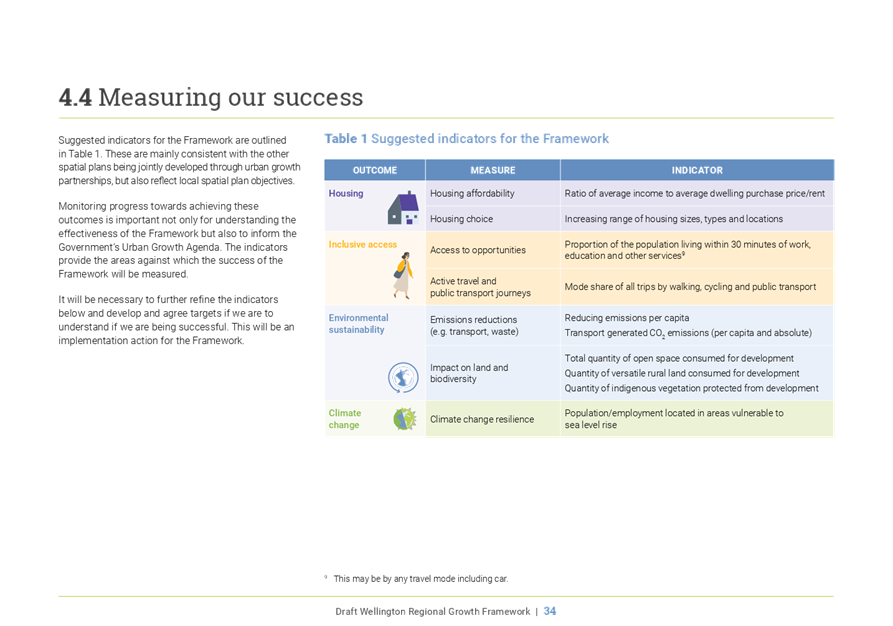

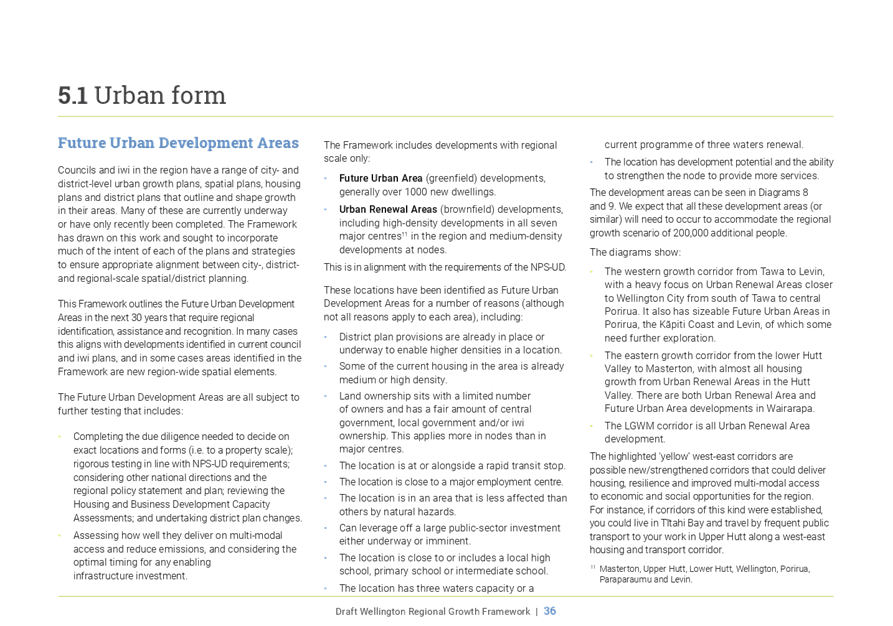

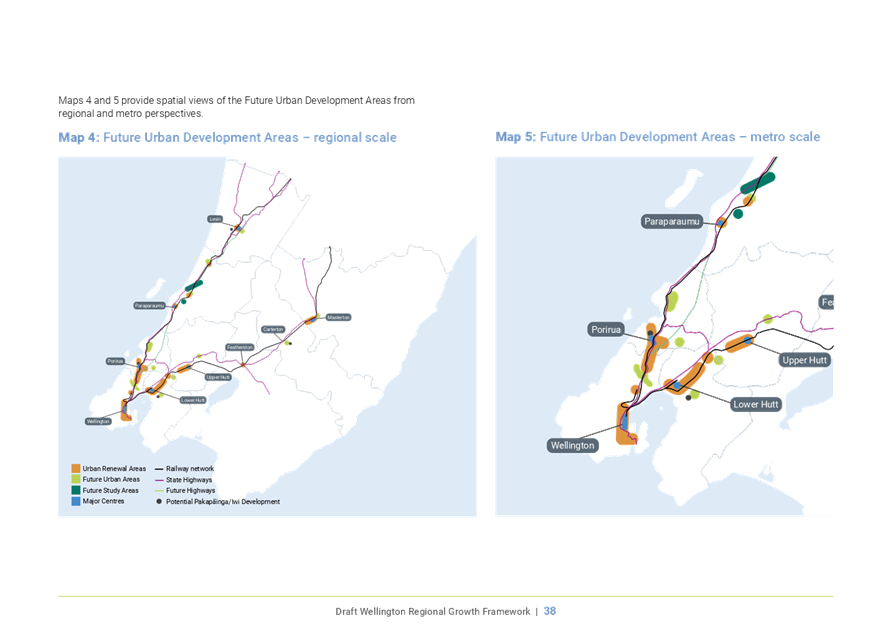
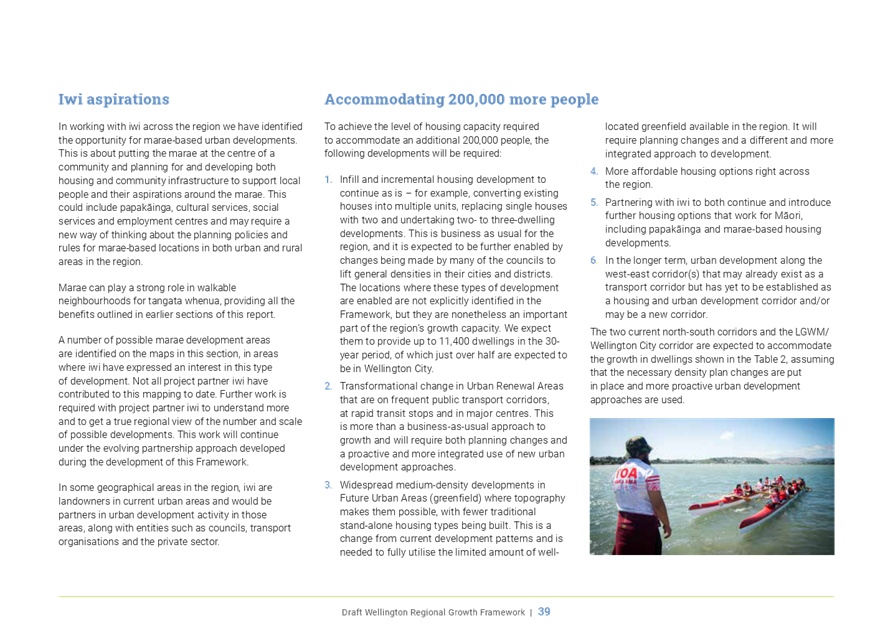
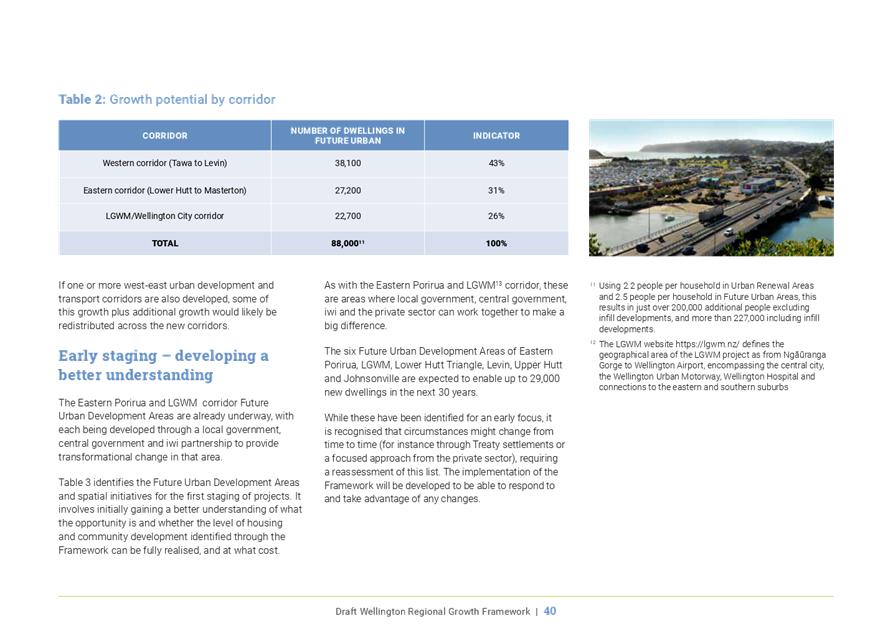
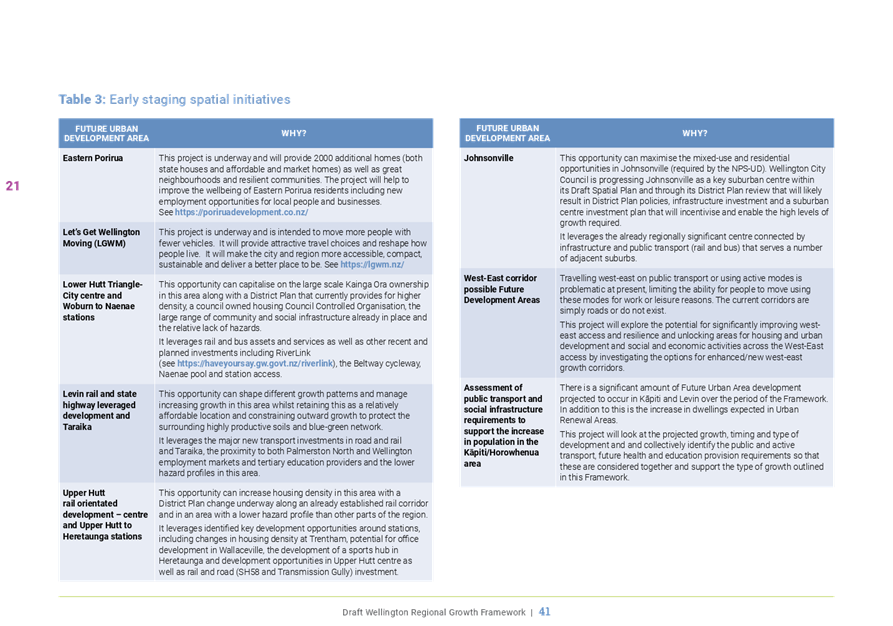
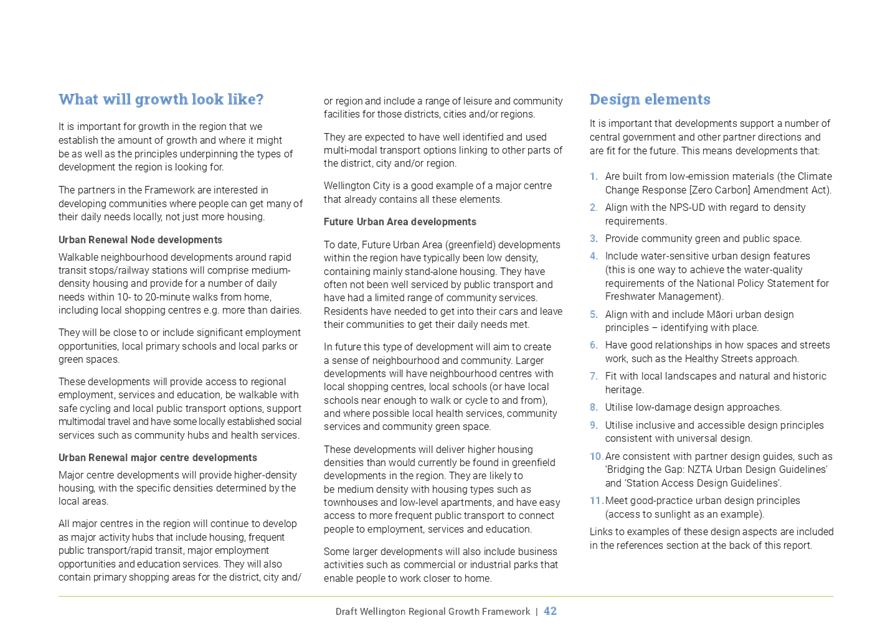


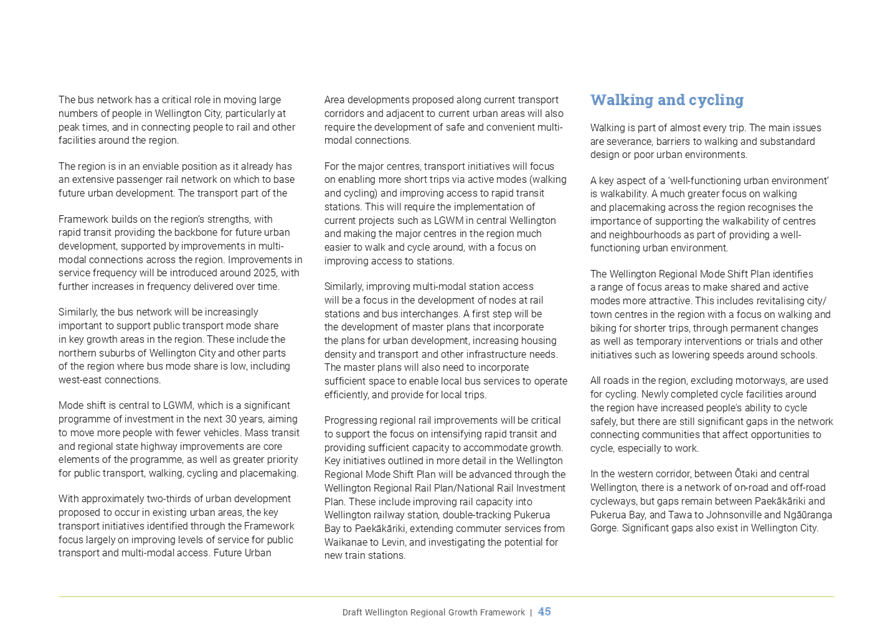
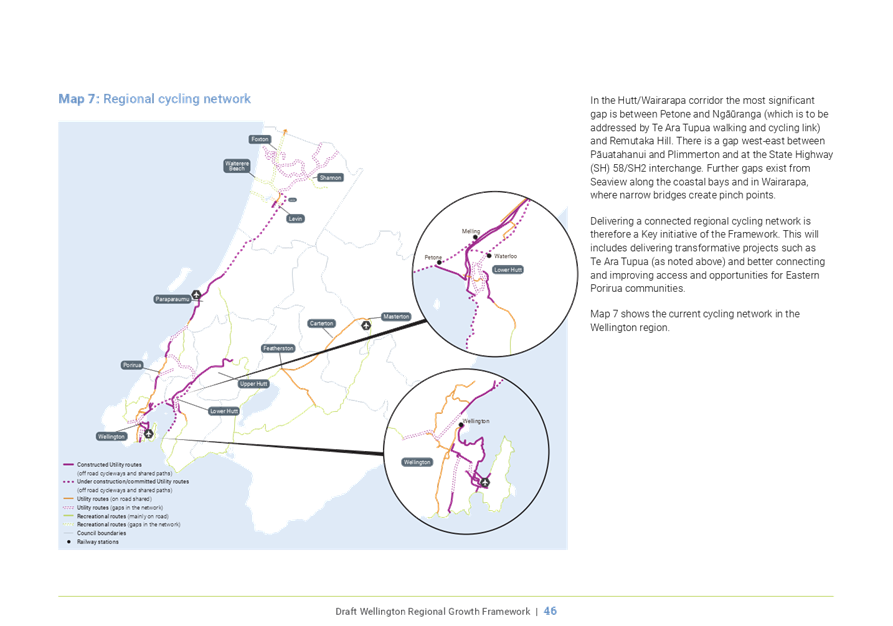
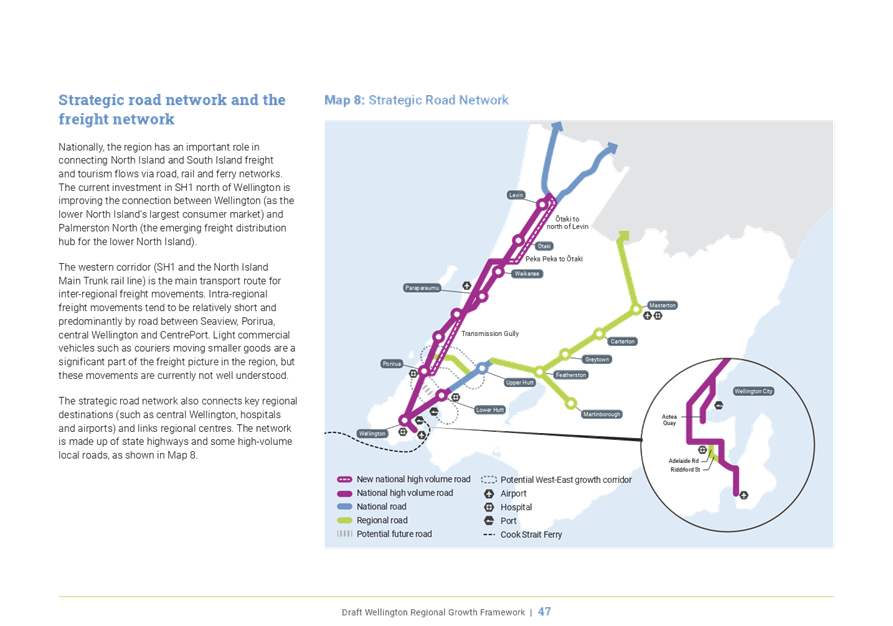
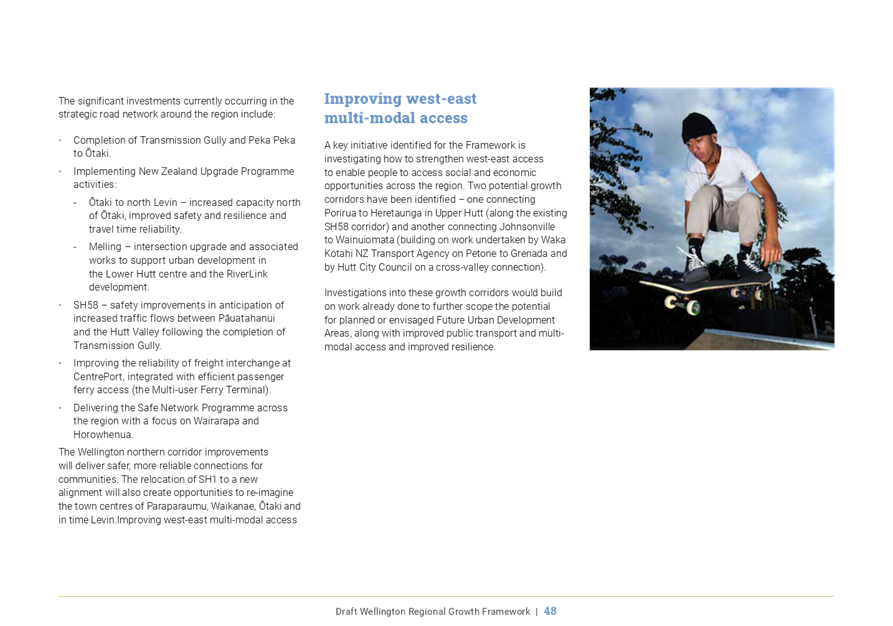

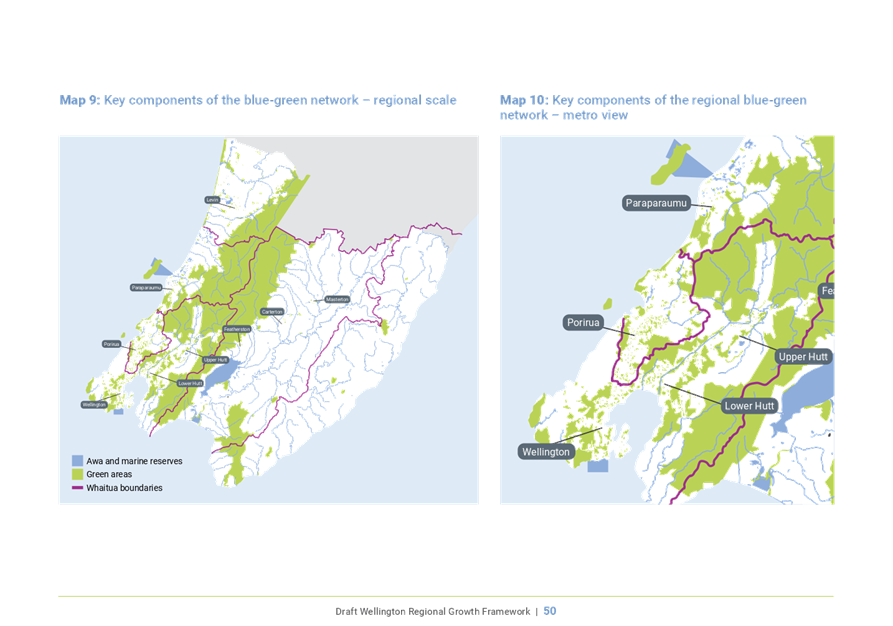
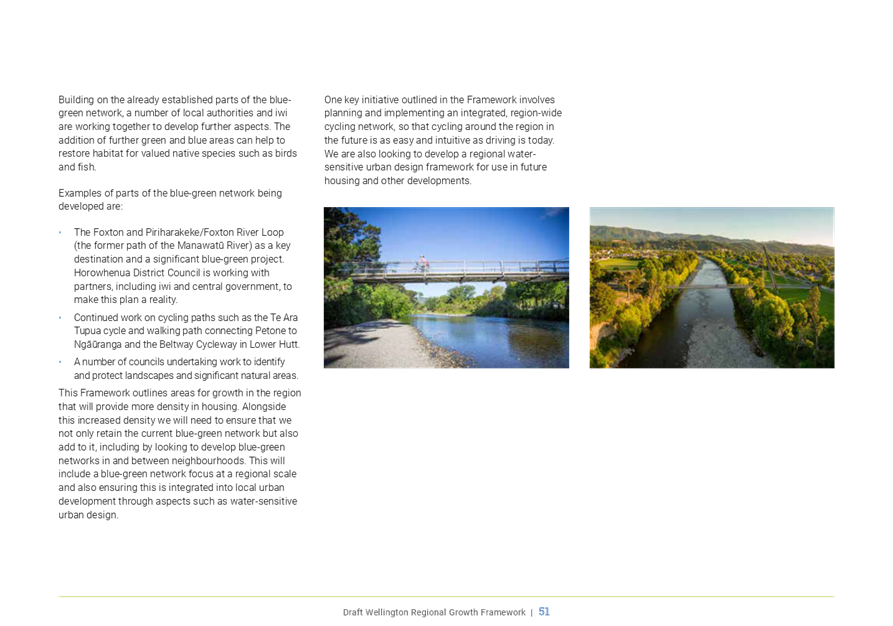
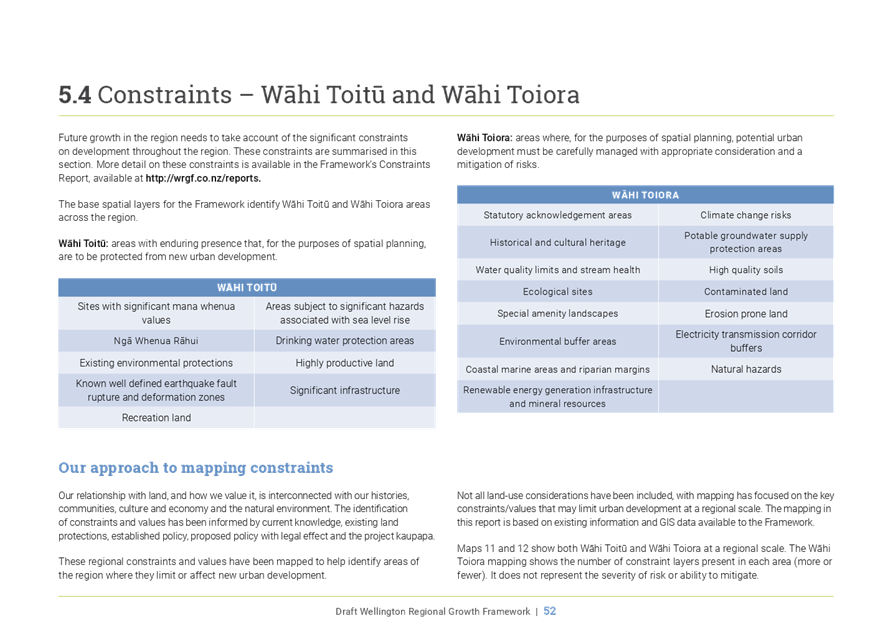
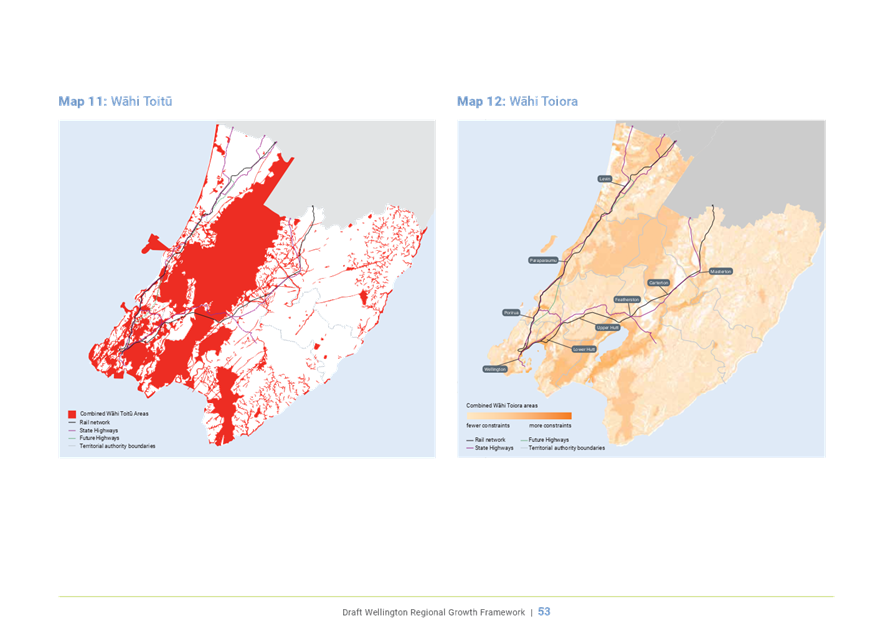

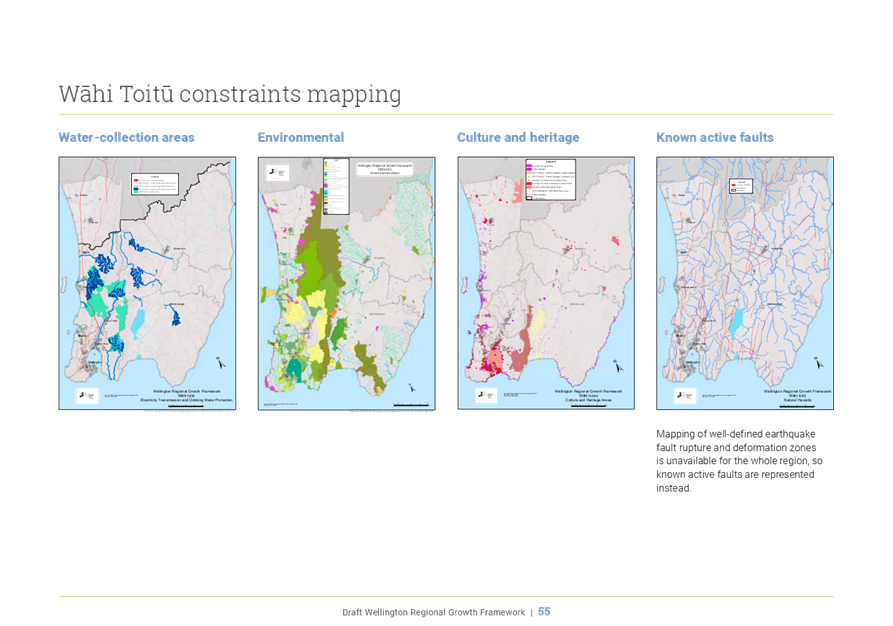
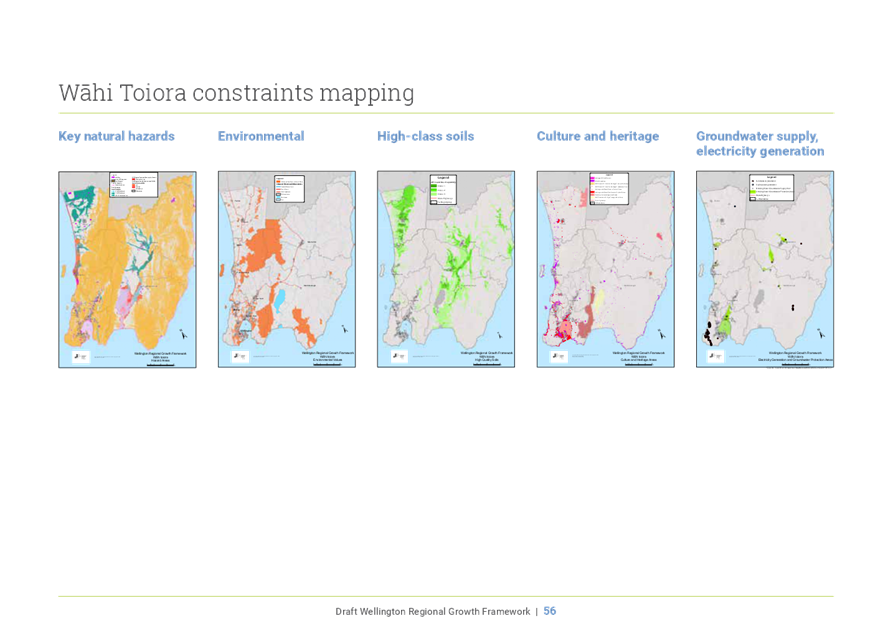

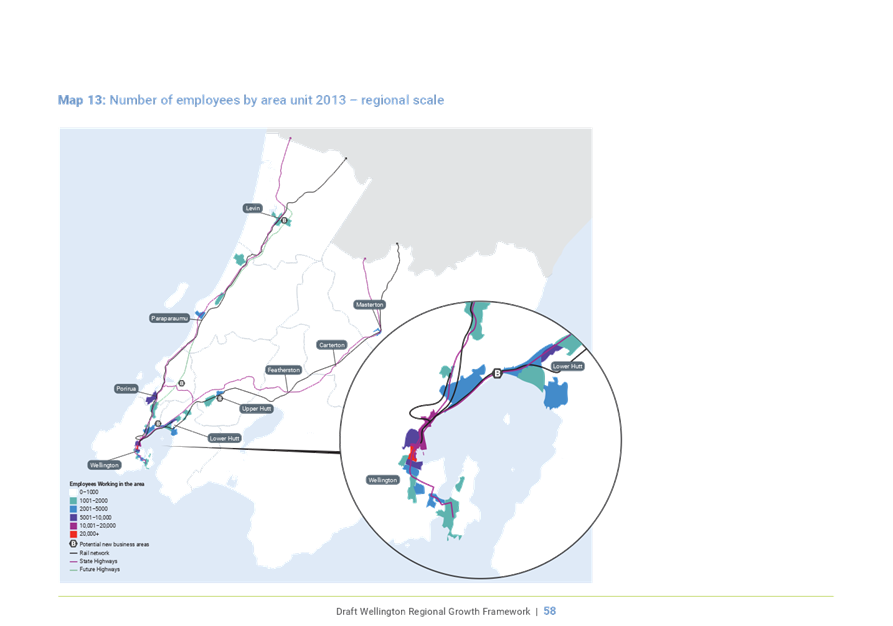
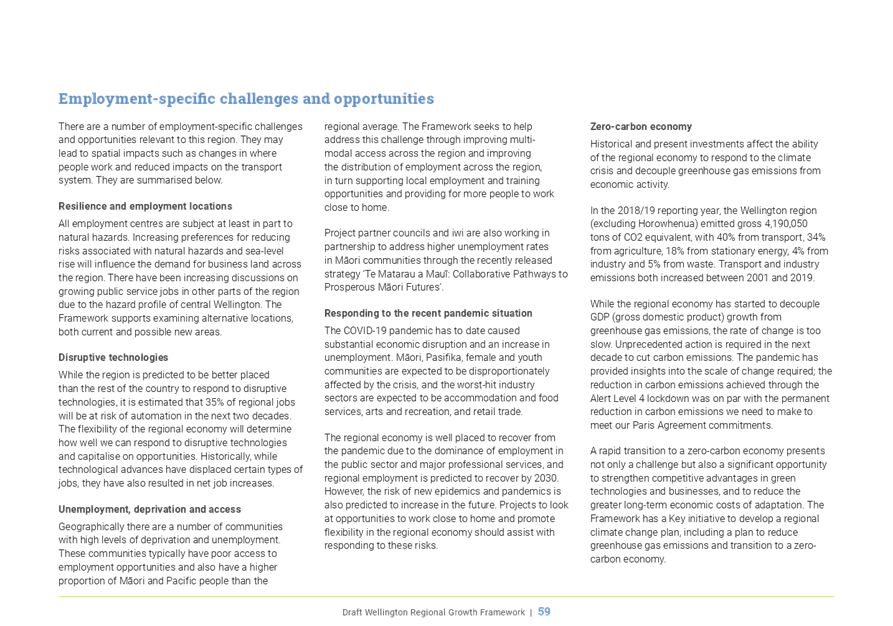
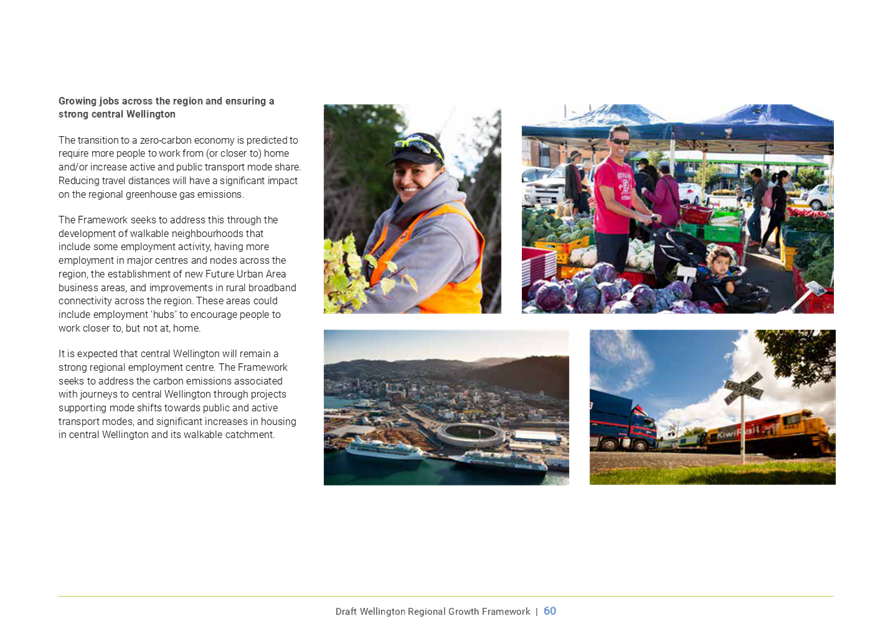
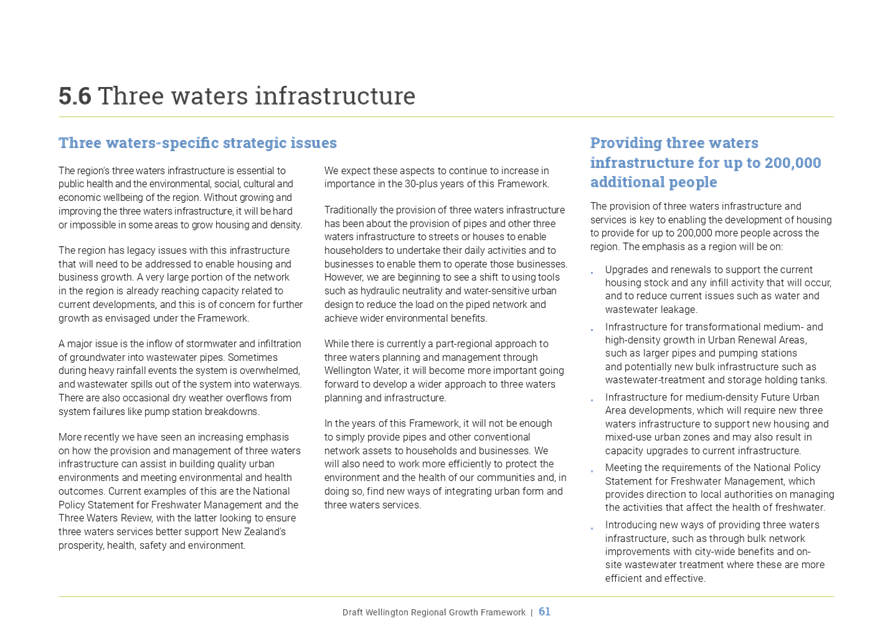

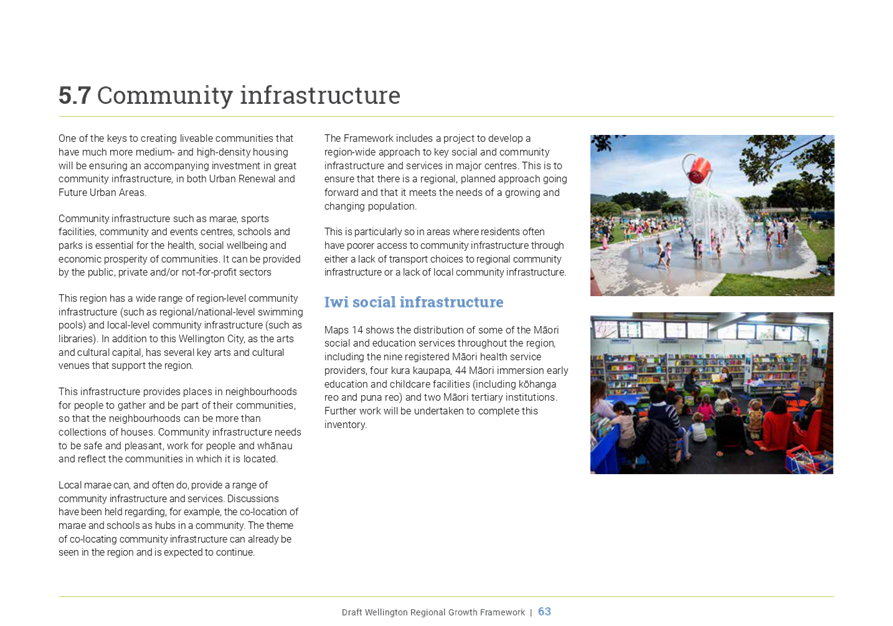
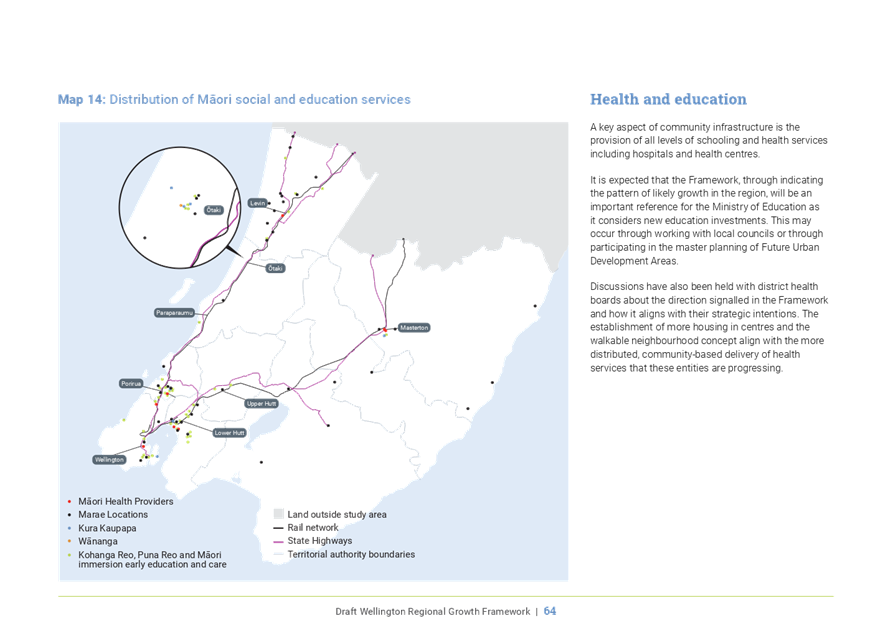
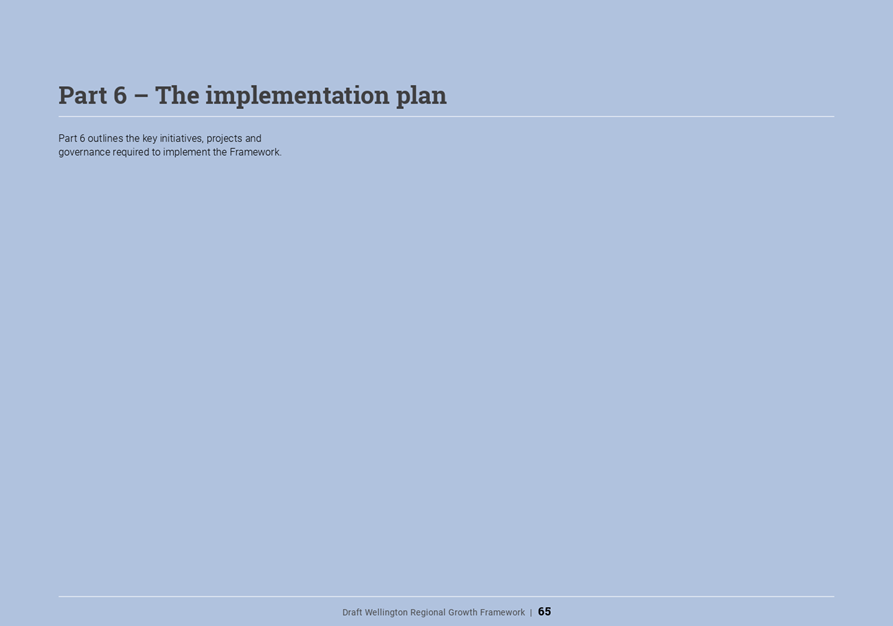
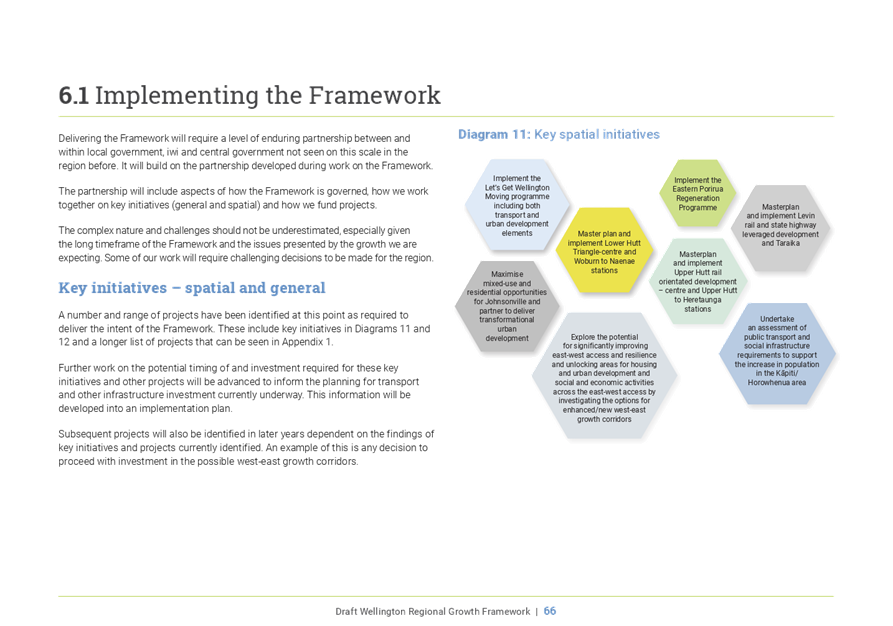

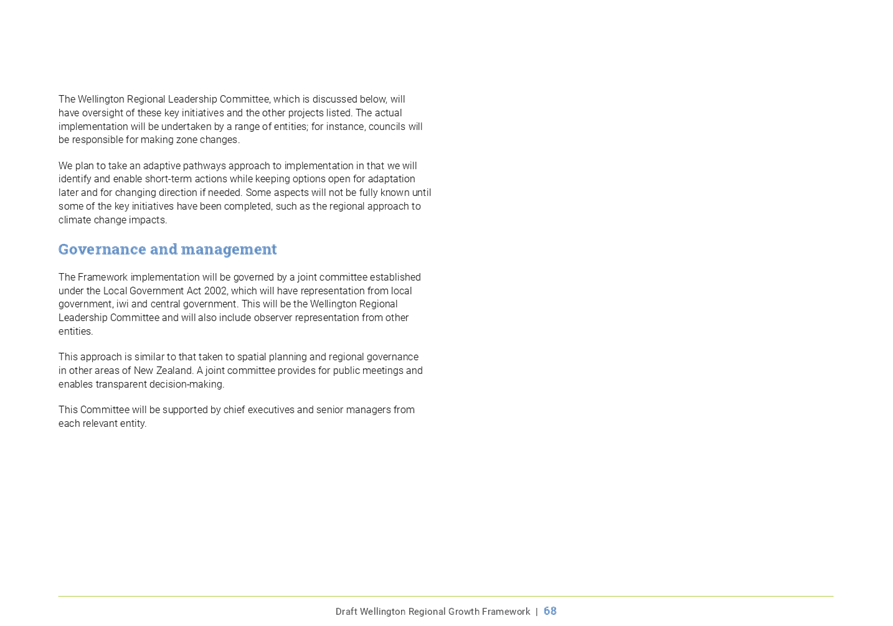
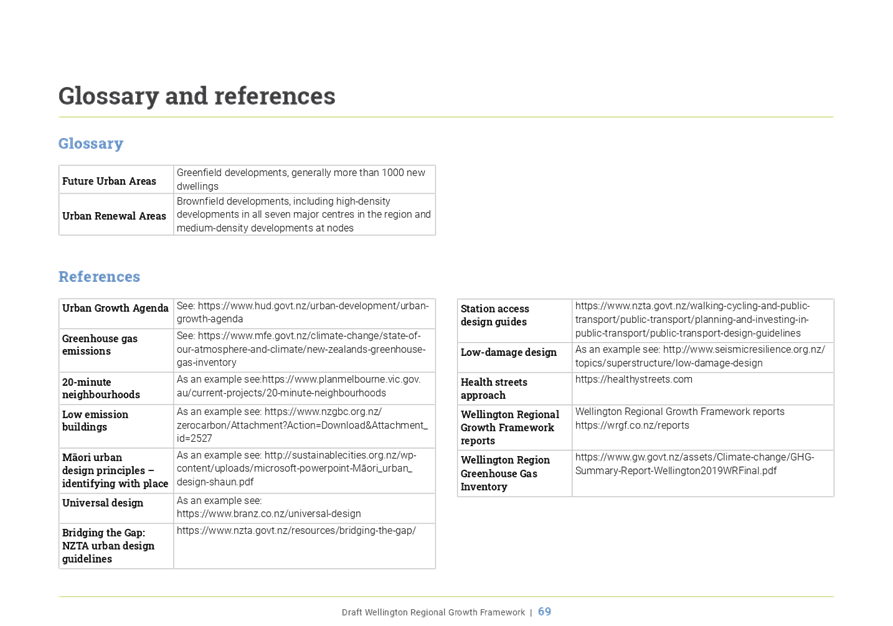
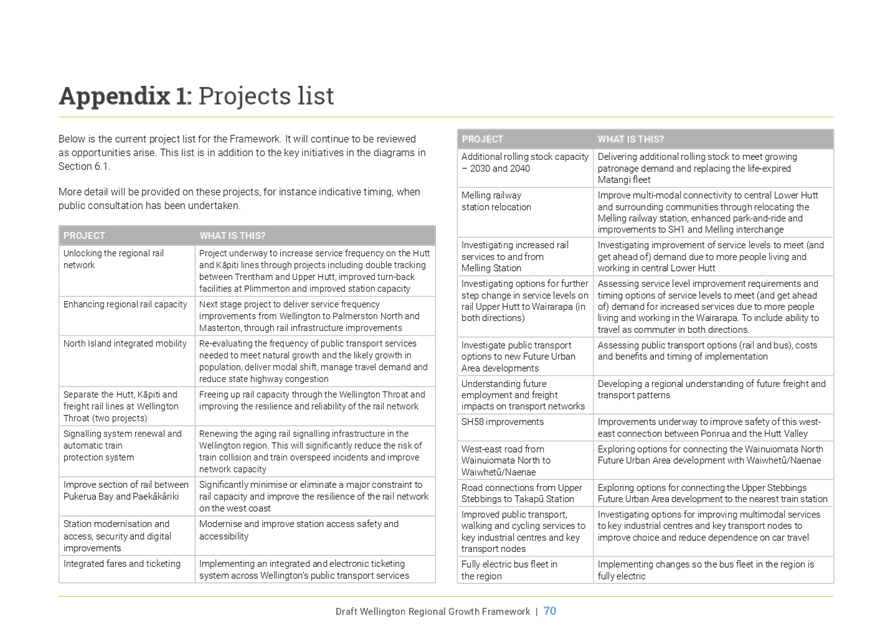
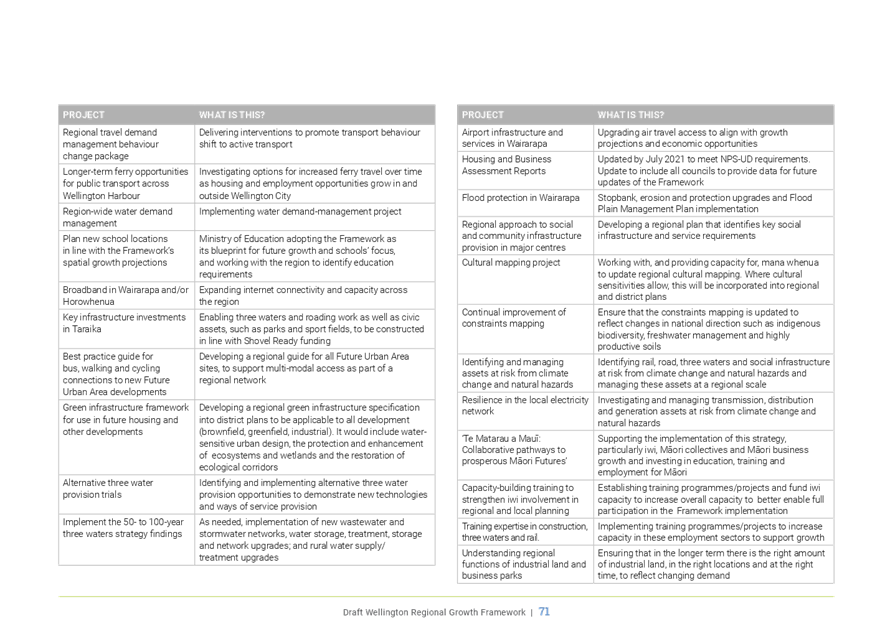
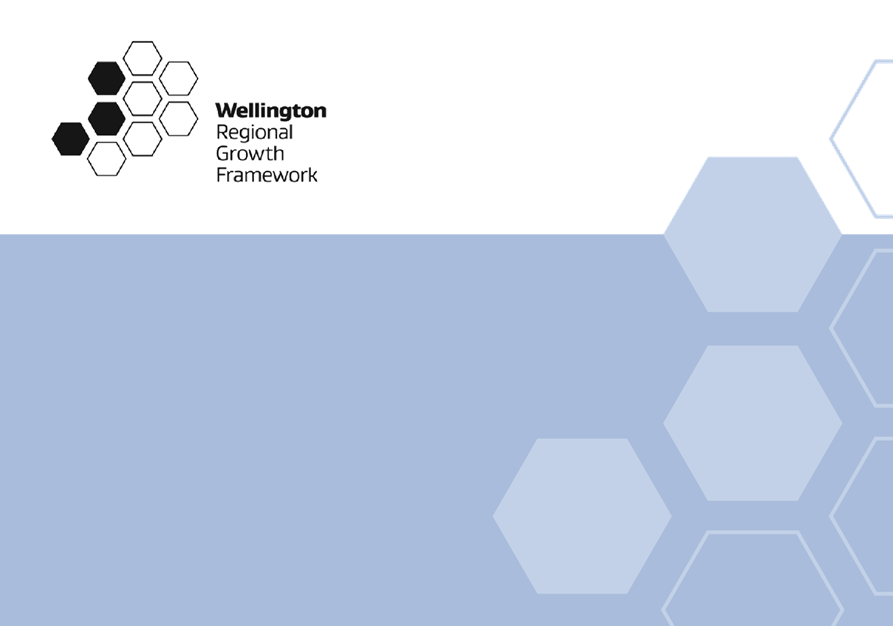
|
Council Meeting Agenda
|
10 December 2020
|


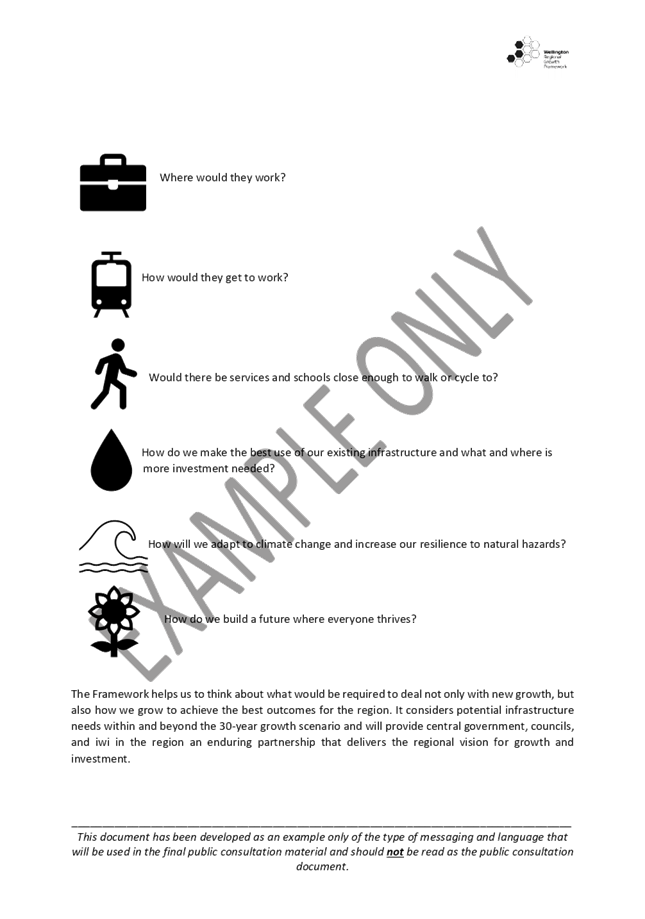
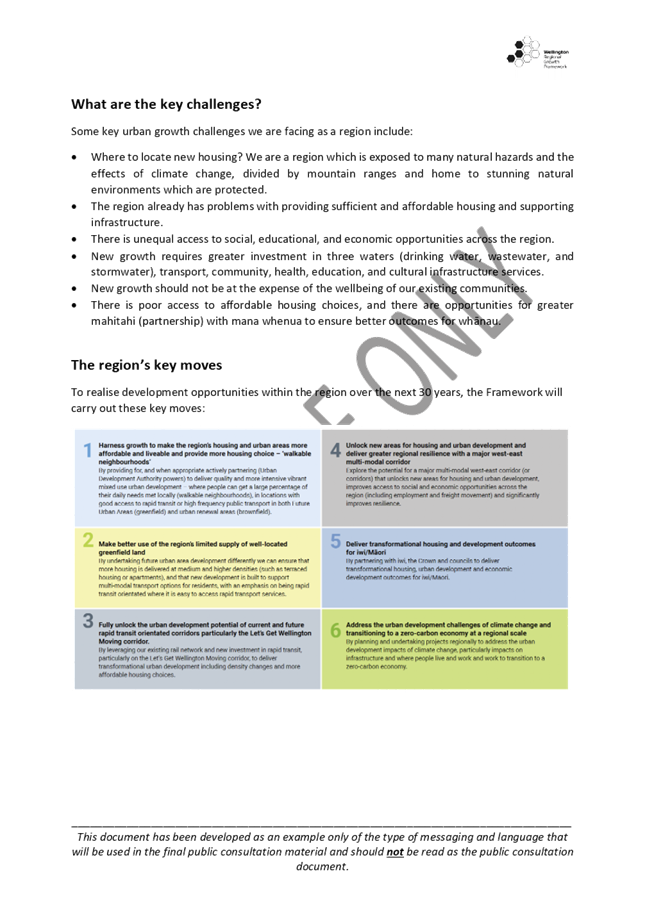


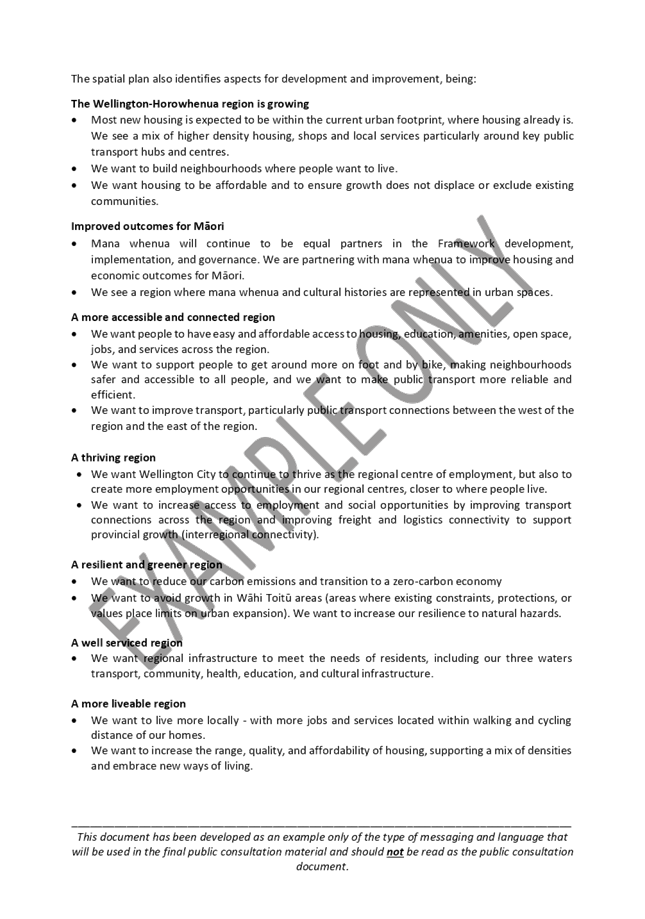
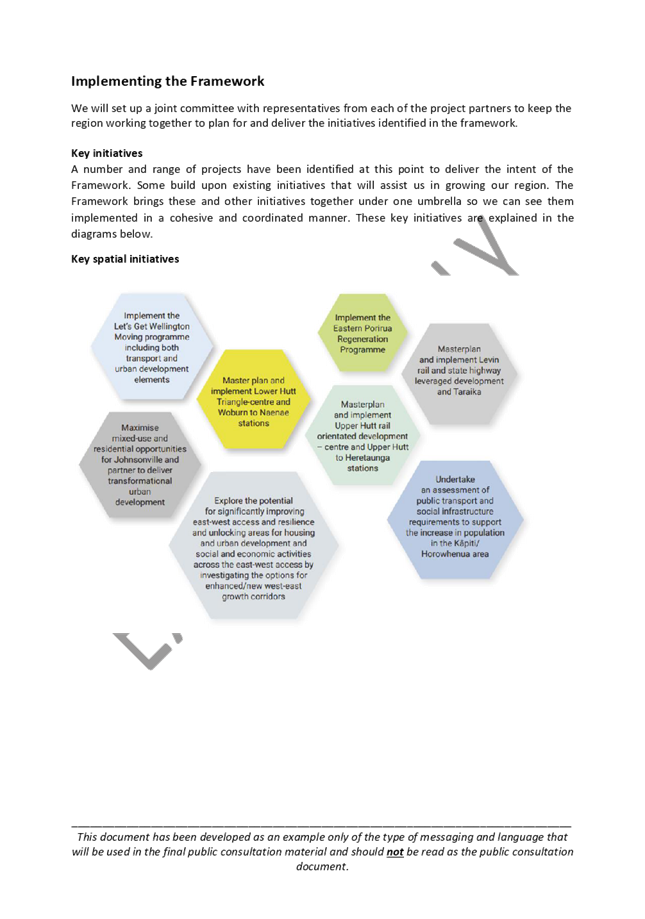

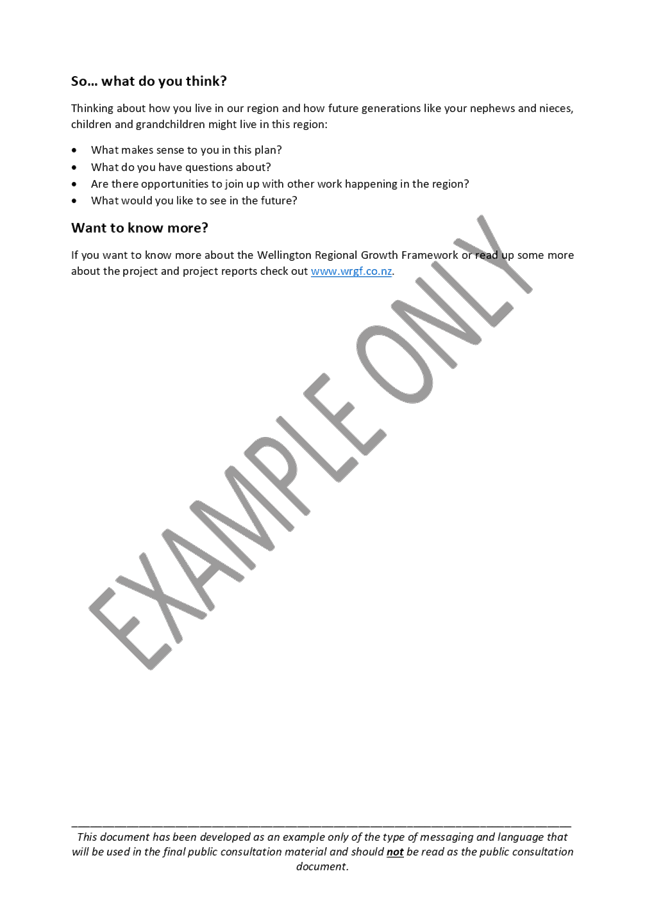
10 Confirmation
of Minutes
10.1 Confirmation
of minutes
Author: Grayson
Rowse, Democracy Services Advisor
Authoriser: Leyanne
Belcher, Democracy Services Manager
|
Recommendations
That the minutes of the
Council meeting on 29 October 2020 be accepted as a true and accurate record
of the meeting.
|
Appendices
1. Council
meeting minutes 29 October 2020 ⇩ 
|
Council
Meeting Agenda
|
10 December 2020
|
MINUTES OF Kapiti Coast District Council
Council Meeting
HELD AT THE Council
Chamber, Ground Floor, 175 Rimu Road, Paraparaumu
ON Thursday, 29
October 2020 AT 9.30am
PRESENT: Mayor
K Gurunathan, Cr Angela Buswell, Cr James Cootes, Cr Jackie Elliott, Cr Gwynn
Compton, Cr Martin Halliday, Cr Sophie Handford, Cr Robert McCann, Cr Bernie
Randall
IN
ATTENDANCE: Community Board Member Holly Ewens
Community
Board Member Kathy Spiers
Community
Board Member James Westbury
Community
Board Member Christine Papps
Chair
of Te Whakaminenga o Kāpiti Rupene Waaka (via Zoom)
Wayne
Maxwell, Natasha Tod, Sean Mallon, Janice McDougall, Mark de Haast, James
Jefferson, Tim Power, Leyanne Belcher, Angela Bell, Nienke Itjeshorst, Kahu
Ropata, Melissa Smith, Grayson Rowse, Tanicka Mason
APOLOGIES: Cr
Jocelyn Prvanov
LEAVE OF Deputy
Mayor Janet Holborow
ABSENCE:
1 Welcome
2 Council
Blessing
The Mayor welcomed everyone to the meeting and Cr Handford
read the Council blessing in te reo.
3 Apologies
|
Resolution 2020/29
Moved: Cr
Gwynn Compton
Seconder: Cr Sophie Handford
That apologies from Cr Jocelyn Prvanov be received and
accepted.
Carried
|
4 Declarations
of Interest Relating to Items on the Agenda
5 Public
Speaking Time for Items Relating to the Agenda
Takiri Cotterill spoke to item 8.5 on the agenda.
Gave thanks to the Council for the support given to the Puketapu Hapū for
historical claims that are before the Crown and in particular the claim around
the Paraparaumu Airport. Takiri hopes for the health and strength of the
community to grow. Having a vision and heart to be proud of.
George Jenkins spoke to item 8.5. His wish is for the
report to remain on the table for the time being. There will be a meeting
between the owners of the Templeton Group and Puketapu Hapū to
which Council will also be invited.
6 Members’
Business
(a) Public
Speaking Time Responses
(b) Leave
of Absence
(c) Matters
of an Urgent Nature (advice to be provided to the Chair prior to the
commencement of the meeting)
7 Mayor's
Report
|
Tabled documents
|
|
Resolution 2020/30
Moved: Cr
Jackie Elliott
Seconder: Cr Angela Buswell
The the Mayor’s report be accepted.
Carried
|
Item 8.5 was
moved to this point in the meeting.
8 Reports
|
8.5 Paraparaumu
Airport Waitangi Tribunal Claims
|
|
Resolution 2020/31
Moved: Mayor
K Gurunathan
Seconder: Cr Gwynn Compton
That the Paraparaumu Airport Waitangi Tribunal Claims
report be left to lie on the table.
Carried
|
|
8.1 Submissions
on the Draft Solid Waste Management and Minimisation Bylaw 2020
|
|
Nienke Itjeshorst, Sustainability and Resilience Manager
gave a brief introduction to the report. There were no public requests
to speak to the submissions received.
Nienke and Sean Mallon, Group Manager Infrastructure
Services answered Councillors questions.
|
|
Resolution 2020/32
Moved: Cr
Jackie Elliott
Seconder: Cr Robert McCann
That the Council notes:
That 27 submissions were received on the Draft Kāpiti
Coast District Council Solid Waste Management and Minimisation Bylaw 20208;
and
that a report proposing the adoption of the Draft
Kāpiti Coast District Council Solid Waste Management and Minimisation
Bylaw 2020 will be presented to Council on 26 November 2020.
Carried
|
|
8.2 Approach
to 2021 Review of Representation Arrangements for the Kapiti Coast District
|
|
Janice McDougall, Group Manager People and Partnerships
brought to members attention that paragraph 30 of the report contains an
error. It states that “we have approached Iwi to begin a conversation
around the representation review”, it should read that “Iwi are
about to be approached for consultation”.
Apart from that error, Leyanne Belcher, Democracy Services
Manager took the report as read and answered members questions.
|
|
Motion
Moved: Cr
James Cootes
Seconder: Cr Angela Buswell
For: Crs
K Gurunathan, Angela Buswell, James Cootes and Sophie Handford
Against: Crs
Jackie Elliott, Gwynn Compton, Martin Halliday, Robert McCann and Bernie
Randall
lost 4/5
That Council approve the convening of an independent Review Panel
comprising an Independent Chair and up to 6 independent community
representatives.
That Council approve the Independent Review Panel Draft Terms of
Reference attached as Appendix 1 to this report.
That Council approve remuneration of $206 per person per day for
community representatives and $294 per day for the Chair.
That Council delegate to the Mayor, Chief Executive and the panel
Chair the responsibility for the appointment of the independent members for
the panel.
|
|
Resolution 2020/33
Moved: Cr
Gwynn Compton
Seconder: Cr Robert McCann
That Council approve a staff-led community engagement process to
inform recommendations to Council for consideration.
For: Crs
Jackie Elliott, Gwynn Compton, Martin Halliday, Robert McCann and Bernie
Randall
Against: Crs
K Gurunathan, Angela Buswell, James Cootes and Sophie Handford
carried 5/4
Carried
|
|
8.3 Recommendation
on Consideration of the Establishment of a Māori Ward
|
|
Leyanne took the report as read and invited questions
through the Chair.
|
|
Resolution 2020/34
Moved: Cr
James Cootes
Seconder: Mayor K Gurunathan
That the Council resolves not to consider a Māori
Ward for electoral purposes.
Carried
|
|
8.4 Draft
Calendar of Meetings 2021
|
|
Leyanne took the report as read and directed any questions
through His Worship the Mayor.
|
|
Resolution 2020/35
Moved: Cr
Jackie Elliott
Seconder: Cr Gwynn Compton
That the Council approves the calendar of meetings 2021 as
detailed in Appendix 1 of this Draft Calendar of Meetings 2021 report.
Carried
|
9 Confirmation
of Minutes
|
9.1 Confirmation
of minutes
|
|
Resolution 2020/36
Moved: Cr
Jackie Elliott
Seconder: Cr Robert McCann
That the minutes of the Council meeting on 1 October 2020
be accepted as a true and accurate record of the meeting.
Carried
|
10 Public
Speaking Time
· Covering
other items if required
· Public
Speaking Time responses
11 Confirmation
of Public Excluded Minutes
Nil
12 Public
Excluded Reports
Resolution
to Exclude the Public
|
Public Excluded Resolution 2020/37
Moved: Mayor
K Gurunathan
Seconder: Cr Jackie Elliott
That, pursuant to Section 48 of the Local Government Official
Information and Meetings Act 1987, the public now be excluded from the
meeting for the reasons given below, while the following matters are
considered.
The general subject matter of each matter to be considered
while the public is excluded, the reason for passing this resolution in
relation to each matter, and the specific grounds under section 48(1) of the
Local Government Official Information and Meetings Act 1987 for the passing
of this resolution are as follows:
|
General subject of each matter to be considered
|
Reason for passing this resolution in relation to
each matter
|
Ground(s) under section 48 for the passing of this
resolution
|
|
12.1 - STRATEGIC PROPERTY
PURCHASE - PRIORITISATION
|
Section 7(2)(h) - the withholding of the information is necessary
to enable Council to carry out, without prejudice or disadvantage,
commercial activities
Section 7(2)(i) - the withholding of the information is
necessary to enable Council to carry on, without prejudice or disadvantage,
negotiations (including commercial and industrial negotiations)
|
Section 48(1)(a)(i) - the public conduct of the relevant
part of the proceedings of the meeting would be likely to result in the
disclosure of information for which good reason for withholding would exist
under section 6 or section 7
|
Carried
|
|
Resolution 2020/38
Moved: Mayor
K Gurunathan
Seconder: Cr Jackie Elliott
That the Council moves out of a
Public Excluded meeting.
Carried
|
|
The
Council came out of public excluded session at 11.42am having resolved that
the following resolution be released from publically excluded business.
Resolution 2020/37
Moved: Cr
Gwynn Compton
Seconder: Cr Angela Buswell
That the Council:
Ex Landfill Land
Approves
the acquisition of Section 6, 7, 8, 9, 11, 12, 16, 18, 20, 21 and 28 from
NZTA for retaining water monitoring, wetlands for bioremediation of landfill
leachate and for separation of private land from the landfill and wastewater
treatment plant as detailed in Appendix 1 of Strategic Property Purchase
– Prioritisation adopted on 29 October 2020 and that this resolution is
released from Public Excluded Business.
Hadfield Road Notional Road
Approves the acquisition of approximately 0.8567ha of
land at 52 Hadfield Road (Lot 3 DP 530246) for a future local road connection
between Hadfield Road and Huia Street, Waikanae as detailed in Appendix 3 of
Strategic Property Purchase – Prioritisation adopted on 29 October 2020
and that this resolution is released from Public Excluded Business.
Carried
|
The Council meeting went into public excluded session at 11.05am.
The Council came out of public excluded session at 11.42am.
The Council meeting closed
at 11.42am.
...................................................
CHAIRPERSON
13 Public
Excluded Reports
Resolution
to Exclude the Public
|
PUBLIC EXCLUDED ReSOLUtion
That, pursuant to Section 48 of the Local Government
Official Information and Meetings Act 1987, the public now be excluded from
the meeting for the reasons given below, while the following matters are
considered.
The general subject matter of each matter to be considered
while the public is excluded, the reason for passing this resolution in
relation to each matter, and the specific grounds under section 48(1) of the
Local Government Official Information and Meetings Act 1987 for the passing
of this resolution are as follows:
|
General subject of each matter to be considered
|
Reason for passing this resolution in relation to
each matter
|
Ground(s) under section 48 for the passing of this
resolution
|
|
12.1 - Confirmation of Public Excluded minutes
|
Section 7(2)(h) - the withholding of the information is
necessary to enable Council to carry out, without prejudice or
disadvantage, commercial activities
Section 7(2)(i) - the withholding of the information is
necessary to enable Council to carry on, without prejudice or disadvantage,
negotiations (including commercial and industrial negotiations)
|
Section 48(1)(a)(i) - the public conduct of the relevant
part of the proceedings of the meeting would be likely to result in the
disclosure of information for which good reason for withholding would exist
under section 6 or section 7
|
|





















































































































